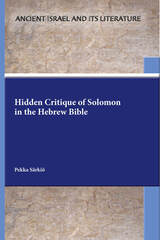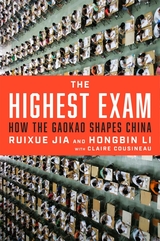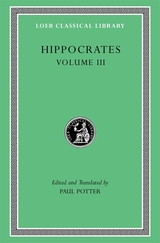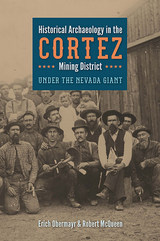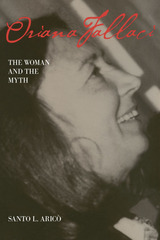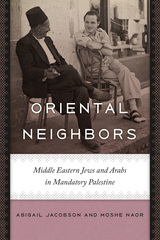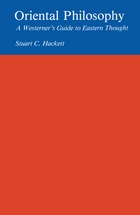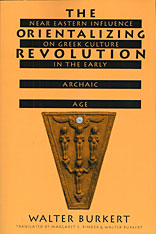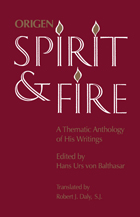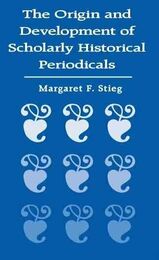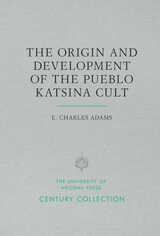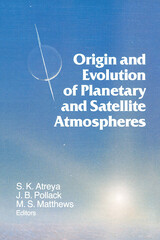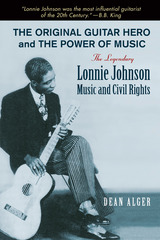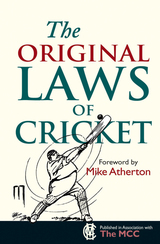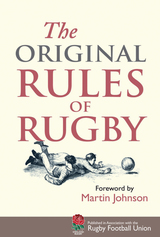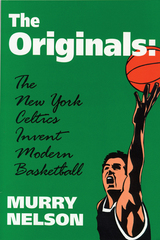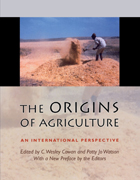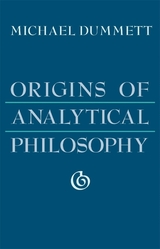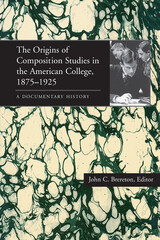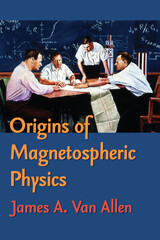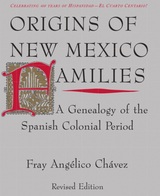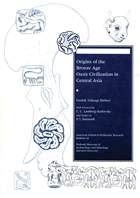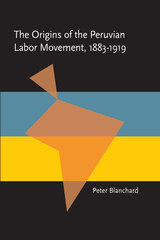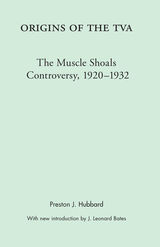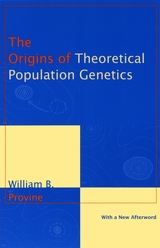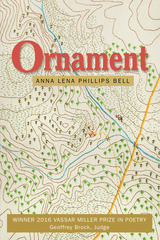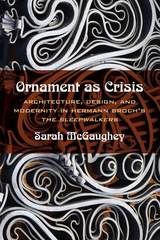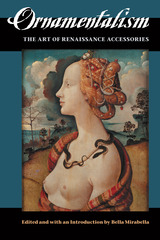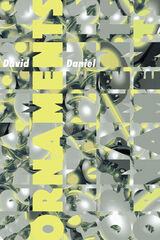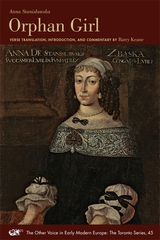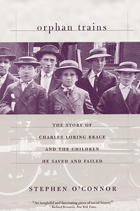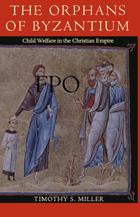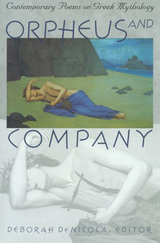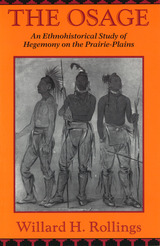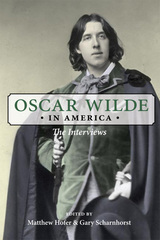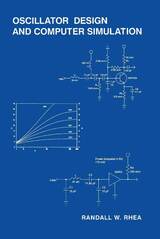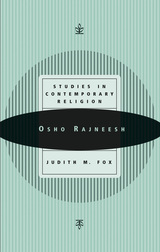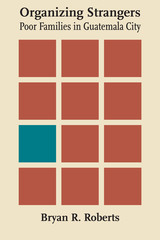 Organizing Strangers: Poor Families in Guatemala City
By Bryan R. Roberts
University of Texas Press, 1973 Bryan Roberts’ study of two poor neighborhoods of Guatemala City is an important contribution to the understanding of the urban social and power organization of underdeveloped countries. It is the first major study of any Central American urban population. Organizing Strangers gives an account of how poor people cope with an unstable and mobile urban environment, and case material is provided on the emergence of collective action among them. Several themes that are crucial to understanding the significance of urban growth in the underdeveloped world are explored: the impact of city life on rural migrants, the relationship between living in cities and the development of class consciousness, and the changing significance of personal relationships as a means of organizing social and economic life. Guatemala City’s rapid growth and low level of industrialization created a keen competition for jobs and available living space and inhibited the development of cohesive residential groupings. Thus the poor found themselves living and working with people who were mostly strangers. Trust is difficult to create in such an environment, and the absence of trust affected the capacity of the poor to organize themselves. While the poor were integrated into city life, the manner of their integration exposed them to greater exploitation than if they were truly socially isolated or marginal. Bryan Roberts analyzes a variety of formally organized voluntary associations involving the poor and concludes that such associations are essentially means by which middle- and upper-status groups seek to negotiate order among the poor. The problems faced by these poor families are due less to their own incapacities or inactivity than to the effects of economic and political relationships that exploit them locally, nationally, and even internationally. A major conclusion of this study is that the uncertainties in the relationships among poor people and between them and other social groups are the underlying causes of a general political and economic instability.
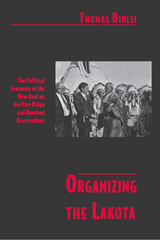 Organizing the Lakota: The Political Economy of the New Deal on the Pine Ridge and Rosebud Reservations
Thomas Biolsi
University of Arizona Press, 1992 In 1933 the United States Office of Indian Affairs began a major reform of Indian policy, organizing tribal governments under the provisions of the Indian Reorganization Act and turning over the administration of reservations to these new bodies. Organizing the Lakota considers the implementation of this act among the Lakota (Western Sioux or Teton Dakota) from 1933 through 1945.
Biolsi pays particular attention to the administrative means by which the OIA retained the power to design and implement tribal "self-government" as well as the power to control the flow of critical resources—rations, relief employment, credit—to the reservations. He also shows how this imbalance of power between the tribes and the federal bureaucracy influenced politics on the reservations, and argues that the crisis of authority faced by the Lakota tribal governments among their own would-be constituents—most dramatically demonstrated by the 1973 Wounded Knee occupation—is a direct result of their disempowerment by the United States.
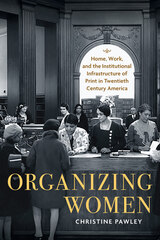 Organizing Women: Home, Work, and the Institutional Infrastructure of Print in Twentieth-Century America
Christine Pawley
University of Massachusetts Press, 2022 In the first decades of the twentieth century, print-centered organizations spread rapidly across the United States, providing more women than ever before with opportunities to participate in public life. While most organizations at the time were run by and for white men, women—both Black and white—were able to reshape their lives and their social worlds through their participation in these institutions. Organizing Women traces the histories of middle-class women—rural and urban, white and Black, married and unmarried—who used public and private institutions of print to tell their stories, expand their horizons, and further their ambitions. Drawing from a diverse range of examples, Christine Pawley introduces readers to women who ran branch libraries and library schools in Chicago and Madison, built radio empires from their midwestern farms, formed reading clubs, and published newsletters. In the process, we learn about the organizations themselves, from libraries and universities to the USDA extension service and the YWCA, and the ways in which women confronted gender discrimination and racial segregation in the course of their work.
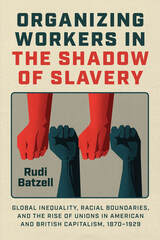 Organizing Workers in the Shadow of Slavery: Global Inequality, Racial Boundaries, and the Rise of Unions in American and British Capitalism, 1870–1929
Rudi Batzell
University of Chicago Press, 2025 An original analysis of the relationship between slavery and the labor movement in the late-nineteenth and early twentieth centuries.
During the rise of the labor movement in the late nineteenth century, why were American workers unable to organize inclusive trade unions like those formed by their counterparts in the United Kingdom? Comparing American and British capitalism in the port cities of Baltimore and Liverpool and the steel cities of Pittsburgh and Sheffield, Rudi Batzell reveals that the answer lies in the legacies of slavery and entrenched structures of racial inequality. Strikebreaking succeeded more often in the United States because landless Black Americans were, out of economic desperation, more likely to become scabs and fracture the class solidarity of any union movement. Batzell shows, in short, how racism was and is deeply connected to class, migration, and capitalism in a global economy marked by slavery and empire. In emphasizing the geography of economic inequality, this book offers new clarity on the late-nineteenth-century successes and failures of working-class formation. More broadly, Organizing Workers in the Shadow of Slavery makes it clear that the pursuit of justice today will require sustained economic reparations for slavery and colonialism.
 The Organs of J.S. Bach: A Handbook
Christoph Wolff and Markus Zepf
University of Illinois Press, 2012 The Organs of J. S. Bach is a comprehensive and fascinating guide to the organs encountered by Bach throughout Germany in his roles as organist, concert artist, examiner, teacher, and visitor. Newly revised and updated, the book's entries are listed alphabetically by geographical location, from Arnstadt to Zschortau, providing an easy-to-reference overview. Includes detailed organ-specific information: high-quality color photographs each instrument's history, its connection to Bach, and its disposition as Bach would have known it architectural histories of the churches housing the instruments identification of church organists Lynn Edwards Butler's graceful translation of Christoph Wolff and Markus Zepf's volume incorporates new research and many corrections and updates to the original German edition. Bibliographical references are updated to include English-language sources, and the translation includes an expanded essay by Christoph Wolff on Bach as organist, organ composer, and organ expert. The volume includes maps, a timeline of organ-related events, transcriptions of Bach's organ reports, a guide to examining organs attributed to Saxony's most famous organ builder Gottfried Silbermann, and biographical information on organ builders. Publication of this volume is supported by the American Bach Society.
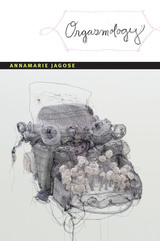 Orgasmology
Annamarie Jagose
Duke University Press, 2013 For all its vaunted attention to sexuality, queer theory has had relatively little to say about sex, the material and psychic practices through which erotic gratification is sought. In Orgasmology, Annamarie Jagose takes orgasm as her queer scholarly object. From simultaneous to fake orgasms, from medical imaging to pornographic visualization, from impersonal sexual publics to domestic erotic intimacies, Jagose traces the career of orgasm across the twentieth century. Along the way, she examines marriage manuals of the 1920s and 1930s, designed to teach heterosexual couples how to achieve simultaneous orgasms; provides a queer reading of behavioral modification practices of the 1960s and 1970s, aimed at transforming gay men into heterosexuals; and demonstrates how representations of orgasm have shaped ideas about sexuality and sexual identity. A confident and often counterintuitive engagement with feminist and queer traditions of critical thought, Orgasmology affords fresh perspectives on not just sex, sexual orientation, and histories of sexuality, but also agency, ethics, intimacy, modernity, selfhood, and sociality. As modern subjects, we presume we already know everything there is to know about orgasm. This elegantly argued book suggests that orgasm still has plenty to teach us.
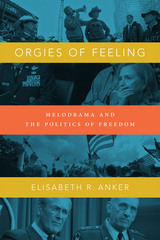 Orgies of Feeling: Melodrama and the Politics of Freedom
Elisabeth R. Anker
Duke University Press, 2014 Melodrama is not just a film or literary genre but a powerful political discourse that galvanizes national sentiment to legitimate state violence. Finding virtue in national suffering and heroism in sovereign action, melodramatic political discourses cast war and surveillance as moral imperatives for eradicating villainy and upholding freedom. In Orgies of Feeling, Elisabeth R. Anker boldly reframes political theories of sovereignty, freedom, and power by analyzing the work of melodrama and affect in contemporary politics. Arguing that melodrama animates desires for unconstrained power, Anker examines melodramatic discourses in the War on Terror, neoliberal politics, anticommunist rhetoric, Hollywood film, and post-Marxist critical theory. Building on Friedrich Nietzsche's notion of "orgies of feeling," in which overwhelming emotions displace commonplace experiences of vulnerability and powerlessness onto a dramatic story of injured freedom, Anker contends that the recent upsurge in melodrama in the United States is an indication of public discontent. Yet the discontent that melodrama reflects is ultimately an expression of the public's inability to overcome systemic exploitation and inequality rather than an alarmist response to inflated threats to the nation.
Oriana Fallaci: The Woman and the Myth
Santo L. Aricò
Southern Illinois University Press, 1998
Internationally acclaimed as a journalist, war correspondent, interviewer, and novelist, Oriana Fallaci’s public persona reached almost mythic proportions. It is a myth Fallaci herself created, according to Santo L. Aricò, who probes the psychological forces that motivated one of the twentieth century’s most famous and successful women writers.
Using his own extensive interviews with the writer, Aricò maps out Fallaci’s journey through life, paying particular attention to her ongoing and painstaking attempts to establish her own mythical status. He first examines her career as a literary journalist, emphasizing the high quality of her writing. From there, he concentrates on how Fallaci’s personal image began to emerge in her writings, as well as the way in which, through her powerful narratives, she catapulted herself into the public eye as her own main character.
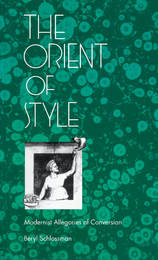 The Orient of Style: Modernist Allegories of Conversion
Beryl Schlossman
Duke University Press, 1991 In this study of modernist aesthetics, Beryl Schlossman reveals how for such writers as Marcel Proust, Gustave Flaubert, and Charles Baudelaire, the Orient came to symbolize the highest aspirations of literary representation. She demonstrates that through allegory, modernism became a style itself, a style that married the ancient and the modern and that emerged as both a cause and an effect, both an ideal construct and an textual materiality, all symbolized by the Orient—land of style, place of plurality, and site of the coexistence of holy lands.
Toward the end of Remembrance of Things Past, the narrator describes the act of creating a work of art as a conversion of sensation into a spiritual equivalent. By means of such allegories of “conversion,” Schlossman shows, the modernist artist disappeared within the work of art and left behind the trace of his sublime vocation, a vocation in which he was transformed, in Schlossman’s words, “into a kind of priest kneeling at the altar of beauty before the masked divinity of representation.”
The author shows how allegory—the representation of the symbolic as something real—was adapted by modernist writers to reflect subjectivity while masking an authorial origin. She reveals how modernist allegory arose, as Walter Benjamin suggests, at the crossroads of history, sociology, economics, urban architecture, and art—providing a kind of map of capitalism—and was produced through the eyes of a melancholic gazing at a “monument of absence.”
Oriental Neighbors: Middle Eastern Jews and Arabs in Mandatory Palestine
Abigail Jacobson and Moshe Naor
Brandeis University Press, 2016 Focusing on Oriental Jews and their relations with their Arab neighbors in Mandatory Palestine, this book analyzes the meaning of the hybrid Arab-Jewish identity that existed among Oriental Jews, and discusses their unique role as political, social, and cultural mediators between Jews and Arabs. Integrating Mandatory Palestine and its inhabitants into the contemporary Semitic-Levantine surroundings, Oriental Neighbors illuminates broad areas of cooperation and coexistence, which coincided with conflict and friction, between Oriental and Sephardi Jews and their Arab neighbors. The book brings the Oriental Jewish community to the fore, examines its role in the Zionist nation-building process, and studies its diverse and complex links with the Arab community in Palestine.
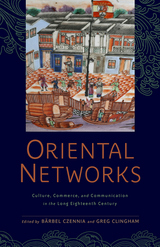 Oriental Networks: Culture, Commerce, and Communication in the Long Eighteenth Century
Bärbel Czennia
Bucknell University Press, 2021 Oriental Networks explores forms of interconnectedness between Western and Eastern hemispheres during the long eighteenth century, a period of improving transportation technology, expansion of intercultural contacts, and the emergence of a global economy. In eight case studies and a substantial introduction, the volume examines relationships between individuals and institutions, precursors to modern networks that engaged in forms of intercultural exchange. Addressing the exchange of cultural commodities (plants, animals, and artifacts), cultural practices and ideas, the roles of ambassadors and interlopers, and the literary and artistic representation of networks, networkers, and networking, contributors discuss the effects on people previously separated by vast geographical and cultural distance. Rather than idealizing networks as inherently superior to other forms of organization, Oriental Networks also considers Enlightenment expressions of resistance to networking that inform modern skepticism toward the concept of the global network and its politics. In doing so the volume contributes to the increasingly global understanding of culture and communication.
Published by Bucknell University Press. Distributed worldwide by Rutgers University Press.
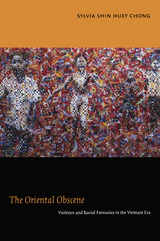 The Oriental Obscene: Violence and Racial Fantasies in the Vietnam Era
Sylvia Shin Huey Chong
Duke University Press, 2011 The Oriental Obscene is a sophisticated analysis of Americans’ reactions to visual representations of the Vietnam War, such as the photograph of the “napalm girl,” news footage of the Tet Offensive, and feature films from The Deer Hunter to Rambo: First Blood Part II. Sylvia Shin Huey Chong combines psychoanalytic and film theories with U.S. cultural history to explain what she terms the oriental obscene: racialized fantasies that Americans derived largely from images of Asians as the perpetrators or victims of extreme violence. Chong contends that these fantasies helped Americans to process the trauma of the Vietnam War, as well as the growth of the Asian American population after the Immigration and Nationality Act of 1965 and the postwar immigration of Southeast Asian refugees. The oriental obscene animated a wide range of political narratives, not only the movements for and against the war, but causes as diverse as the Black Power movement, law-and-order conservatism, second-wave feminism, and the nascent Asian American movement. During the Vietnam era, pictures of Asian bodies were used to make sense of race, violence, and America’s identity at home and abroad.
Oriental Philosophy
Stuart C. Hackett
University of Wisconsin Press, 1979 This insightful explication of oriental philosophy meets a long felt need for a critical introduction to four systems of eastern thought—Confucianism, Taoism, Buddhism, and Hinduism—presented in familiar western terms. Students of comparative religion, eastern philosophy and civilization, and the philosophy of religion who have been trained in traditional western modes of thought often find the intuitive and aphorisic quality of eastern writing a major stumbling block to understanding. This is eastern philosophy presented to westerners by a westerner, a practical and understandable guide for students and for others who wish to expand their understanding in this important area.
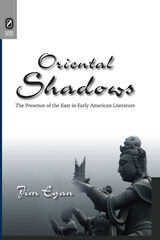 Oriental Shadows: The Presence of the East in Early American Literature
Jim Egan
Ohio State University Press, 2011 Through the use of several iconic early American authors (Anne Bradstreet, James Kirkpatrick, Benjamin Franklin, and Edgar Allan Poe), Jim Egan’s Oriental Shadows: The Presence of the East in Early American Literature explores the presence of “the East” in American writing. The specter of the East haunted the literature of colonial British America and the new United States, from the earliest promotional pamphlets to the most aesthetically sophisticated works of art of the American Renaissance. Figures of Persia, China, Arabia, and other Oriental people, places, and things played crucial roles in many British American literary works, serving as key images in early American writers’ efforts to demonstrate that early American culture could match—and perhaps even surpass—European standards of refinement. These writers offered the East as a solution to America’s perceived inferior civilized status by suggesting that America become more civilized not by becoming more European but instead by adopting aesthetic styles and standards long associated with an East cast as superior aesthetically to both America and Europe.
In bringing to light this largely overlooked archive of images within the American literary canon, Oriental Shadows suggests that the East played a key role in the emergence of a distinctively American literary tradition and, further, that early American identity was born as much from figures of the East as it was from the colonists’ encounters with the frontier.
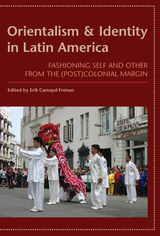 Orientalism and Identity in Latin America: Fashioning Self and Other from the (Post)Colonial Margin
Edited by Erik Camayd-Freixas
University of Arizona Press, 2013 Building on the pioneering work of Edward Said in fresh and useful ways, contributors to this volume consider both historical contacts and literary influences in the formation of Latin American constructs of the “Orient” and the “Self” from colonial times to the present. In the process, they unveil wide-ranging manifestations of Orientalism. Contributors scrutinize the “other” great encounter, not with Europeans but with Arabic, Chinese, and Japanese cultures, as they marked Latin American societies from Mexico, Central America, and the Caribbean to Peru, Argentina, and Brazil. The perspectives, experiences, and theories presented in these examples offer a comprehensive framework for understanding wide-ranging manifestations of Orientalism in Latin America and elsewhere in the developing world. Orientalism and Identity in Latin America expands current theoretical frameworks, juxtaposing historical, biographical, and literary depictions of Middle Eastern and Asian migrations, both of people and cultural elements, as they have been received, perceived, refashioned, and integrated into Latin American discourses of identity and difference. Underlying this intercultural dialogue is the hypothesis that the discourse of Orientalism and the process of Orientalization apply equally to Near Eastern and Far Eastern subjects as well as to immigrants, regardless of provenance—and indeed to any individual or group who might be construed as “Other” by a particular dominant culture.
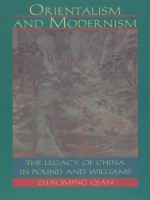 Orientalism and Modernism: The Legacy of China in Pound and Williams
Zhaoming Qian
Duke University Press, 1995 Chinese culture held a well-known fascination for modernist poets like Ezra Pound and William Carlos Williams. What is less known but is made fully clear by Zhaoming Qian is the degree to which oriental culture made these poets the modernists they became. This ambitious and illuminating study shows that Orientalism, no less than French symbolism and Italian culture, is a constitutive element of Modernism.
Consulting rare and unpublished materials, Qian traces Pound’s and Williams’s remarkable dialogues with the great Chinese poets—Qu Yuan, Li Bo, Wang Wei, and Bo Juyi—between 1913 and 1923. His investigation reveals that these exchanges contributed more than topical and thematic ideas to the Americans’ work and suggests that their progressively modernist style is directly linked to a steadily growing contact and affinity for similar Chinese styles. He demonstrates, for example, how such influences as the ethics of pictorial representation, the style of ellipsis, allusion, and juxtaposition, and the Taoist/Zen–Buddhist notion of nonbeing/being made their way into Pound’s pre-Fenollosan Chinese adaptations, Cathay, Lustra, and the Early Cantos, as well as Williams’s Sour Grapes and Spring and All. Developing a new interpretation of important work by Pound and Williams, Orientalism and Modernism fills a significant gap in accounts of American Modernism, which can be seen here for the first time in its truly multicultural character.
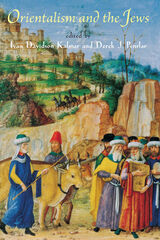 Orientalism and the Jews
Edited by Ivan Davidson Kalmar and Derek Penslar
Brandeis University Press, 2004 At the turn of the twenty-first century, in spite of growing globalization there remains in the world a split between the West and the rest. The manner in which this split has been imagined and represented in Western civilization has been the subject of intense cross-disciplinary scrutiny, much of it under the rubric of “orientalism.” This debate, sparked by the 1978 publication of Edward Said’s Orientalism identifies the “Orient” as the Islamic world and to a lesser extent Hindu India. “Orientalism” signifies the way the West imagined this terrain. Going beyond Said’s framework, in their introduction to the volume, Kalmar and Penslar argue that orientalism is based on the Christian West’s attempts to understand and manage its relations with both of its monotheistic Others—Muslims and Jews. According to the editors, Jews have almost always been present whenever occidentals talked about or imagined the East; and the Western image of the Muslim Orient has been formed and continues to be formed in inextricable conjunction with Western perceptions of the Jewish people. Bringing together essays by an array of international scholars in a wide range of disciplines, Orientalism and the Jews demonstrates that, since the Middle Ages, Jews have been seen in the Western world as both occidental and oriental. Jews formed the model for medieval depictions of Muslim warriors. Representations of biblical Jews in early modern Europe provided essential sustenance for Western fictions about the Muslim world. And many of the Western protagonists of imperialism “discovered” real or imaginary Jews wherever their expeditions took them. Today orientalist attitudes by Israelis target not only Arabs but also the mizrahi (“oriental”) Israelis with roots in the Arab world as Others.
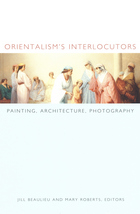 Orientalism's Interlocutors: Painting, Architecture, Photography
Jill Beaulieu and Mary Roberts, eds.
Duke University Press, 2002 Until now, Orientalist art—exemplified by paintings of harems, slave markets, or bazaars—has predominantly been understood to reflect Western interpretations and to perpetuate reductive, often demeaning stereotypes of the exotic East. Orientalism's Interlocutors contests the idea that Orientalist art simply expresses the politics of Western domination and argues instead that it was often produced through cross-cultural interactions. Focusing on paintings and other representations of North African and Ottoman cultures, by both local artists and westerners, the contributors contend that the stylistic similarities between indigenous and Western Orientalist art mask profound interpretive differences, which, on examination, can reveal a visual language of resistance to colonization. The essays also demonstrate how marginalized voices and viewpoints—especially women's—within Western Orientalism decentered and destabilized colonial authority. Looking at the political significance of cross-cultural encounters refracted through the visual languages of Orientalism, the contributors engage with pressing recent debates about indigenous agency, postcolonial identity, and gendered subjectivities. The very range of artists, styles, and forms discussed in this collection broadens contemporary understandings of Orientalist art. Among the artists considered are the Algerian painters Azouaou Mammeri and Mohammed Racim; Turkish painter Osman Hamdi; British landscape painter Barbara Bodichon; and the French painter Henri Regnault. From the liminal "Third Space" created by mosques in postcolonial Britain to the ways nineteenth-century harem women negotiated their portraits by British artists, the essays in this collection force a rethinking of the Orientalist canon. This innovative volume will appeal to those interested in art history, theories of gender, and postcolonial studies. Contributors. Jill Beaulieu, Roger Benjamin, Zeynep Çelik, Deborah Cherry, Hollis Clayson, Mark Crinson, Mary Roberts
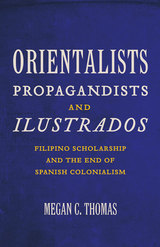 Orientalists, Propagandists, and Ilustrados: Filipino Scholarship and the End of Spanish Colonialism
Megan C. Thomas
University of Minnesota Press, 2012 The writings of a small group of scholars known as the ilustrados are often credited for providing intellectual grounding for the Philippine Revolution of 1896. Megan C. Thomas shows that the ilustrados’ anticolonial project of defining and constructing the “Filipino” involved Orientalist and racialist discourses that are usually ascribed to colonial projects, not anticolonial ones. According to Thomas, the work of the ilustrados uncovers the surprisingly blurry boundary between nationalist and colonialist thought. By any measure, there was an extraordinary flowering of scholarly writing about the peoples and history of the Philippines in the decade or so preceding the revolution. In reexamining the works of the scholars José Rizal, Pardo de Tavera, Isabelo de los Reyes, Pedro Paterno, Pedro Serrano Laktaw, and Mariano Ponce, Thomas situates their writings in a broader account of intellectual ideas and politics migrating and transmuting across borders. She reveals how the ilustrados both drew from and refashioned the tools and concepts of Orientalist scholarship from Europe. Interrogating the terms “nationalist” and “nationalism,” whose definitions are usually constructed in the present and then applied to the past, Thomas offers new models for studying nationalist thought in the colonial world.
The Orientalizing Revolution: Near Eastern Influence on Greek Culture in the Early Archaic Age
Walter Burkert
Harvard University Press, 1992 The splendid culture of the ancient Greeks has often been described as emerging like a miracle from a genius of its own, owing practically nothing to its neighbors. Walter Burkert offers a decisive argument against that distorted view, pointing toward a balanced picture of the archaic period “in which, under the influence of the Semitic East—from writers, craftsmen, merchants, healers—Greek culture began its unique flowering, soon to assume cultural hegemony in the Mediterranean.”
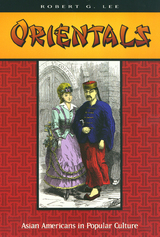 Orientals
Robert Lee
Temple University Press, 1999 Sooner or later every Asian American must deal with the question "Where do you come from?" It is probably the most familiar if least aggressive form of racism. It is a tip-off to the persistent notion that people of Asian ancestry are not real Americans, that "Orientals" never really stop being loyal to their foreign homeland, no matter how long they or their families have been in this country. Confronting the cultural stereotypes that have been attached to Asian Americans over the last 150 years, Robert G. Lee seizes the label "Oriental" and asks where it came from.
The idea of Asians as mysterious strangers who could not be assimilated into the cultural mainstream was percolating to the surface of American popular culture in the mid-nineteenth century, when Chinese immigrant laborers began to arrive in this country in large numbers. Lee shows how the bewildering array of racialized images first proffered by music hall songsters and social commentators have evolved and become generalized to all Asian Americans, coalescing in particular stereotypes. Whether represented as Pollutant, Coolie, Deviant, Yellow Peril, Model Minority, or Gook, the Oriental is portrayed as alien and a threat to the American family -- the nation writ small.
Refusing to balance positive and negative stereotypes, Lee connects these stereotypes to particular historical moments, each marked by shifting class relations and cultural crises. Seen as products of history and racial politics, the images that have prevailed in songs, fiction, films, and nonfiction polemics are contradictory and complex. Lee probes into clashing images of Asians as (for instance) seductively exotic or devious despoilers of (white) racial purity, admirably industrious or an insidious threat to native laborers. When Lee dissects the ridiculous, villainous, or pathetic characters that amused or alarmed the American public, he finds nothing generated by the real Asian American experience; whether they come from the Gold Rush camps or Hollywood films or the cover of Newsweek, these inhuman images are manufactured to play out America's racial myths.
Orientals comes to grips with the ways that racial stereotypes come into being and serve the purposes of the dominant culture.
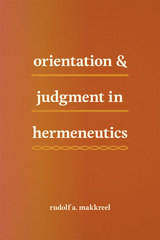 Orientation and Judgment in Hermeneutics
Rudolf A. Makkreel
University of Chicago Press, 2015 This book provides an innovative approach to meeting the challenges faced by philosophical hermeneutics in interpreting an ever-changing and multicultural world. Rudolf A. Makkreel proposes an orientational and reflective conception of interpretation in which judgment plays a central role. Moving beyond the dialogical approaches found in much of contemporary hermeneutics, he focuses instead on the diagnostic use of reflective judgment, not only to discern the differentiating features of the phenomena to be understood, but also to orient us to the various meaning contexts that can frame their interpretation.
Makkreel develops overlooked resources of Kant’s transcendental thought in order to reconceive hermeneutics as a critical inquiry into the appropriate contextual conditions of understanding and interpretation. He shows that a crucial task of hermeneutical critique is to establish priorities among the contexts that may be brought to bear on the interpretation of history and culture. The final chapter turns to the contemporary art scene and explores how orientational contexts can be reconfigured to respond to the ways in which media of communication are being transformed by digital technology. Altogether, Makkreel offers a promising way of thinking about the shifting contexts that we bring to bear on interpretations of all kinds, whether of texts, art works, or the world.
 Orientations: An Anthology of European Travel Writing on Europe
Wendy Bracewell
Central European University Press, 2009 Excerpts from over 100 travel writings of Europe, from 16th c. pilgrimage diaries thru early specimens of modern tourism accounts to 20th c. impressions from the other side of the Iron Curtain By focusing on east European travel writings, this work enlarges both the documentary base and the terms of the debate over a rich source for discussions of identities and mentalities; knowledge and power; gender; and cultural change. The texts – chosen for their relevance, but literary criteria have also been taken into account – illustrate the variety of ways in which east Europeans have written about the West. Most of the material is presented in English for the first time or, in a few cases, rescued from dusty oblivion in long out-of-print volumes. Each text is introduced with a short passage placing it in context. This is the first volume of the three-part set East Looks West. Vol. 2. Under Eastern Eyes. A Comparative Introduction to East European Travel Writing on Europe, 1550–2000; Vol. 3. A Bibliography of East European Travel Writing on Europe.
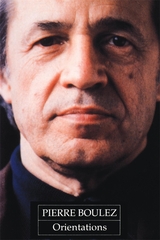 Orientations: Collected Writings
Pierre Boulez
Harvard University Press, 1986 Pierre Boulez is one of the most influential—and controversial—figures in the world of contemporary music. As composer, conductor, and critic, his challenging views of modern developments are lent a special authority by his high standing as an interpreter of classic composers. Orientations will enhance his reputation as a lucid expositor of the modern composer's world.
When writing about composing and analysis Boulez forges a new way of thinking about music. He is immensely illuminating about his own compositions. He offers special insight on composers with whom he has been particularly associated as a conductor—including Berlioz, Debussy, Wagner, Mahler, Schoenberg, Stravinsky, and Messiaen. And he writes about performance and orchestras, tackling the question of how to make new music more familiar for the concert-goer. This rich and wide-ranging volume is truly a special resource for everyone wanting to learn more about twentieth-century music.
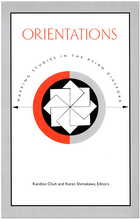 Orientations: Mapping Studies in the Asian Diaspora
Kandice Chuh and Karen Shimakawa, eds.
Duke University Press, 2001 Asian and Asian American studies emerged, respectively, from Cold War and social protest ideologies. Yet, in the context of contemporary globalization, can these ideological distinctions remain in place? Suggesting new directions for studies of the Asian diaspora, the prominent scholars who contribute to this volume raise important questions about the genealogies of these fields, their mutual imbrication, and their relationship to other disciplinary formations, including American and ethnic studies. With its recurrent themes of transnationalism, globalization, and postcoloniality, Orientations considers various embodiments of the Asian diaspora, including a rumination on minority discourses and performance studies, and a historical look at the journal Amerasia. Exploring the translation of knowledge from one community to another, other contributions consider such issues as Filipino immigrants’ strategies for enacting Asian American subjectivity and the link between area studies and the journal Subaltern Studies. In a section that focuses on how disciplines—or borders—form, one essay discusses “orientalist melancholy,” while another focuses on the construction of the Asian American persona during the Cold War. Other topics in the volume include the role Asian immigrants play in U.S. racial politics, Japanese American identity in postwar Japan, Asian American theater, and the effects of Asian and Asian American studies on constructions of American identity. Contributors. Dipesh Chakrabarty, Kuan-Hsing Chen, Rey Chow, Kandice Chuh, Sharon Hom, Yoshikuni Igarashi, Dorinne Kondo, Russell Leong, George Lipsitz, Lisa Lowe, Martin F. Manalansan IV, David Palumbo-Liu, R. Radhakrishnan, Karen Shimakawa, Sau-ling C. Wong
 Orienting to Chance: Probabilism and the Future of Social Theory
Michael Strand and Omar Lizardo
University of Chicago Press, 2025 Explores the implications of chance and uncertainty in social theory and offers a new interpretation of the sociological canon.
Since the founding of the discipline, sociologists have endeavored to understand the structures of groups, organizations, and societies, and how these entities condition our behavior. While some of the foundational theorists saw these processes as largely deterministic, sociological theory has increasingly insisted on the importance of culture in shaping our position in and responses to social groups. In Orienting to Chance, sociologists Michael Strand and Omar Lizardo aim to show that the social order bears an unmistakable link to chance and urge us to think about how it conditions our actions.
Strand and Lizardo provide a sweeping overview of a new social theory framework that they call probabilism. Using examples of probabilism in sociology, particularly in the work of Max Weber, W. E. B. Du Bois, and Pierre Bourdieu, they describe probabilism’s place in multiple fields of science. As the authors argue, their effort at redefinition and recovery helps position sociology as a field of the future, while also keeping it grounded in core issues of action, structure, culture, inequality, and inequity. By sharing these groundbreaking insights and revealing wider theoretical claims about mortality, fate, and technology in the contemporary era, Strand and Lizardo demonstrate how probabilism is an essential intervention for understanding the inevitable role of uncertainty in social life.
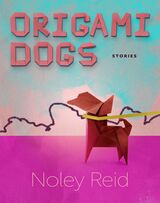 Origami Dogs: Stories
Noley Reid
Autumn House Press, 2023 Stories of characters who face tragedies alongside their canine companions.
Noley Reid’s fourth book, Origami Dogs, is a testament to her mastery of the form. Here, dogs rove the grounds of their companions’ emotions. The creatures in this short story collection often act subtly, serving as witnesses without language, exacerbating tension and providing relief to the human characters. Sometimes they are central to the stories’ plots, such as in the lead story, “Origami Dogs,” which focuses on Iris Garr, a dog breeder’s teenage daughter, as she begins noticing odd birth defects in new litters and realizes she must confront her mother, whom she loves yet cannot help but resent. In some stories, teens struggle toward womanhood or wrestle with sexuality and queerness, confronting parents who are unable to provide the care or support they need. In other stories, Reid’s characters are adults striving to be better spouses, parents, or both, and are often grappling with life-changing events—like a new disability or the loss of a child. Despite the gravitas of these tragedies, with Reid’s touch, they feel alive, present, and painfully close. Reid brings us to her characters in the fierce damp aftermath of calamity and asks us to dwell with them until new possibilities arrive.
At these tipping points, the characters of Origami Dogs stand ready with their dogs (or memories of them), to take the next step. By turns tender, moving, and devastating, this story collection is a celebration of the bond of devotion possible between humans and dogs, and it presents an intimate rendering of the lives we share.
 Origen and the History of Justification: The Legacy of Origen's Commentary on Romans
Thomas P. Scheck
University of Notre Dame Press, 2008
Standard accounts of the history of interpretation of Paul’s Letter to the Romans often begin with St. Augustine. As Thomas P. Scheck demonstrates, however, the Commentary on the Epistle to the Romans by Origen of Alexandria (185-254 CE) was a major work of Pauline exegesis which, by means of the Latin translation preserved in the West, had a significant influence on the Christian exegetical tradition.
Scheck begins by exploring Origen’s views on justification and on the intimate connection of faith and post-baptismal good works as essential to justification. He traces the enormous influence Origen’s Commentary on Romans had on later theologians in the Latin West, including the ways in which theologians often appropriated Origen’s exegesis in their own work. Scheck analyzes in particular the reception of Origen by Pelagius, Augustine, William of St. Thierry, Erasmus, Cornelius Jansen, the Anglican Bishop Richard Montagu, and the Catholic lay apologist John Heigham, as well as Martin Luther, Philip Melanchthon, and other Protestant Reformers who harshly attacked Origen’s interpretation as fatally flawed. But as Scheck shows, theologians through the post-Reformation controversies of the sixteenth and seventeenth centuries studied and engaged Origen extensively, even if not always in agreement.
An important work in patristics, biblical interpretation, and historical theology, Origen and the History of Justification establishes the formative role played by Origen’s Pauline exegesis, while also contributing to our understanding of the theological issues surrounding justification in the western Christian tradition.
“Thomas Scheck's Origen and the History of Justification is first of all invaluable for increasing readers' exposure to a primary text of an exegete and theologian who will always be very relevant for the church—Origen. Second, this work is invaluable for presenting all sides of the debate today on the meaning of justification. All who weigh in on the doctrine of justification must consult this work in order to understand the seismic quakes that still affect Christians' balance on this issue. And third, since this book focuses on Origen's Romans commentary, it must be read by all Romans students who want to be able to discern the magnetic fields that still powerfully pull readers of Paul's letter in different directions.” —Mark Reasoner, Bethel University
“The interpretation of Paul’s Letter to the Romans has been a central and continuing preoccupation in the western Christian tradition. Origen’s contribution to its interpretation was seminal, subtle, and suggestive. But the expansiveness of Origen’s Commentary on Romans, combined with later controversies about Origen’s views, appears to have inhibited scholars from tracing the reception of Origen’s commentary in the West. Thomas P. Scheck’s book ably and admirably remedies this oversight.“ —Theodore de Bruyn, University of Ottawa
“Thomas Scheck demonstrates the range of Origen's influence and establishes his as the real alternative to the Augustinian understanding of the divine operation in Christians. His study raises again the questions posed by Robert O'Connell of Augustine's appropriation of and dissent from Origen. In each chapter, Scheck both reports and advances the existing scholarship on Origen's influence.” —Patout Burns, Vanderbilt Divinity School
The Origin and Development of Scholarly Historical Periodicals
Margaret F. Stieg
University of Alabama Press, 2005 "This is a pioneering study and represents a major undertaking. . . . Stieg succeeds in making intelligible the diffuse and highly diversified nature of the historical periodical. At minimum, this title should be required reading of all history graduate students in methodology courses. Many senior historians would also benefit from a review of its contents. . . . Information and library science students specializing in scholarly communication should digest the entire study." —Journal of Education for Library and Information Science
The Origin and Development of the Pueblo Katsina Cult
E. Charles Adams
University of Arizona Press, 1991 Examines the concept of the katsina and the religion that developed around it, focusing on what makes katsinas unique, why the concept was developed, and what adaptive value it had for prehistoric Pueblo culture.
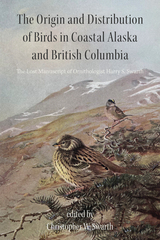 The Origin and Distribution of Birds in Coastal Alaska and British Columbia: The Lost Manuscript of Ornithologist Harry S. Swarth
Christopher W. Swarth
Oregon State University Press, 2022 At the time of his death in 1935, Harry S. Swarth, head of the Mammalogy and Ornithology Departments at the California Academy of Sciences in San Francisco, had been preparing a manuscript reflecting on twenty-five years of his research in coastal Alaska and British Columbia. “The Distribution and Migrations of Birds in Adjacent Alaska and British Columbia” summarized Swarth’s research, ideas, and conjectures on the bird life in the region, including theories about when and how birds populated this vast territory after the retreat of glaciers near the end of the Pleistocene. Drawing on his field experiences and his forty published scientific papers, Swarth’s manuscript represented state-of-the-art science for the time. And his ideas hold up; his papers are still cited by ornithologists today.
In 2019, Christopher Swarth, Harry’s grandson and a scientist in his own right, discovered the forgotten manuscript. This book includes the original unpublished manuscript, accompanied by contextual essays from contemporary ornithologists who examine the impact and relevance of Swarth’s research on coastal bird diversity, fox sparrow migration, and the systematic puzzle of the timberline sparrow. Expedition maps display field camps and exploration routes, and species checklists illustrate the variety of birds observed at key field sites. To bring additional color and insight, The Origin and Distribution of Birds in Coastal Alaska and British Columbia also includes excerpts from Harry Swarth’s field notes, a comprehensive list of Harry Swarth’s publications, and a glossary with historic and contemporary bird names. Naturalists, ornithologists, birders, and all those who want to learn more about the natural history of the region will delight in the rediscovery of this long-lost treasure.
Origin and Evolution of Planetary and Satellite Atmospheres
Edited by S. K. Atreya, J. B. Pollack, and M.S. Matthews
University of Arizona Press, 1989 An integrated discussion of the similarities and differences between the atmospheres of various bodies of the solar system, including the Earth.
 The Origin of Empire: Rome from the Republic to Hadrian
David Potter
Harvard University Press, 2019 Beginning with the Roman army’s first foray beyond its borders and concluding with the death of Hadrian in 138 CE, this panoramic history of the early Roman Empire recounts the wars, leaders, and social transformations that lay the foundations of imperial success.
Between 264 BCE, when the Roman army crossed into Sicily, and the death of Hadrian nearly three hundred years later, Rome became one of the most successful multicultural empires in history. In this vivid guide to a fascinating period, David Potter explores the transformations that occurred along the way, as Rome went from republic to mercenary state to bureaucratic empire, from that initial step across the Straits of Messina to the peak of territorial expansion.
Rome was shaped by endless political and diplomatic jockeying. As other Italian city-states relinquished sovereignty in exchange for an ironclad guarantee of protection, Rome did not simply dominate its potential rivals—it absorbed them by selectively offering citizenship and constructing a tiered membership scheme that allowed Roman citizens to maintain political control without excluding noncitizens from the state’s success. Potter attributes the empire’s ethnic harmony to its relative openness.
This imperial policy adapted and persisted over centuries of internal discord. The fall of the republican aristocracy led to the growth of mercenary armies and to the creation of a privatized and militarized state that reached full expression under Julius Caesar. Subsequently, Augustus built a mighty bureaucracy, which went on to manage an empire ruled by a series of inattentive, intemperate, and bullying chief executives. As contemporary parallels become hard to ignore, The Origin of Empire makes clear that the Romans still have much to teach us about power, governance, and leadership.
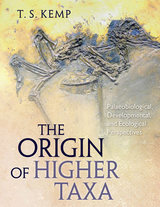 The Origin of Higher Taxa: Palaeobiological, Developmental, and Ecological Perspectives
T. S. Kemp
University of Chicago Press, 2015 In the grand sweep of evolution, the origin of radically new kinds of organisms in the fossil record is the result of a relatively simple process: natural selection marching through the ages. Or is it? Does Darwinian evolution acting over a sufficiently long period of time really offer a complete explanation, or are unusual genetic events and particular environmental and ecological circumstances also involved? With The Origin of Higher Taxa, Tom Kemp sifts through the layers of paleobiological, genetic, and ecological evidence on a quest to answer this essential, game-changing question of biology.
Looking beyond the microevolutionary force of Darwinian natural selection, Kemp enters the realm of macroevolution, or evolution above the species level. From the origin of mammals to the radiation of flowering plants, these large-scale patterns—such as the rise of novel organismal design, adaptive radiations, and lineage extinctions—encompass the most significant trends and transformations in evolution. As macroevolution cannot be studied by direct observation and experiment, scientists have to rely on the outcome of evolution as evidence for the processes at work, in the form of patterns of species appearances and extinctions in a spotty fossil record, and through the nature of species extant today. Marshalling a wealth of new fossil and molecular evidence and increasingly sophisticated techniques for their study, Kemp here offers a timely and original reinterpretation of how higher taxa such as arthropods, mollusks, mammals, birds, and whales evolved—a bold new take on the history of life.
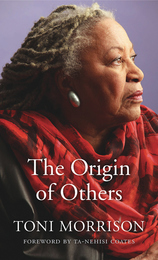 The Origin of Others
Toni Morrison
Harvard University Press, 2017 “The Origin of Others combines Toni Morrison’s accustomed eloquence with meaning for our times as citizens of the world.” —Nell Irvin Painter, New Republic
America’s foremost novelist reflects on the themes that preoccupy her work and increasingly dominate national and world politics: race, fear, borders, the mass movement of peoples, the desire for belonging. What is race and why does it matter? What motivates the human tendency to construct Others? Why does the presence of Others make us so afraid?
Drawing on her Norton Lectures, Toni Morrison takes up these and other vital questions bearing on identity in The Origin of Others. In her search for answers, the novelist considers her own memories as well as history, politics, and especially literature. Harriet Beecher Stowe, Ernest Hemingway, William Faulkner, Flannery O’Connor, and Camara Laye are among the authors she examines. Readers of Morrison’s fiction will welcome her discussions of some of her most celebrated books—Beloved, Paradise, and A Mercy.
If we learn racism by example, then literature plays an important part in the history of race in America, both negatively and positively. Morrison writes about nineteenth-century literary efforts to romance slavery, contrasting them with the scientific racism of Samuel Cartwright and the banal diaries of the plantation overseer and slaveholder Thomas Thistlewood. She looks at configurations of blackness, notions of racial purity, and the ways in which literature employs skin color to reveal character or drive narrative. Expanding the scope of her concern, she also addresses globalization and the mass movement of peoples in this century. National Book Award winner Ta-Nehisi Coates provides a foreword to Morrison’s most personal work of nonfiction to date.
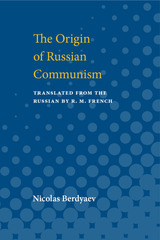 Origin of Russian Communism
Nicolas Berdyaev
University of Michigan Press, 1959 Nicolas Berdyaev's The Origin of Russian Communism is a pivotal work that delves into the dual nature of Russian Communism—both international and distinctly Russian. Berdyaev emphasizes the importance of understanding the national roots of Russian Communism, shaped by Russia's tumultuous history and Eastern spiritual makeup. The book navigates through the formation of the Russian intelligentsia, Russian socialism and nihilism, narodnichestvo and anarchism, and 19th-century literature's predictions. Key sections of the work explore the dynamics between classical Marxism, Russian Marxism, and the revolution, as well as the intricate relationship between communism and Christianity. Through an in-depth analysis, Berdyaev illustrates how Russian history, characterized by its vast territory and cultural complexities, influenced the development of a unique form of communism intertwined with ideological, religious, and nationalistic elements.
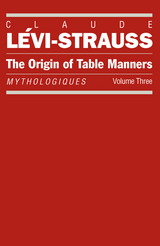 The Origin of Table Manners: Mythologiques, Volume 3
Claude Lévi-Strauss
University of Chicago Press, 1990 "The Origin of Table Manners is the third volume of a tetralogy devoted to American Indian mythology. Unlike the first two volumes (The Raw and the Cooked, From Honey to Ashes), which are devoted to South American myths, the present one establishes relations with North America, which is the subject of the fourth (The Naked Man). . . . In the course of the analysis, the myths link up with ideas of more general interest. Thus, we find discussions of numeration, of morals, and of the origin of the novel. . . . The Origin of Table Manners is thus of special interest to students of American Indian mythology, although it contains ideas of interest to other fields and even to the general reader."—Daniel C. Raffalovich, American Anthropologist
"An immense anthropological erudition is here wielded by one of the world's finest minds, and the myths themselves have never been taken more seriously. . . . [Lévi-Strauss] raises issues and then resolves them with the suspenseful cunning of a mystery novelist."—John Updike, New Yorker
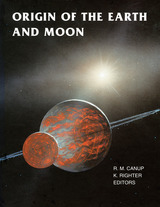 Origin of the Earth and Moon
Edited by R. M. Canup and K. Righter
University of Arizona Press, 2000 The age-old question of how our home planet and its satellite originated has in recent times undergone a minor revolution. The emergence of the "giant impact theory" as the most successful model for the origin of the Moon has been difficult to reconcile with some aspects of the Earth, and the development of an integrated model for the origin of the Earth-Moon system has been difficult for this reason. However, recent technical advances in experimental and isotopic work, together with intensified interest in the modeling of planetary dynamics, have produced a wealth of new results requiring a rethinking of models for the origin of the Earth and Moon.
This book is intended to serve as a resource for those scientists working closely in this field, while at the same time it provides enough balance and depth to offer an introduction for students or technically minded general readers. Its thirty chapters address isotopic and chemical constraints on accretion, the dynamics of terrestrial planet formation, the impact-triggered formation of the Earth-Moon system, differentiation of the Earth and Moon, the origin of terrestrial volatiles, and conditions on the young Earth and Moon.
Covering such subjects as the history and origin of the Moon's orbit, water on the Earth, and the implications of Earth-Moon interactions for terrestrial climate and life, the book constitutes a state-of-the-art overview of the most recent investigations in the field. Although many advances have been made in our ability to evaluate competing models of the formation of the Earth-Moon system, there are still many gaps in our understanding. This book makes great strides toward closing those gaps by highlighting the extensive progress that has been made and pointing toward future research.
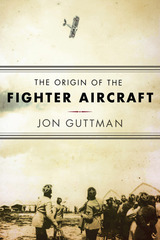 The Origin of the Fighter Aircraft
Jon Guttman
Westholme Publishing, 2009 From Scouts to Balloon-busters, the Emergence of Air-to-Air Combat in World War I
When World War I began in August 1914, the airplane had already proven its worth as an intelligence gathering “eye-in-the-sky.” These scouting aircraft soon became indispensable to armies on both sides, and the attempt to drive enemy planes away began in earnest. Local air superiority was incorporated into battlefield strategy, and the use of aircraft to conduct offensive operations would change warfare as dramatically as the first firearms 300 years before. By the end of 1915, the basic formula of the armed scout settled on a single-seater with a machine gun synchronized to fire through its propeller blades. This heavily armed aircraft became the first true fighter plane whose primary function was to destroy enemy aircraft, whether scouts, balloons, bombers, or other fighters. A new glamorized “knight of the air” was born: the ace, a fighter pilot who brought down five or more opponents. From 1916 on, as the combatants relied on airplanes more, flying tactics and strategy—including mass formations—were developed for what would become a deadly struggle for complete air superiority. By 1918, the final year of the war, air battles could be as sprawling as those on the ground. In The Origin of the Fighter Aircraft, historian Jon Guttman tells the engrossing story of how one of the most amazing inventions became a integral component of warfare. Balancing technical description, personalities, and battle accounts, the author demonstrates that by the end of World War I most of the fundamentals for modern aerial combat had been established.
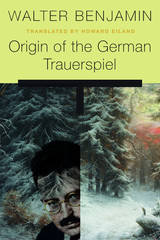 Origin of the German Trauerspiel
Walter Benjamin
Harvard University Press, 2019 Origin of the German Trauerspiel was Walter Benjamin’s first full, historically oriented analysis of modernity. Readers of English know it as “The Origin of German Tragic Drama,” but in fact the subject is something else—the play of mourning. Howard Eiland’s completely new English translation, the first since 1977, is closer to the German text and more consistent with Benjamin’s philosophical idiom.
Focusing on the extravagant seventeenth-century theatrical genre of the trauerspiel, precursor of the opera, Benjamin identifies allegory as the constitutive trope of the Baroque and of modernity itself. Allegorical perception bespeaks a world of mutability and equivocation, a melancholy sense of eternal transience without access to the transcendentals of the medieval mystery plays—though no less haunted and bedeviled. History as trauerspiel is the condition as well as subject of modern allegory in its inscription of the abyssal.
Benjamin’s investigation of the trauerspiel includes German texts and late Renaissance European drama such as Hamlet and Calderón’s Life Is a Dream. The prologue is one of his most important and difficult pieces of writing. It lays out his method of indirection and his idea of the “constellation” as a key means of grasping the world, making dynamic unities out of the myriad bits of daily life. Thoroughly annotated with a philological and historical introduction and other explanatory and supplementary material, this rigorous and elegant new translation brings fresh understanding to a cardinal work by one of the twentieth century’s greatest literary critics.
The Origin of the Right of Fishery in Territorial Waters
Percy Thomas Fenn Jr.
Harvard University Press The period of origins for legal theories concerning maritime jurisdiction of fisheries is from the earliest expression of a theory of the legal status of the sea—or a little before—to 1648, the year of the Treaty of Westphalia, when all the theories concerned with this subject and with maritime jurisdiction of fisheries reached their maturity, or at least their point of extreme development. This is the period to which Percy Thomas Fenn has sharply limited his study—a field that has hitherto been practically untouched. The footnotes provide extensive quotations from the sources, partly because they are not to be found outside a few great libraries and partly because the peculiarities of diction often make them of extreme interest and importance. The very complete bibliography will serve the needs of other investigators in this department of jurisprudence and history.
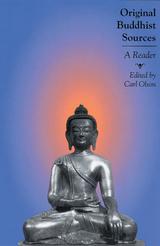 Original Buddhist Sources: A Reader
Olson, Carl
Rutgers University Press, 2005 Bringing together essential materials on the origins and development of Buddhist traditions from India, Sri Lanka, Tibet, China, and Japan, this anthology provides the broadest selection of primary source Buddhist literature available to date. The volume is divided into two major parts: Theravada and Mahayana forms of Buddhism. The first section presents selections that explore major themes in Buddhist thought such as causality, Four Noble Truths, the doctrine of non-self, nibbana, meditation, and ethics, as well as literature about monastic life and regulations, women, and hagiography. The second part includes selections from so-called wisdom literature and texts that represent the three major schools of Mahayana Buddhism: Pure Land, Madhyamika, and Yogacara. Selections also include sources from some of the major Chinese Buddhist schools such as Hua-yen, T'ien T'ai, Pure Land, and Ch'an. Readings by thinkers such as Tantric Buddhist reformer Tsong Khapa, Pure Land leaders Honen, Shinran, and Nichiren, as well as Zen Buddhists Dogen and Hakuin provide a perspective on regional and national traditions. In addition to the general introduction, each major section is introduced by an essay that places the selections within the context of Buddhist history. This comprehensive reader stands on its own as an indispensable anthology of original textual sources for courses in Buddhism, while also serving as a companion volume to the text The Different Paths of Buddhism: A Narrative-Historical Introduction.
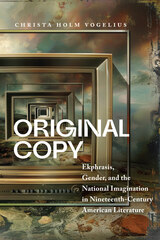 Original Copy: Ekphrasis, Gender, and the National Imagination in Nineteenth-Century American Literature
Christa Holm Vogelius
University of Massachusetts Press, 2025 When critics of poet Phillis Wheatley, the first African American to publish a collection of poetry, dismiss her work as derivative, they fail to see her writing as part of a new creative pantheon, sitting alongside other works that, like the popular copybooks in antebellum America, are structured as a conversation between artistic allies. Different kinds of copying in this period were distinctly feminized practices, such as artistic copying, pedagogical recitation, and literary imitation. Ekphrasis, the literary description of a work of visual art, reveals a particularly interesting form of copying, as the artwork in question becomes a kind of mediated space between author and reader; this practice, then, becomes the emblematic form of literature as collective production.
Original Copy frames ekphrasis and other forms of literary and visual copy-work as key concepts for understanding the discussions of nationalism, originality, and gender that dominated US literary circles during the first half of the nineteenth century. Christa Holm Vogelius focuses on four major writers of the period—Phillis Wheatley, Margaret Fuller, Sophia Hawthorne, and Henry Longfellow—to offer a narrative of a self-consciously feminine antebellum literary culture that was equally invested in literary nationality and convention. The explicitly feminized forms of the copy between and within media, she argues, became a productive means by which writers across a variety of genres interrogated the ill-defined but ubiquitous idea of an “original” American literature. Original Copy bridges three bodies of scholarship that have remained largely distinct—studies of literary nationalism and transnationalism, scholarship on gender in nineteenth century literary culture, and aesthetic and media theory—to argue for the significance of both imitation and intimate author-reader relations to the development of an American literature.
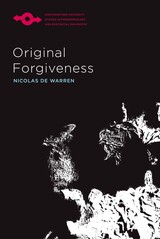 Original Forgiveness
Nicolas de Warren
Northwestern University Press, 2021 In Original Forgiveness, Nicolas de Warren challenges the widespread assumption that forgiveness is always a response to something that has incited it. Rather than considering forgiveness exclusively in terms of an encounter between individuals or groups after injury, he argues that availability for the possibility of forgiveness represents an original forgiveness, an essential condition for the prospect of human relations. De Warren develops this notion of original forgiveness through a reflection on the indispensability of trust for human existence, as well as an examination of the refusal or unavailability to forgive in the aftermath of moral harms. De Warren engages in a critical discussion of philosophical figures, including Martin Heidegger, Hannah Arendt, Mikhail Bakhtin, Edmund Husserl, Gabriel Marcel, Emmanuel Levinas, and Jean Améry, and of literary works by William Shakespeare, Fyodor Dostoevsky, Heinrich von Kleist, Simon Wiesenthal, Herman Melville, and Maurice Sendak. He uses this discussion to show that in trusting another person, we must trust in ourselves to remain available to the possibility of forgiveness for those occasions when the other person betrays a trust, without thereby forgiving anything in advance. Original forgiveness is to remain the other person’s keeper—even when the other has caused harm. Likewise, being another’s keeper calls upon an original beseeching for forgiveness, given the inevitable possibility of blemish or betrayal.
The Original Laws of Cricket
The Bodleian Library
Bodleian Library Publishing, 2008 This series of books from the Bodleian Library reproduces the original rules of classic sports, complete with commentary about their historical evolution and adaptation—in attractive, collectible formats. They are informative and often witty companions to the world of sport, bringing the past and present together. Of all the rules governing sports, the laws of cricket are among the oldest. The first written rules of 1744 survive solely on the border of a piece of linen at the Museum of The Marylebone Cricket Club, the home of cricket. The Original Laws of Cricket reprints the complete text of this original and explores how these early laws shaped the development of the game and in turn how the social dimensions of the game changed the laws.
 The Original Meaning of the Fourteenth Amendment: Its Letter and Spirit
Randy E. Barnett, Evan D. Bernick
Harvard University Press, 2021 A Federalist Notable Book
“An important contribution to our understanding of the 14th Amendment.”
—Wall Street Journal
“By any standard an important contribution…A must-read.”
—National Review
“The most detailed legal history to date of the constitutional amendment that changed American law more than any before or since…The corpus of legal scholarship is richer for it.”
—Washington Examiner
Adopted in 1868, the Fourteenth Amendment profoundly changed the Constitution, giving the federal judiciary and Congress new powers to protect the fundamental rights of individuals from being violated by the states. Yet, the Supreme Court has long misunderstood or ignored the original meaning of its key Section I clauses.
Barnett and Bernick contend that the Fourteenth Amendment must be understood as the culmination of decades of debate about the meaning of the antebellum Constitution. In the course of this debate, antislavery advocates advanced arguments informed by natural rights, the Declaration of Independence, and the common law, as well as what is today called public-meaning originalism.
The authors show how these arguments and the principles of the Declaration in particular eventually came to modify the Constitution. They also propose workable doctrines for implementing the amendment’s key provisions covering the privileges and immunities of citizenship, due process, and equal protection under the law.
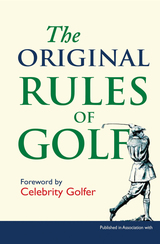 The Original Rules of Golf
Edited by the Bodleian Library
Bodleian Library Publishing, 2009 More than 25 million people in the United States alone play golf each year. A game born on the stark, wind-swept landscape of Scotland in the fifteenth century, golf has grown over the centuries into a global phenomenon. It is a sport not only enjoyed by professionals and the spectators of international tournaments, but one enthusiastically enjoyed by amateurs everywhere who socialize with friends and colleagues on their local courses. Yet despite golf’s widespread popularity, few of us truly know its rules, which have grown more complicated and confounding as the game has grown in popularity. Extremely simple by comparison, the very first rules of the game are presented here in a charming, collectible format. The first known rules of golf were drawn up in 1744 in Edinburgh for the world’s first open golf competition, hosted by the Gentleman Golfers of Edinburgh, who later became the Honourable Company of Edinburgh Golfers. Local golf clubs then adapted the Edinburgh rules for their own use—until 1897 when the Royal and Ancient Golf Club of St. Andrews assumed oversight of the rules, and published the first national set of golf rules. The original Edinburgh and St. Andrews rules are both reprinted here alongside delightful images of the game throughout the centuries. In addition, well-known golf writer Dale Concannon provides a thorough introduction that examines the history of the rules of golf from their first codification in Edinburgh to the present day. A must-have for anyone who delights in the spirit of the game, The Original Rules of Golf will find fans among golfers and armchair spectators everywhere.
The Original Rules of Rugby
The Bodleian Library
Bodleian Library Publishing, 2007
Rugby has rules, seriously? Believe it or not, it does. The Original Rules of Rugby brings together the original rules of the game drawn up at Rugby School in 1845 and the first rules of the Rugby Football Union in 1871. The book shows the complex evolution of rugby football and the intriguing history behind its shifting rules.
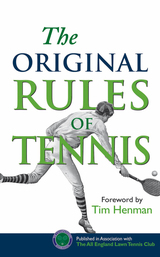 The Original Rules of Tennis
Edited by The Bodleian Library
Bodleian Library Publishing, 2010 The pristine grass and white uniforms of Wimbledon and the aggressive hard courts of the U.S. Open have inspired tens of thousands of amateur tennis players in North America. Millions of people watch the tournaments each year on television and the stars of recent decades are household names, but relatively few people know the history of the game. In the Middle Ages and the Renaissance it was a “jeu de paume,” a game played at French and English royal courts with hands rather than rackets. The modern game, however, dates from 1874, when Major Walter Clopton Wingfield developed a variation on the game for the amusement of his house guests in Wales. After he laid out the basic rules, the game spread quickly—the first championship at Wimbledon was held in 1877, followed soon after by the first American tournament in 1880. Published in association with the All England Lawn Tennis Club—better known as Wimbledon—this attractive, collectible book examines the history of the rules of tennis from their first codification to the present day. Included is a fascinating introduction by John Barrett, the BBC’s now retired “voice of tennis” who played in twenty-one consecutive Wimbledon Championships, that looks at the circumstances of the composition of the first rules, their scope, and evolution. The Original Rules of Tennis is a must for spectators and players alike.
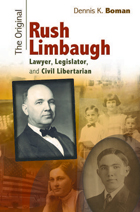 The Original Rush Limbaugh: Lawyer, Legislator, and Civil Libertarian
Dennis K. Boman
University of Missouri Press, 2012 Born at the end of the nineteenth century into a farming family of modest means in southeastern Missouri, Rush Hudson Limbaugh Sr. led a distinguished professional life as an attorney, legislator, and special ambassadorial representative of the United States. Today his descendants benefit from his reputation for integrity and public-spiritedness as a lawyer and member of his community, a legacy that lives on in his family in the careers of two federal district court judges, Stephen Limbaugh Sr. and Jr., and David Limbaugh, a practicing attorney and a nationally known author and political commentator. Moreover, Limbaugh’s character and life has gained wider renown on the radio talk show of his grandson and namesake. In this biography, Dennis K. Boman recounts Limbaugh’s legal career, which spanned most of the twentieth century and included a number of important events in Missouri history. His legal prowess first came to wider public notice when he managed the impeachment trial of state treasurer Larry Brunk, who was accused of misconduct in office. Among his later achievements was presiding over the infamous 1935 case Ware vs. Muench, in which a young woman sued for the return of her infant son. The case gained widespread attention, and the daily courtroom proceedings were reported in detail by newspapers across the United States. His legal opinion in the case was widely quoted and upheld by the Supreme Court of Missouri. In the midst of the Great Depression, as a state legislator, although a member of the minority party, Limbaugh led the effort to pass significant legislation, including the more fair distribution of the state tax burden, the founding of the Missouri state highway patrol, and the construction of state roads. In the late 1950s, President Dwight D. Eisenhower appointed Limbaugh to represent the United States as a goodwill ambassador to India. As a respected lawyer, Limbaugh was selected to serve on different civil rights commissions. First a member of the American Bar Association’s Special Committee on the Bill of Rights, he later was appointed its chair. This committee investigated the circumstances of African Americans, especially in the South, and sought to find practical ways to end racial discrimination and segregation. Moreover, he served as a member of the Special Committee on Civil Rights and Social Unrest in 1964 and 1965, as well as a commissioner on the Missouri Commission on Human Rights and Responsibilities, which examined violations of civil rights and led to legislation to protect non-whites from discrimination. Boman conducted personal interviews with many members of the Limbaugh family, whose candid answers add invaluable insights into Limbaugh’s character and career. Boman delves into Limbaugh’s memoirs, family correspondence, and personal papers, as well as newspaper accounts, to chronicle the life of a man who served his state and country until his death at the age of 104.
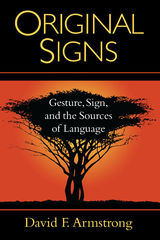 Original Signs: Gesture, Sign, and the Sources of Language
David F. Armstrong
Gallaudet University Press, 2002 In the ongoing debate about evolution, scholars frequently argue either the perspective that humans stand as the end product of a deliberate process or that they derive from a series of random acts of natural selection. David F. Armstrong’s new book Original Signs embraces the Darwinian concept of natural selection and extends it to apply to the formation of language. While most current linguistic theory envisions language as a system for translating the contents of the mind into linear strings of arbitrary symbols, Armstrong asserts that this model does not characterize signed languages. He shows that language is inherently a multichannel activity, of which the two primary channels are auditory and visual. Original Signs employs a more expansive notion of language that takes into account the full range of human communicative behavior. By making no strict separation between language and gesture, this thought-provoking work reveals that the use by deaf people of signs to create a fully formed language is also a natural facet of communication development for hearing people. Armstrong explores the influences of Plato and Descartes on modern linguistics, and delineates the theories of earlier anthropological linguists Edward Sapir and Benjamin Lee Whorf, who thought of language as natural experiments connected to individual cultures. This exceptional work of scholarship methodically demonstrates that the intricacies of how languages develop, whether they depend upon words or signs, and that the complexity among languages that contact one another cannot be accounted for by the sequential hierarchical processes previously put forth by linguists and logicians. Original Signs will prove to be a fascinating, watershed work invaluable to linguists, anthropologists, and all other scholars and students engaged in the search for the origin of language.
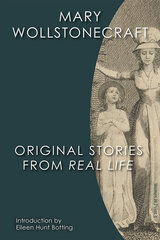 Original Stories from Real Life: With Conversations Calculated to Regulate the Affections, and Form the Mind to Truth and Goodness
Mary Wollstonecraft. Edited by Valerie Hotchkiss. Illustrated by William Blake. Introduction by Eileen Hunt Botting.
University of Illinois Press, 2016 In 1791, Mary Wollstonecraft drew upon her experiences as a governess as well as her understanding of the philosophy of Jean-Jacques Rousseau to publish this popular collection of moral tales for children. Not surprisingly, the woman who would later write A Vindication of the Rights of Women had strong views on children's education. Wollstonecraft desired nothing less than liberating children, both girls and boys, from what she believed were irrational modes of education in late eighteenth-century European culture. Her hyper rational stories became influential models for expressing particular philosophies of education through children's literature.
This beautiful facsimile of the 1791 edition includes the original illustrations by William Blake. A commentary by Eileen Hunt Botting puts the text in context and hints at influences on Wollstonecraft's daughter Mary Shelley and the pedagogical philosophy behind Shelley's novel Frankenstein.
Like all volumes in the Women in Print series, Original Stories from Real Life is provided as an open access book and downloads to a wide variety of platforms and online e-readers.
Original Subjects: The Child, the Novel, and the Nation
Ala A. Alryyes
Harvard University Press, 2001 Original Subjects explores the interweaving of the child-hero and the fortunes of a nation as these are portrayed in a wide selection of novels and national narratives in the French and English traditions. Ala Alryyes examines how these works deploy similar metaphors and signifying narratives in which a homeless child is central.
Taking up such disparate writers and novelists as Locke, Rousseau, Wollstonecraft, Defoe, Richardson, Diderot, Scott, Stendhal, Balzac, and Disraeli, as well as Homer, St. Augustine, and Hannah Arendt, this book argues that the generational parent–child dynamic is key to understanding the structure of novels, the theory of the state, and the events of history.
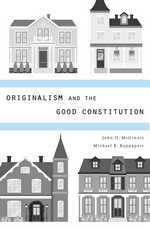 Originalism and the Good Constitution
John O. McGinnis and Michael B. Rappaport
Harvard University Press, 2013 Originalism holds that the U.S. Constitution should be interpreted according to its meaning at the time it was enacted. In their innovative defense of originalism, John McGinnis and Michael Rappaport maintain that the text of the Constitution should be adhered to by the Supreme Court because it was enacted by supermajorities—both its original enactment under Article VII and subsequent Amendments under Article V. A text approved by supermajorities has special value in a democracy because it has unusually wide support and thus tends to maximize the welfare of the greatest number.
The authors recognize and respond to many possible objections. Does originalism perpetuate the dead hand of the past? How can following the original meaning be justified, given that African Americans and women were excluded from the enactment of the Constitution in 1787 and many of its subsequent Amendments? What is originalism’s place in interpretation of the Constitution, when after two hundred years there is so much non-originalist precedent?
A fascinating counterfactual they pose is this: had the Supreme Court not interpreted the Constitution so freely, perhaps the nation would have resorted to the Article V amendment process more often and with greater effect. Their book will be an important contribution to the literature on originalism, which is now the most prominent theory of constitutional interpretation.
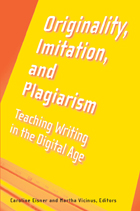 Originality, Imitation, and Plagiarism: Teaching Writing in the Digital Age
Caroline Eisner and Martha Vicinus, Editors
University of Michigan Press, 2008 "At long last, a discussion of plagiarism that doesn't stop at 'Don't do it or else,' but does full justice to the intellectual interest of the topic!"
---Gerald Graff, author of Clueless in Academe and 2008 President, Modern Language Association This collection is a timely intervention in national debates about what constitutes original or plagiarized writing in the digital age. Somewhat ironically, the Internet makes it both easier to copy and easier to detect copying. The essays in this volume explore the complex issues of originality, imitation, and plagiarism, particularly as they concern students, scholars, professional writers, and readers, while also addressing a range of related issues, including copyright conventions and the ownership of original work, the appropriate dissemination of innovative ideas, and the authority and role of the writer/author. Throughout these essays, the contributors grapple with their desire to encourage and maintain free access to copyrighted material for noncommercial purposes while also respecting the reasonable desires of authors to maintain control over their own work. Both novice and experienced teachers of writing will learn from the contributors' practical suggestions about how to fashion unique assignments, teach about proper attribution, and increase students' involvement in their own writing. This is an anthology for anyone interested in how scholars and students can navigate the sea of intellectual information that characterizes the digital/information age. "Eisner and Vicinus have put together an impressive cast of contributors who cut through the war on plagiarism to examine key specificities that often get blurred by the rhetoric of slogans. It will be required reading not only for those concerned with plagiarism, but for the many more who think about what it means to be an author, a student, a scientist, or anyone who negotiates and renegotiates the meaning of originality and imitation in collaborative and information-intensive settings."
---Mario Biagioli, Professor of the History of Science, Harvard University, and coeditor of Scientific Authorship: Credit and Intellectual Property in Science "This is an important collection that addresses issues of great significance to teachers, to students, and to scholars across several disciplines. . . . These essays tackle their topics head-on in ways that are both accessible and provocative."
---Andrea Lunsford, Louise Hewlett Nixon Professor of English, Claude and Louise Rosenberg Jr. Fellow, and Director of the Program in Writing and Rhetoric at Stanford University and coauthor of Singular Texts/Plural Authors: Perspectives on Collaborative Writing digitalculturebooks is an imprint of the University of Michigan Press and the Scholarly Publishing Office of the University of Michigan Library dedicated to publishing innovative and accessible work exploring new media and their impact on society, culture, and scholarly communication. Visit the website at www.digitalculture.org.
The Originals: New York Celtics Invent Modern Basketball
Murry Nelson
University of Wisconsin Press, 1999 Was there really professional basketball before the NBA? Indeed there was. It was a rugged game but one that continued to evolve swiftly from its invention in 1891. The original Celtics were at the vanguard of this creation and development. The team began as a local group of young Irishmen from the Hell’s Kitchen area of New York City in 1914. Through shrewd acquisitions of top players, they were transformed into the most powerful basketball team of their time. In the period from 1919 to 1928 the Celtics won over seven hundred games with fewer than sixty losses. This book chronicles the team, the players, the league seasons and the early era of professional basketball.
 Origins
Reiner Schürmann
Diaphanes, 2016 “Born too late to see the war and too early to forget it.” So writes Reiner Schürmann in Origins, a startlingly personal account of life as a young man from postwar Germany in the 1960s. Schürmann’s semi-autobiographical protagonist is incapable of escaping a past he never consciously experienced. All around him are barely concealed reminders of Nazi-inflicted death and destruction. His own experiences of displacement and rootlessness, too, are the burden of a cruel collective past. His story presents itself as a continuous quest for—and struggle to free himself from—his origins. The hero is haunted relentlessly by his fractured identity—in his childhood at his father’s factory, where he learns of the Nazi past through a horrible discovery; in an Israeli kibbutz, where, after a few months of happiness, he is thrown out for being a German; in postwar Freiburg, where he reencounters a friend who escaped the Nazi concentration camps; and finally, in the United States, where his attempts at a fresh start almost fail to exorcise the ghosts of the past.
Originally published in French in 1976, Origins was the winner of the coveted Prix Broquette-Gonin of the Académie Francaise. In close collaboration with the author, this meticulously crafted translation was created in the early 1990s, but Schürmann’s premature death in 1993 prevented its publication process and, as a result, one of the most important literary accounts of the conflicted process of coming to terms with the Holocaust and Germany’s Nazi past has been unavailable to English readers until now. Candid and frank, filled with fury and caustic sarcasm, Origins offers insight into a generation caught between disappointment and rage, alignment and rebellion, guilt and obsession with the past.
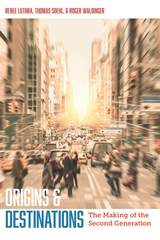 Origins and Destinations: The Making of the Second Generation
Renee Luthra
Russell Sage Foundation, 2018 The children of immigrants continue a journey begun by their parents. Born or raised in the United States, this second generation now stands over 20 million strong. In this insightful new book, immigration scholars Renee Luthra, Thomas Soehl, and Roger Waldinger provide a fresh understanding the making of the second generation, bringing both their origins and destinations into view.
Using surveys of second generation immigrant adults in New York and Los Angeles, Origins and Destinations explains why second generation experiences differ across national origin groups and why immigrant offspring with the same national background often follow different trajectories. Inter-group disparities stem from contexts of both emigration and immigration. Origin countries differ in value orientations: immigrant parents transmit lessons learned in varying contexts of emigration to children raised in the U.S. A system of migration control sifts immigrants by legal status, generating a context of immigration that favors some groups over others. Both contexts matter: schooling is higher among immigrant children from more secular societies (South Korea) than among those from more religious countries (the Philippines). When immigrant groups enter the U.S. migration system through a welcoming door, as opposed to one that makes authorized status difficult to achieve, education propels immigrant children to better jobs.
Diversity is also evident among immigrant offspring whose parents stem from the same place. Immigrant children grow up with homeland connections, which can both hurt and harm: immigrant offspring get less schooling when a parent lives abroad, but more schooling if parents in the U.S. send money to relatives living abroad. Though all immigrants enter the U.S. as non-citizens, some instantly enjoy legal status, while others spend years in the shadows. Children born abroad, but raised in the U.S. are all everyday Americans, but only some have become de jure Americans, a difference yielding across-the-board positive effects, even among those who started out in the same country.
Disentangling the sources of diversity among today’s population of immigrant offspring, Origins and Destinations provides a compelling new framework for understanding the second generation that is transforming America.
 Origins and Development of Medical Imaging
T. Doby and G. Alker
Southern Illinois University Press, 1997 In this newest volume in the Medical Humanities Series, T. Doby and G. Alker trace the development of our ability to visualize the inside of the human body. For thousands of years, horror of the dead, superstition, and oppressive decrees prevented our ancestors from looking inside the human body; in ancient civilizations, diagnostics were based on imagination and theory, with only limited observation. So people developed suppositions about health and disease without knowing how the liver, heart, brain, and blood vessels looked or functioned. In tracing the history of medical imaging, Doby and Alker establish that it was not until the Renaissance and the detailed drawings of human anatomy by da Vinci and Vesalius that successful internal imaging of the human body was born. At the turn of the nineteenth century, Roentgen’s discovery of the X-ray provided the first miraculous look into the living body. From that instant, medical imaging developed at an ever-increasing pace, evolving to more recent discoveries in nuclear medicine, CT scanning, and ultrasound and magnetic resonance imaging. As Doby and Alker note, we can expect our efforts to be understood in the future only if we examine past events with an appreciation of the difficulties and challenges that faced our predecessors. Despite almost unbelievable advances in current medical technology, we must still rely on our own resources and common sense as human beings in understanding what technology can and cannot do for us. A comprehensive set of appendixes pictorially depicting the history of imaging round out the volume.
 Origins and Evolution of Behavior Disorders: From Infancy to Early Adult Life
Stella Chess and Alexander Thomas
Harvard University Press, 1987 Beginning in 1956, Stella Chess and Alexander Thomas tracked the lives of 133 children from infancy to young adulthood, examining in detail their psychological development over a twenty-five-year period. The result was the groundbreaking New York Longitudinal Study. This book, first published in 1984, presents a complete report of the study, including analyses of the data and exploration of such fundamental questions as gender differences, antecedents of adult behavior patterns, and factors that contribute to depression and other disorders. Special emphasis is given to the clinical evaluation and treatment of patients with behavioral abnormalities. The authors discuss key findings: the important role of parental guidance, the continuities and discontinuities across developmental stages, the crucial effects of temperament on psychological development, and the usefulness of a “goodness of fit” model for understanding the relationship between person and environment and for describing the evolution of behavior disorders.
 The Origins and Rise of Associate Degree Nursing Education
Patricia T. Haase
Duke University Press, 1990 The Origins and Rise of Associate Degree Nursing Education offers an analytical history of the beginnings and development of associate degree nursing (ADN) programs and the role of the caregivers it produces in the health care system. Nurses may be trained in two-, three-, or four-year programs, but all are eligible to take the accreditation examination to be licensed as registered nurses (RNs). The question of distinguishing between “professional” nurses from bachelor programs and “technical” nurses from the associate degree programs has become an important and controversial issue in nursing.
Advocates have long contended that the associate degree nurse is vital to the American health care system. This study, funded by the W. K. Kellogg Foundation, confirms this view. In recent years the Foundation has invested more than $6.1 million in the development of the ADN, awarded by junior and community colleges. Many participants in the ADN projects for the Kellogg Foundation have noted that, despite the importance of the ADN and the controversy about its place in nursing education, the literature is scattered and hard to identity. The Origins and Rise of Associate Degree Nursing Education and the companion bibliography will provide much-needed information to educators, hospital and nursing administrators, nursing leaders, and public policy makers—all of whom must cope with the growing nursing shortage and increasingly difficult issues in health policy and administration.
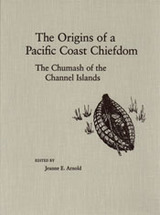 Origins Of A Pacific Coast Chiefdom
Jeanne E Arnold
University of Utah Press, 2001 When Europeans first visited California, they encountered one of the most culturally diverse regions of the New World. The coasts and ecologically richest areas were dotted with small polities which were supported not by horticulture but exclusively by hunting, fishing, and gathering, placing them among the more complex hunter-gatherer groups in the world. The Origins of a Pacific Coast Chiefdom considers the Chumash, perhaps the most hierarchically organized of the California groups. It explores the final thousand years of coastal Chumash culture, which culminated in the complex society witnessed by the earliest Spanish explorers. Chumash life was characterized by settled villages, massive production of prestige goods, sophisticated plank canoes, and extensive maritime exchange systems—features more characteristic of agricultural societies. Archaeological sites in the island Chumash area are exceptionally well preserved, permitting precise interpretations of both subtle and major changes in technologies, subsistence, prestige goods, and specialized shell and lithic industries. The data and interpretations presented here are the result of fifteen years of intensive investigation on the Channel Islands.
The Origins of Agriculture: An International Perspective
Edited by C. Wesley Cowan and Patty Jo Watson
University of Alabama Press, 2006 The eight case studies in this book -- each a synthesis of available knowledge about the origins of agriculture in a specific region of the globe -- enable scholars in diverse disciplines to examine humanity's transition to agricultural societies. Contributors include: Gary W. Crawford, Robin W. Dennell, and Jack R. Harlan.
Origins of Analytical Philosophy
Michael Dummett
Harvard University Press, 1994 For half a century analytical philosophy has dominated professional philosophy in English-speaking countries. When contrasted with "Continental" philosophy, analytical philosophy is often called "Anglo-American." Michael Dummett argues that this is a misnomer: "Anglo-Austrian" would be a more accurate label, for analytical philosophy arose in the same milieu as the principal rival school of phenomenology. Furthermore, the two schools have the same roots. By reexamining the similar origins of the two traditions, we can come to understand why they later diverged so widely, and thus take the first step toward reconciliation.
 Origins Of Argentinas Revolution Right
Alberto Spektorowski
University of Notre Dame Press, 2003 The Origins of Argentina's Revolution of the Right traces the ideological roots and political impact of Argentine right-wing nationalism as it developed in the 1930s and 1940s. In this spirited book, Alberto Spektorowski focuses on the attempt by a new brand of nonconformist intellectuals to shift the concept of Argentine nationalism from its liberal incarnation to an integralist-populist one, and simultaneously to change Argentina's path of development from liberalism to a "third road" of economic autarky.
Spektorowski argues that this "third road" to national modernity was reactionary in regard to liberal rights, reform socialism, parliamentary politics, and cosmopolitan society. At the same time, it was modernist in terms of industrialization, anti-imperialist ideology, social justice, and social mobilization. This popular mobilization under authoritarian rule embodied a new concept of organic nationalism, claims Spektorowski.
Argentina's Revolution of the Right maintains that the "third road" developed in 1930s Argentina through the juxtaposition of two apparently opposing types of anti-liberal ideological currents: a right-wing authoritarian current reliant upon counterrevolutionary European sources, and an anti-imperialist, populist current. Spektorowski suggests that in the 1930s when Argentine economic dependency on Great Britain deepened, both ideological wings found a common language with which to attack liberal democracy.
Spektorowski shows that both of these wings rejected liberal institutions, bourgeois society, cosmopolitanism, and old-type conservatism, and became profoundly anti-imperialist. Both defended a "pro-axis" neutrality during World War II, and both set the ideological stage for Argentina's sociopolitical shift of the 1940s. Spektorowski concludes that both of these currents produced a single nationalist ideology that became the intellectual framework in which the "repertoire" of political values of the 1943 military regime and Peronism was subsequently elaborated.
ALBERTO SPEKTOROWSKI is professor of political science at Tel Aviv University and is co-editor of Ethnic Challenges to the Modern Nation State.
----------
"… first rate … this book is easily accessible to the nonspecialist and is a welcome contribution to any graduate or undergraduate course concerning twentieth-century Latin American political developments and intellectual history." --History: Reviews of New Books
"Those seeking a detailed treatment of the issues at hand will not be disappointed." --Choice
"After having successfully demonstrated that political ideas emerge from ideology, Spektorowski surprises us with another finding: the two wings of nationalism, with several differences discussed throughout the book, were creatively combined in an unprecedented Argentine political formula. This was the ideological background of early Peronism, whose author was not an intellectual but a politician." --Review of Politics
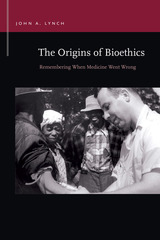 The Origins of Bioethics: Remembering When Medicine Went Wrong
John A. Lynch
Michigan State University Press, 2019 The Origins of Bioethics argues that what we remember from the history of medicine and how we remember it are consequential for the identities of doctors, researchers, and patients in the present day. Remembering when medicine went wrong calls people to account for the injustices inflicted on vulnerable communities across the twentieth century in the name of medicine, but the very groups empowered to create memorials to these events often have a vested interest in minimizing their culpability for them. Sometimes these groups bury this past and forget events when medical research harmed those it was supposed to help. The call to bioethical memory then conflicts with a desire for “minimal remembrance” on the part of institutions and governments. The Origins of Bioethics charts this tension between bioethical memory and minimal remembrance across three cases—the Tuskegee Syphilis Study, the Willowbrook Hepatitis Study, and the Cincinnati Whole Body Radiation Study—that highlight the shift from robust bioethical memory to minimal remembrance to forgetting.
 The Origins of Canadian and American Political Differences
Jason Kaufman
Harvard University Press, 2009 Why do the United States and Canada have such divergent political cultures when they share one of the closest economic and cultural relationships in the world? Canadians and Americans consistently disagree over issues such as the separation of church and state, the responsibility of government for the welfare of everyone, the relationship between federal and subnational government, and the right to marry a same-sex partner or to own an assault rifle.
In this wide-ranging work, Jason Kaufman examines the North American political landscape to draw out the essential historical factors that underlie the countries’ differences. He discusses the earliest European colonies in North America and the Canadian reluctance to join the American Revolution. He compares land grants and colonial governance; territorial expansion and relations with native peoples; immigration and voting rights. But the key lies in the evolution and enforcement of jurisdictional law, which illuminates the way social relations and state power developed in the two countries.
Written in an accessible and engaging style, this book will appeal to readers of sociology, politics, law, and history as well as to anyone interested in the relationship between the United States and Canada.
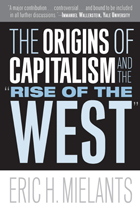 The Origins of Capitalism and the "Rise of the West"
Eric H. Mielants
Temple University Press, 2008 In this study, Eric Mielants provides a novel interdisciplinary interpretation of the origins of modernity and capitalism in particular. He argues that contrary to popular thinking, the Rise of the West should not be analyzed in terms of the Industrial Revolution or the colonization of the New World, but viewed from long-term developments that occurred in the Middle Ages. A fascinating overview of different civilizations in East Asia, South Asia, and Northwestern Africa is provided and systematically compared and contrasted with Western Europe. This book addresses some of the major debates that have recently unfolded in world history, comparative sociology, political economy, sociological theory and historical sociology. Mielants indicates how many existing theories (such as Marxism, World-Systems Theory and Smithian Modernization Theory) have suffered from either Eurocentric or limited temporal and spatial analyses, which prevents them from a complete understanding of why the origins of capitalism and citizenship emerged in Western Europe.
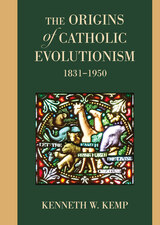 The Origins of Catholic Evolutionism, 1831-1950
Kenneth W. Kemp
Catholic University of America Press, 2025 The history of the Catholic Church’s response to evolutionary biology has often been badly misrepresented as antagonistic. In fact, its response is better characterized as a long process of accommodation. This work is a comprehensive introduction to the work of the Catholic scientists and theologians who worked out the details of that accommodation.
Few Catholics found the evolutionary origin of plant and animal species theologically objectionable. None thought that evolutionary processes provided a sufficient account of the origin of the first human beings. Catholics differed over whether those processes played a role in the origin of the first human body.
Catholic evolutionism began with the work of four nineteenth-century scientists who might be called the pioneers of Catholic evolutionism—Belgian geologist Jean-Baptiste d’Omalius d’Halloy, English anatomist George Mivart, Italian anatomist Filippo De Filippi, and French paleontologist Albert Gaudry. The next generations of Catholic evolutionists, writing in the period from about 1890 -1940, included scientists (Jesuit entomologists Erich Wasmann and Felix Rüschkamp) as well as priests who focused more exclusively on the question of compatibility (Dalmace Leroy, John Zahm, Henry de Dorlodot, and Ernest Messenger). Among the scientists might also be included French paleontologist Pierre Teilhard de Chardin, who made some contributions to the general idea of the compatibility of evolutionary biology and Catholic theology, but who eventually veered off in the direction of a comprehensive evolutionary theology of nature the details of which are beyond the scope of this book.
Catholic anti-evolutionists made efforts to have the Church prohibit works of Catholic evolutionism that, in their judgment gave evolutionary processes too great a rôle in the formation of the human body or that relied on problematic principles of hermeneutics. Efforts on the former front were eventually blocked by Pope Pius XI. The first magisterial statement on the question came, however, only in 1950, with Pope Pius XII’s encyclical Humani generis, which provisionally declared the orthodoxy of evolutionary accounts of the origin of the human body.
In addition to providing details about Catholic evolutionists and the magisterium, the book also reviews the treatment of the new ideas in Catholic encyclopedias, periodicals, and textbooks.
Although written in the first instance as a work of scholarship, the book was also written with attention to the needs of scientists, priests, and members of the general public who are interested in the question.
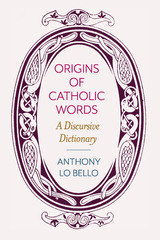 The Origins of Catholic Words: A Discursive Dictionary
Anthony Lo Bello
Catholic University of America Press, 2020 The study of the vocabulary of the Catholic religion may be taken as a definition of the liberal arts. Origins of Catholic Words is a work of reference organized like a lexicon or encyclopedia. There is an entry for each word of importance having to do with the Catholic Church. Anthony Lo Bello gives the etymology of the word, describes what it means, and then adds whatever further discussion he feels is needed; in some cases this amounts to several pages.
Lo Bello has assembled, over a number of years, lucid and wide-ranging remarks on the etymology and history of the words that occur in the study of the Catholic religion. A true labor of love, this sophisticated, one-of-a-kind dictionary will delight those who take pleasure in learning. Anyone interested in words and language—indeed, in culture, will find something interesting on every page. This is a book one may read and not just consult.
The author has been ecumenical in his choice of authorities. J. B. Bury, Lord Chesterfield, Mandell Creighton, S. R. Driver, Ferdinand Gregorovius, Dr. Johnson, Henry Charles Lea, Bishop Lightfoot, Thomas Babington Macaulay, John Stuart Mill, Henry Hart Milman, Leopold von Ranke, and Bertrand Russell find their places alongside Alban Butler, Denzinger, Ignaz Döllinger the Abbé Duchesne, Adrian Fortescue, Bishop Hefele, Cardinal Gasparri, Msgr. Ronald Knox, Msgr. Horace K. Mann, John Henry Newman, Ludwig von Pastor, Wilfrid Ward, William George Ward, and Evelyn Waugh.
There have been many changes in the Catholic Church since 1962, and one of the goals of this book is to describe what will soon be missing from the memories of all living people. Origins of Catholic Words may, Lo Bello hopes, make its small contribution so that the situation not arise, which would convict Newman of error when he wrote, “What the Catholic Church once has had, she never has lost.”
 The Origins of Central Banking in the United States
Jr Richard H.Timberlake
Harvard University Press, 1978 This book recounts the emergence of central banking Ideas and Institutions In this country—from the formation of the First Bank of the United States to the enactment of the Federal Reserve System. Focusing on the Intellectual and practical origins of monetary policy, Timberlake offers the first study on the political economy of central banking. He traces the Ideas that surrounded monetary events through records of congressional debates, documents of the House and Senate, and reports of the Secretary of the Treasury and the Comptroller of the Currency. Almost none of this material has been used before as a method of analyzing monetary Institutions and their growth.
Timberlake's principal assumption is that these debates and government activities mirrored social norms. He corrects some traditional beliefs surrounding such monetary mysteries as the causes of the inflation of 1812-1815, the effects of the Specie Circular, and the decline of silver influence In the early 1890s. Economists, historians, lawyers, government policy makers, and politicians will welcome the new insights on the origins of central banking in the economic and political milieus of the eighteenth through the twentieth centuries.
The Origins of Chavín Culture
Chiaki Kano
Harvard University Press Chiaki Kano considers the archaeological materials from the pre-Chavín cultures and the relationship between these early cultures and Chavín, and traces the changes in artistic style from pre-Chavín to Chavín using the feline motif as a base.
 The Origins of Christian Anti-Internationalism: Conservative Evangelicals and the League of Nations
Markku Ruotsila
Georgetown University Press, 2008 The roots of conservative Christian skepticism of international politics run deep. In this original work Markku Ruotsila artfully unearths the historical and theological origins of evangelical Christian thought on modern-day international organizations and U.S. foreign policy, particularly in the fierce debates over the first truly international body—the League of Nations. After describing the rise of the Social Gospel movement that played a vital, foundational role in the movement toward a League of Nations, The Origins of Christian Anti-Internationalism examines the arguments and tactics that the most influential confessional Christian congregations in the United States—dispensational millenialists, Calvinists, Lutherans, and, to a lesser extent, Methodists, Episcopalians, and Christian Restorationists—used to undermine domestic support for the proposed international body. Ruotsila recounts how these groups learned to co-opt less religious-minded politicians and organizations that were likewise opposed to the very concept of international multilateralism. In closely analyzing how the evangelical movement successfully harnessed political activism to sway U.S. foreign policy, he traces a direct path from the successful battle against the League to the fundamentalist-modernist clashes of the 1920s and the present-day debate over America's role in the world. This exploration of why the United States ultimately rejected the League of Nations offers a lucid interpretation of the significant role that religion plays in U.S. policymaking both at home and abroad. Ruotsila's analysis will be of interest to scholars and practitioners of theology, religious studies, religion and politics, international relations, domestic policy, and U.S. and world history.
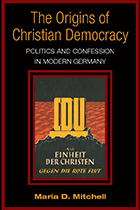 The Origins of Christian Democracy: Politics and Confession in Modern Germany
Maria D. Mitchell
University of Michigan Press, 2012 This book is a pioneering contribution to the history of the founding of the West German political system after the Second World War. The political cooperation between Catholics and Protestants that resulted in the formation of the Christian Democratic Union (CDU) in occupied and early West Germany represented a significant change from a long history of hostility in confessional relations. Given that the CDU went on to dominate politics in West Germany well into the 1960s, Maria D. Mitchell argues that an understanding of what made this interconfessional party possible is crucial to an exploration of German history in the postwar period. She examines the political history of party formation as well as the religious beliefs and motivations that shaped the party's philosophy and positions. She provides an authoritative guide to the complex processes of maneuvering and negotiation that produced the CDU during 1945-46. The full range of political possibilities is discussed, including the suppressed alternatives to the Adenauer/Erhard axis that eventually defined the party's trajectory during the 1950s and the abortive Christian Socialism associated with Jacob Kaiser.
The Origins of Composition Studies in the American College, 1875–1925: A Documentary History
John C. Brereton
University of Pittsburgh Press, 1996 This volume describes the formative years of English composition courses in college through a study of the most prominent documents of the time: magazine articles, scholarly reports, early textbooks, teachers' testimonies-and some of the actual student papers that provoked discussion. Includes writings by leading scholars of the era such as Adams Sherman Hill, Gertrude Buck, William Edward Mead, Lane Cooper, William Lyon Phelps, and Fred Newton Scott.
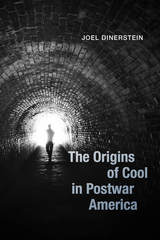 The Origins of Cool in Postwar America
Joel Dinerstein
University of Chicago Press, 2017 Cool. It was a new word and a new way to be, and in a single generation, it became the supreme compliment of American culture. The Origins of Cool in Postwar America uncovers the hidden history of this concept and its new set of codes that came to define a global attitude and style. As Joel Dinerstein reveals in this dynamic book, cool began as a stylish defiance of racism, a challenge to suppressed sexuality, a philosophy of individual rebellion, and a youthful search for social change.
Through eye-opening portraits of iconic figures, Dinerstein illuminates the cultural connections and artistic innovations among Lester Young, Humphrey Bogart, Robert Mitchum, Billie Holiday, Frank Sinatra, Jack Kerouac, Albert Camus, Marlon Brando, and James Dean, among others. We eavesdrop on conversations among Jean-Paul Sartre, Simone de Beauvoir, and Miles Davis, and on a forgotten debate between Lorraine Hansberry and Norman Mailer over the "white Negro" and black cool. We come to understand how the cool worlds of Beat writers and Method actors emerged from the intersections of film noir, jazz, and existentialism. Out of this mix, Dinerstein sketches nuanced definitions of cool that unite concepts from African-American and Euro-American culture: the stylish stoicism of the ethical rebel loner; the relaxed intensity of the improvising jazz musician; the effortless, physical grace of the Method actor. To be cool is not to be hip and to be hot is definitely not to be cool.
This is the first work to trace the history of cool during the Cold War by exploring the intersections of film noir, jazz, existential literature, Method acting, blues, and rock and roll. Dinerstein reveals that they came together to create something completely new—and that something is cool.
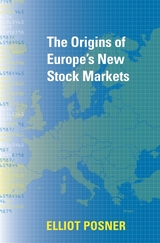 The Origins of Europe's New Stock Markets
Elliot Posner
Harvard University Press, 2009 Between 1995 and 2007, financial elites in more than a dozen western European countries engaged in a cross-border battle to create some twenty new stock markets, many of which were explicitly modeled on the American Nasdaq.
The resulting high-risk, high-reward markets facilitated wealth creation, rewarded venture capitalists, and drew major U.S. financial players to Europe. But they also chipped away at the European social compacts between national governments and citizens, opening the door of smaller company finance to the broad trend of marketization and its bounties, and further subjecting European households and family businesses to the rhythms of global capital.
Elliot Posner explores the causes of Europe’s emergence as a global financial power, addressing classic and new questions about the origins of markets and their relationship to politics and bureaucracy. In doing so, he attributes the surprising large-scale transformation of Europe’s capital markets to the rise of the European Union as a global political force. The effect of Europe’s financial ascendance will have major ramifications around the world, and Posner’s analysis will push market participants, policymakers, and academics to rethink the sources of financial change in Europe and beyond.
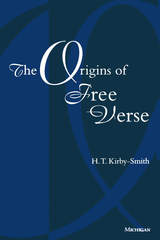 The Origins of Free Verse
H. T. Kirby-Smith
University of Michigan Press, 1998 H. T. Kirby-Smith offers a far-ranging and intellectually engaging study of the literary history of the debated genre of free verse, aimed not at perpetuating a particular dispute but instead at discovering the generative points of this often celebrated, often maligned form.
Though free verse became a dominant poetic mode only in the twentieth century, Kirby-Smith finds its roots in seventeenth-century England. Beginning his study with writers such as John Milton--who was considered by T. S. Eliot to be the greatest writer of free verse in English--the author places recent and divisive topics in poetics in context, showing them to be attenuated remnants of issues first broached hundreds of years ago.
The book seeks to establish a consensus on the nature of free verse, with reference to critics and poets including Pound, Eliot, Williams, Amy Lowell, Yvor Winters, and Hugh Kenner. Good free verse, argues Kirby-Smith, arises as a reaction to a well-established set of conventions. Likewise, The Origins of Free Verse goes against the conventions of existing poetic scholarship, offering an encompassing yet fresh--and controversial--literary history of free verse.
"At moments, this study is revelatory. . . . In its range and detail it offers a way of thinking about the history of English-language prosody which recognizes the importance of the poet's individual choices and undercuts our century's vanity. . . . Poetry is a learned art, and Kirby-Smith brings both insight and much learning to reading it." --Times Literary Supplement
"The best study of free verse I have seen. . . . The Origins of Free Verse is a book that all students of prosody will want to read. " --Harvard Review
". . . a witty and polemical account of the emergence and development of free verse." --Choice
H. T. Kirby-Smith is Professor of English, University of North Carolina at Greensboro.
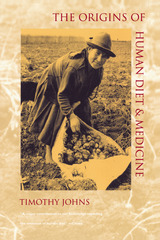 The Origins of Human Diet and Medicine: Chemical Ecology
Timothy Johns
University of Arizona Press, 1990 People have always been attracted to foods rich in calories, fat, and protein; yet the biblical admonition that meat be eaten “with bitter herbs” suggests that unpalatable plants play an important role in our diet. So-called primitive peoples show a surprisingly sophisticated understanding of how their bodies interact with plant chemicals, which may allow us to rediscover the origins of diet by retracing the paths of biology and culture.
The domestication of the potato serves as the focus of Timothy Johns’s interdisciplinary study, which forges a bold synthesis of ethnobotany and chemical ecology. The Aymara of highland Bolivia have long used varieties of potato containing potentially toxic levels of glycoalkaloids, and Johns proposes that such plants can be eaten without harm owing to human genetic modification and cultural manipulation. Drawing on additional fieldwork in Africa, he considers the evolution of the human use of plants, the ways in which humans obtain foods from among the myriad poisonous and unpalatable plants in the environment, and the consequences of this history for understanding the basis of the human diet. A natural corollary to his investigation is the origin of medicine, since the properties of plants that make them unpalatable and toxic are the same properties that make them useful pharmacologically.
As our species has adapted to the use of plants, plants have become an essential part of our internal ecology. Recovering the ancient wisdom regarding our interaction with the environment preserves a fundamental part of our human heritage.
Originally published in hardcover as With Bitter Herbs They Shall Eat It: Chemical Ecology and the Origins of Human Diet and Medicine
 Origins of Igneous Rocks
Paul C. Hess
Harvard University Press, 1989 This rigorous and up-to-date synthesis of current research and thought in igneous petrology explores the complex process of the generation and cooling of igneous rocks--those formed by solidification from a molten state, either intrusively, below the earth's crust, or extrusively as lava. Through the study of the mineral associations, compositions, and textures achieved in the formation of these rocks, Paul Hess traces the evolution of igneous rocks from site of origin to place of residency. He probes the clues that the distribution of igneous rocks provides for understanding plate tectonic processes. And he focuses on a number of unresolved problems critical to igneous petrology: the ultimate source rock of a magma; the location and process of melting; the collection of magma into large movable masses; the extraction of magma from its source and its emplacement onto the earth's crust; and the conditions of the crystallization and cooling of magma in its ultimate transformation into igneous rock.
This comprehensive work, which integrates geochemistry, tectonophysics, and planetary geology with classical igneous petrology, provides a solid introduction to physical processes and isotopic principles and applies these processes and principles consistently in the discussion of petrogenetic models for all the major types of igneous rocks. It is a stimulating resource for students and researchers in igneous petrology as well as for geologists in allied fields (geophysics, geochemistry, cosomochemistry, and metamorphic petrology).
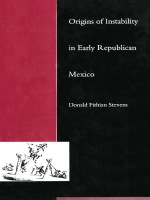 Origins of Instability in Early Republican Mexico
Donald F. Stevens
Duke University Press, 1991 In the decades following independence, Mexico was transformed from a strong, stable colony into a republic suffering from economic decline and political strife. Marked by political instability—characterized by Antonio López de Santa Anna’s rise to the presidency on eleven distinct occasions—this period of Mexico’s history is often neglected and frequently misunderstood.
Donald F. Stevens’ revisionist account challenges traditional historiography to examine the nature and origins of Mexico’s political instability. Turning to quantitative methods as a way of providing a framework for examining existing hypotheses concerning Mexico’s instability, the author dissects the relationship between instability and economic cycles; contradicts the notion that Mexico’s social elite could have increased political stability by becoming more active; and argues that the principal political fissures were not liberal vs. conservative but were among radical, moderate, and conservative.
Ultimately, Stevens maintains, the origins of that country’s instability are to be found in the contradictions between liberalism and Mexico’s traditional class structure, and the problems of creating an independent republic from colonial, monarchical, and authoritarian traditions.
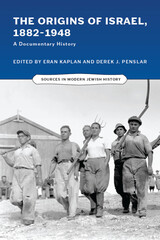 The Origins of Israel, 1882–1948: A Documentary History
Eran Kaplan
University of Wisconsin Press, 2011 In 1880 the Jewish community in Palestine encompassed some 20,000 Orthodox Jews; within sixty-five years it was transformed into a secular proto-state with well-developed political, military, and economic institutions, a vigorous Hebrew-language culture, and some 600,000 inhabitants. The Origins of Israel, 1882–1948: A Documentary History chronicles the making of modern Israel before statehood, providing in English the texts of original sources (many translated from Hebrew and other languages) accompanied by extensive introductions and commentaries from the volume editors.
This sourcebook assembles a diverse array of 62 documents, many of them unabridged, to convey the ferment, dissent, energy, and anxiety that permeated the Zionist project from its inception to the creation of the modern nation of Israel. Focusing primarily on social, economic, and cultural history rather than Zionist thought and diplomacy, the texts are organized in themed chapters. They present the views of Zionists from many political and religious camps, factory workers, farm women, militants, intellectuals promoting the Hebrew language and arts—as well as views of ultra-Orthodox anti-Zionists. The volume includes important unabridged documents from the origins of the Arab-Israeli conflict that are often cited but are rarely read in full. The editors, Eran Kaplan and Derek J. Penslar, provide both primary texts and informative notes and commentary, giving readers the opportunity to encounter voices from history and make judgments for themselves about matters of world-historical significance. Best Special Interest Books, selected by the Public Library Reviewers Best Books for General Audiences, selected by the American Association of School Librarians
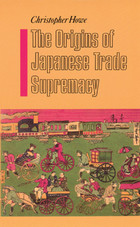 The Origins of Japanese Trade Supremacy: Development and Technology in Asia from 1540 to the Pacific War
Christopher Howe
University of Chicago Press, 1996 Synthesizing a wide range of scholarship Christopher Howe traces the history of Japanese trade over four centuries and locates the sources of Japan's current commercial and financial strength in events that began in the sixteenth century.
"Thoughtful, well-organized, and lucidly written and reflects many years of painstaking research in different literatures."—Business Horizons
"The best analysis yet in English of the role of technology in Japan's emergence as a global economic power."—David J. Jeremy, Technology and Culture
"An important addition to Japanese economic history and the concept of creating relative advantage in trade."—Richard Rice, Journal of Asian Studies
"No other work in English approaches Christopher Howe's combination of a sweeping historical perspective with a comprehensive yet in-depth analysis of factors underlying Japan's pre-1940 economic 'miracle.' . . . [An] illuminating study."—Steven J. Ericson, American Historical Review
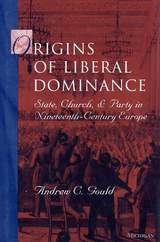 Origins of Liberal Dominance: State, Church, and Party in Nineteenth-Century Europe
Andrew C. Gould
University of Michigan Press, 1999 How did liberal movements reshape the modern world? Origins of Liberal Dominance offers a revealing account of how states, churches, and parties joined together in France, Belgium, Switzerland, and Germany to produce fundamentally new forms of organization that have shaped contemporary politics.
Modern political life emerged when liberal movements sought to establish elections, constitutions, free markets, and religious liberty. Yet liberalism even at its height faced strong and often successful opposition from conservatives. What explains why liberals overcame their opponents in some countries but not in others? This book compares successful and unsuccessful attempts to build liberal political parties and establish liberal regimes in France, Belgium, Switzerland, and Germany from 1815 to World War I.
Andrew Gould argues that relations between states and churches set powerful conditions on any attempt at liberalization. Liberal movements that enhanced religious authority while reforming the state won clerical support and successfully built liberal institutions of government. Furthermore, liberal movements that organized peasant backing around religious issues founded or sustained mass movements to support liberal regimes.
Origins of Liberal Dominance offers striking new insights into the emergence of modern states and regimes. It will be of interest to political scientists, sociologists, comparative historians, and those interested in comparative politics, regime change and state-building, democratization, religion and politics, and European politics.
Andrew C. Gould is Assistant Professor of Government and Kellogg Institute Fellow, University of Notre Dame.
 Origins Of Logical Empiricism
Ronald N. Giere
University of Minnesota Press, 1996 Establishes a historical framework for the study of logical empiricism.
Logical empiricism remains a strong influence in the philosophy of science, despite the discipline's shift toward more historical and naturalistic approaches. This latest volume in the eminent Minnesota Studies in the Philosophy of Science series examines the main features of the intellectual milieu from which logical empiricism sprang, providing the first critical exploration of this context by authors within the Anglo-American analytic tradition of philosophy.
These articles challenge the idea that logical empiricism has its origins in traditional British empiricism, pointing instead to a movement of scientific philosophy that flourished in the German-speaking areas of Europe in the first four decades of the twentieth century. The intellectual refugees from the Third Reich who brought logical empiricism to North America did so in an environment influenced by Einstein's new physics, the ascension of modern logic, the birth of the social sciences as rivals to traditional humanistic philosophy, and other large-scale social, political, and cultural themes.
The contributors, including some of our most distinguished philosophers and historians of science, emphasize the connections among members of the logical empiricist movement as well as their connections with members of other major intellectual movements of the time. Focusing on the continuing influence of logical empiricism and the vitality of the issues with which its proponents struggled, this important volume provides valuable context to contemporary philosophers of science.
Contributors: Nancy Cartwright, Jordi Cat, Richard Creath, Michael Friedman, Peter Galison, Warren Goldfarb, Don Howard, Thomas Oberdan, Thomas Ricketts, Thomas Ryckman, Joia Lewis Turner, Thomas E. Uebel.
Ronald N. Giere is professor of philosophy and director of the Center for the Philosophy of Science at the University of Minnesota. He is the author of Explaining Science (1988) and editor of Cognitive Models of Science (1992). Alan Richardson is assistant professor of philosophy at the University of British Columbia.
Origins Of Magnetospheric Physics: An Expanded Edition
James A. Van Allen
University of Iowa Press, 2004 Early in 1958, instruments on the space satellites Explorer I and Explorer III revealed the presence of radiation belts, enormous populations of energetic particles trapped in the magnetic field of the earth. Originally published in 1983 but long out of print until now, Origins of Magnetospheric Physics tells the story of this dramatic and hugely transformative period in scientific and Cold War history. Writing in an accessible style and drawing on personal journals, correspondence, published papers, and the recollections of colleagues, James Van Allen documents a trail-blazing era in space history
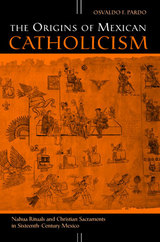 The Origins of Mexican Catholicism: Nahua Rituals and Christian Sacraments in Sixteenth-Century Mexico
Osvaldo F. Pardo
University of Michigan Press, 2004 "Pardo's study provides a persuasive criticism of the widespread assumption that the process of Christianization in Mexico can be conceived as the imposition of a complete and fool-proof system that did not accept doubts or compromises. The Origins of Mexican Catholicism will become an invaluable tool for future researchers and enrich future debates on the subject."
---Fernando Cervantes, Bristol University, UK
"Pardo does an excellent job of balancing and contrasting sixteenth-century Catholic theology with Nahua thought and belief."
---John F. Schwaller, University of Minnesota
At first glance, religious conversion may appear to be only a one-way street. When studying sixteenth-century Mexico, one might assume that colonial coercion was the driving force behind the religious conversion of the native population. But The Origins of Mexican Catholicism shows how Spanish missionaries instead drew on existing native ceremonies in order to make Christianity more accessible to the Nahua population whom they were trying to convert.
Osvaldo F. Pardo explains that religious figures not only shaped native thought, but that indigenous rituals had an impact on the religion itself. This work illustrates the complex negotiations that took place in the process of making the Christian sacraments available to the native peoples, and at the same time, forced the missionaries to reexamine the meaning of their sacraments through the eyes of an alien culture.
For Spanish missionaries, ritual not only became a focus of evangelical concern but also opened a window to the social world of the Nahuas. Missionaries were able to delve into the Nahua's notions of self, emotions, and social and cosmic order. By better understanding the sociological aspects of Nahua culture, Christians learned ways to adequately convey their religion through mutual understanding instead of merely colonial oppression.
Given its interdisciplinary approach, this book will be of interest to specialists in Latin American intellectual and literary history, the history of religion, and anthropology, and to anyone interested in cross-cultural processes.
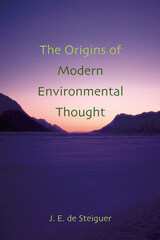 The Origins of Modern Environmental Thought
J. Edward de Steiguer
University of Arizona Press, 2006 The Origins of Modern Environmental Thought provides readers with a concise and lively introduction to the seminal thinkers who created the modern environmental movement and inspired activism and policy change. Beginning with a brief overview of the works of Thoreau, Mill, Malthus, Leopold, and others, de Steiguer examines some of the earliest philosophies that underlie the field. He then describes major socioeconomic factors in post–World War II America that created the milieu in which the modern environmental movement began, with the publication of Rachel Carson’s Silent Spring. The following chapters offer summaries and critical reviews of landmark works by scholars who helped shape and define modern environmentalism.
Among others, de Steiguer examines works by Barry Commoner, Paul Ehrlich, Kenneth Boulding, Garrett Hardin, Herman Daly, and Arne Naess. He describes the growth of the environmental movement from 1962 to 1973 and explains a number of factors that led to a decline in environmental interest during the mid-1970s. He then reveals changes in environmental awareness in the 1980s and concludes with commentary on the movement through 2004. Updated and revised from The Age of Environmentalism, this expanded edition includes three new chapters on Stewart Udall, Roderick Nash, and E. F. Schumacher, as well as a new concluding chapter, bibliography, and updated material throughout. This primer on the history and development of environmental consciousness and the many modern scholars who have shaped the movement will be useful to students in all branches of environmental studies and philosophy, as well as biology, economics, and physics.
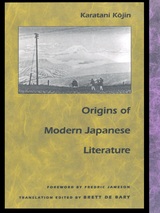 Origins of Modern Japanese Literature
Karatani Kojin
Duke University Press, 1993 Since its publication in Japan ten years ago, Origins of Modern Japanese Literature has become a landmark book, playing a pivotal role in defining discussions of modernity in that country. Against a history of relative inattention on the part of Western translators to modern Asian critical theory, this first English publication is sure to have a profound effect on current cultural criticism in the West. It is both the boldest critique of modern Japanese literary history to appear in the post-war era and a major theoretical intervention, which calls into question the idea of modernity that informs Western consciousness.
In a sweeping reinterpretation of nineteenth-and twentieth-century Japanese literature, Karatani Kojin forces a reconsideration of the very assumptions underlying our concepts of modernity. In his analysis, such familiar terms as origin, modern, literature, and the state reveal themselves to be ideological constructs. Karatani weaves many separate strands into an argument that exposes what has been hidden in both Japanese and Western accounts of the development of modern culture. Among these strands are: the "discovery" of landscape in painting and literature and its relation to the inwardness of individual consciousness; the similar "discovery" in Japanese drama of the naked face as another kind of landscape produced by interiority; the challenge to the dominance of Chinese characters in writing; the emergence of confessional literature as an outgrowth of the repression of sexuality and the body; the conversion of the samurai class to Christianity; the mythologizing of tuberculosis, cancer, and illness in general as a producer of meaning; and the "discovery" of "the child" as an independent category of human being.
A work that will be important beyond the confines of literary studies, Karatani's analysis challenges basic Western presumptions of theoretical centrality and originality and disturbs the binary opposition of the "West" to its so-called "other." Origins of Modern Japanese Literature should be read by all those with an interest in the development of cultural concepts and in the interrelating factors that have determined modernity.
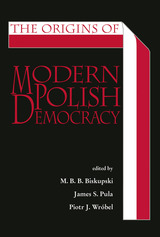 The Origins of Modern Polish Democracy
M. B. B. Biskupski
Ohio University Press, 2010 The Origins of Modern Polish Democracy is a series of closely integrated essays that traces the idea of democracy in Polish thought and practice. It begins with the transformative events of the mid-nineteenth century, which witnessed revolutionary developments in the socioeconomic and demographic structure of Poland, and continues through changes that marked the postcommunist era of free Poland. The idea of democracy survived in Poland through long periods of foreign occupation, the trials of two world wars, and years of Communist subjugation. Whether in Poland itself or among exiles, Polish speculation about the creation of a liberal-democratic Poland has been central to modern Polish political thought. This volume is unique in that is traces the evolution of the idea of democracy, both during the periods when Poland was an independent country—1918-1939—and during the periods of foreign occupation before 1918 through World War II and the Communist era. For those periods when Poland was not free, the volume discusses how the idea of democracy evolved among exile and underground Polish circles. This important work is the only single-volume English-language history of modern Polish democratic thought and parliamentary systems and represents the latest scholarly research by leading specialists from Europe and North America.
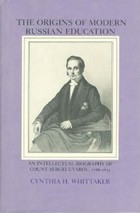 The Origins of Modern Russian Education: An Intellectual Biography of Count Sergei Uvarov, 1786-1855
Cynthia H. Whittaker
Northern Illinois University Press, 2011
As minister of education and president of the Academy of Sciences, Count Sergei Uvarov was one of the most important statesmen in 19th-century Russia. But, because he has often been labeled as a reactionary and sycophant, his ideas and policies have tended to be dismissed as examples of the bankruptcy of the Russian “old regime.”
Whittaker’s intellectual biography, based on research in Russia and Finland, offers a striking reinterpretation of Uvarov’s career and of the quality of Russian intellectual life in his age and in assuring his country’s place in the mainstream of European educational development. With its wealth of new insights, The Origins of Modern Russian Education will be of interest to readers, specialists and nonspecialists alike, who are concerned with 19th-century Russian and with the history of education in general.
 The Origins of Moral Theology in the United States: Three Different Approaches
Charles E. Curran
Georgetown University Press, 1997 Charles E. Curran presents the first in-depth analysis of the origins of Catholic moral theology in the United States, focusing on three significant figures in the late nineteenth century and demonstrating that methodological pluralism and theological diversity existed in the Church even then. Curran begins by tracing the historical development of moral theology, especially as presented in nineteenth-century manuals of moral theology, which offered a legal model of morality including a heavy emphasis on canon law. He then probes the different approaches and ideas of three important writers: Aloysius Sabetti, a Jesuit who was a typical, as well as the most influential, American manualist; Thomas J. Bouquillon, first chair of moral theology at Catholic University of America, a neoscholastic who criticized the manuals' approach as narrow and incomplete for failing to address principles, virtues, and the connection to systematic theology; and clerical educator John B. Hogan, a casuist who developed a more inductive and historically conscious methodology. Curran describes how all three men dealt in different ways with the increasing role of authoritative teachings in moral theology from the Vatican. He also shows how they reflected their American context and the views of their own time on women and sexuality. So little attention has been paid to the development of moral theology in this country that these authors are unknown to many scholars. Curran's book corrects this oversight and proposes that the ferment revealed in their writings offers important lessons for contemporary Catholic moral theology.
Origins of New Mexico Families: A Genealogy of the Spanish Colonial Period
Fray Angélico Chávez
Museum of New Mexico Press, 1992 This classic genealogy reference book is considered to be the starting place for anyone having family history ties to New Mexico, and for those interested in the history of New Mexico. Well before Jamestown and the Pilgrims, New Mexico was settled continuously beginning in 1598 by Spaniards whose descendants still make up a major portion of the population of New Mexico.
 The Origins Of Postcommunist Elites: From Prague Spring To The Breakup Of Czechoslovakia
Gil Eyal
University of Minnesota Press, 2003 How is it that Czechoslovakia’s separation into two countries in 1993 was accomplished so peacefully—especially when compared with the experiences of its neighbors Russia and Yugoslavia? This book provides a sociological answer to this question—and an empirical explanation for the breakup of Czechoslovakia—by tracing the political processes begun in the Prague Spring of 1968. Gil Eyal’s main argument is that Czechoslovakia’s breakup was caused by a struggle between two fractions of what sociologists call the “new class,” which consisted primarily of intellectuals and technocrats. Focusing on the process of polarization that created these two distinct political elites, Eyal shows how, in response to the events of the ill-fated Prague Spring, Czech and Slovak members of the “new class” embarked on divergent paths and developed radically different, even opposed, identities, worldviews, and interests. Unlike most accounts of postcommunist nationalist conflict, this book suggests that what bound together each of these fractions—and what differentiated each from the other—were not national identities and nationalist sentiments per se, but their distinctive visions of the social role of intellectuals.
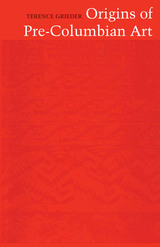 Origins of Pre-Columbian Art
By Terence Grieder
University of Texas Press, 1982 Since Columbus first called the natives of the Americas “Indians,” the sources of their art and culture have been a puzzle. The strange mixture of objects of Asian appearance with those decidedly un-Asian has provided fuel for controversy between those who see the American cultures as products of diffusion and those who see them as independent inventions. Origins of Pre-Columbian Art cuts through this old dispute to provide a fresh look at ancient cultural history in the Americas and the Pacific basin. Using evidence from archaeology, ethnology, and psychology, Terence Grieder suggests that contact between individuals across cultural borders is the root of both invention and diffusion. By tracing the spread of early symbolic techniques, materials, and designs from Europe and Asia to the lands of the Pacific and to the Americas, he displays the threads woven through humanity’s common cultural heritage. While archaeology provides examples of ancient symbols, ethnology reveals widely separated modern peoples still using these symbols and giving them similar meanings. Mapping these patterns of use and meaning, the author describes three waves of migration from Asia to the Americas, each carrying its own cluster of ideas and the symbols that expressed them. First Wave cultures focused on their environment and on the human body, inventing symbols that compared people and nature. Second Wave symbolism emphasized the center and the periphery: the village and the horizon; the tree or pole as world axis; and the world’s rim, where spirits exist. These cultures created masks to give form to those beings beyond the horizon. The heavens were finally incorporated into the system of symbols by Third Wave peoples, who named the celestial bodies as gods, treasured heaven-colored stones, and represented the world in pyramids. Emphasizing the interpretation of art in its many forms, Grieder has found that such seemingly minor decorations as bark cloth clothing and tattoos have deep meaning. Ancient art, he argues, was the vehicle for ancient science, serving to express insights into biology, astronomy, and the natural world.
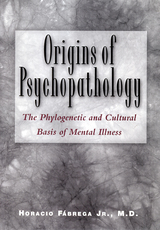 Origins of Psychopathology: The Phylogenetic and Cultural Basis of Mental Illness
Fábrega Jr., Horacio
Rutgers University Press, 2002 What are the origins of human psychopathology? Is mental illness a relatively recent phenomenon, or has it been with us throughout evolution?
In Origins of Psychopathology, Horacio Fárega Jr. employs principles of evolutionary biology to better understand the significance of mental illness. He explores whether what psychiatry has categorized as mental disorders could have existed during earlier phases of human evolution. Fábrega approaches the prominent features of mental disorders as adaptive responses to the environment and life’s circumstances, which in turn can only be understood in the context of our evolutionary past. Taking his cue from theoretical issues raised by research into primate behavior and early hominid evolution, he poses the question: What, if any, aspects of mental illness are rooted in our evolution? Does mental illness occur in primates and other animals, and if so, what does this tell us about mental illness in human evolution? How has mental illness played an adaptive role? How has the development of language and higher cognitive functions affected characteristics of psychopathology? Fábrega synthesizes insights from both the clinical and the evolutionary points of view. This facet of psychopathology, which involves its origins and manifestations viewed across the expanse of human evolution, has, until now, been largely neglected in psychiatric education, theory, and practice.
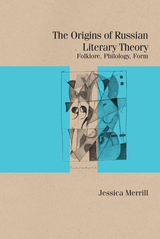 The Origins of Russian Literary Theory: Folklore, Philology, Form
Jessica Merrill
Northwestern University Press, 2022 Russian Formalism is widely considered the foundation of modern literary theory. This book reevaluates the movement in light of the current commitment to rethink the concept of literary form in cultural-historical terms. Jessica Merrill provides a novel reconstruction of the intellectual historical context that enabled the emergence of Formalism in the 1910s. Formalists adopted a mode of thought Merrill calls the philological paradigm, a framework for thinking about language, literature, and folklore that lumped them together as verbal tradition. For those who thought in these terms, verbal tradition was understood to be inseparable from cultural history. Merrill situates early literary theories within this paradigm to reveal abandoned paths in the history of the discipline—ideas that were discounted by the structuralist and post-structuralist accounts that would emerge after World War II.
The Origins of Russian Literary Theory reconstructs lost Formalist theories of authorship, of the psychology of narrative structure, and of the social spread of poetic innovations. According to these theories, literary form is always a product of human psychology and cultural history. By recontextualizing Russian Formalism within this philological paradigm, the book highlights the aspects of Formalism’s legacy that speak to the priorities of twenty-first-century literary studies.
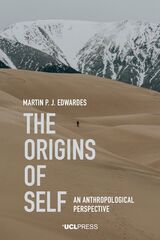 The Origins of Self: An Anthropological Perspective
Martin P. J. Edwardes
University College London, 2019 The Origins of Self explores the role selfhood plays in defining both human society and each individual in that society. It considers the genetic and cultural origins of self, the role that self plays in socialization and language, and the types of selves we generate in our individual journeys to and through adulthood. Martin P. J. Edwardes argues that other-awareness is a relatively early evolutionary development, present throughout the primate clade and perhaps beyond, but self-awareness is a product of the sharing of social models, something only humans appear to do. The self of which we are aware is not something innate within us, it is a model of our self produced as a response to the models of us offered to us by other people. Edwardes proposes that human construction of selfhood involves seven different types of self. All but one of them are internally generated models, and the only nonmodel, the actual self, is completely hidden from conscious awareness. We rely on others to tell us about our self, and even to let us know we are a self. Developed in relation to a range of subject areas—linguistics, anthropology, genomics, and cognition, as well as sociocultural theory—The Origins of Self is of particular interest to students and researchers studying the origins of language, human origins in general, and the cognitive differences between human and other animal psychologies.
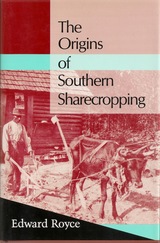 The Origins of Southern Sharecropping
Edward Royce
Temple University Press, 1993 Vivid primary accounts of post-Civil War life by planters and freed slaves complement this study of the rise of southern sharecropping. Edward Royce employs both historical and sociological methods to probe the question of why slavery was replaced by sharecropping rather than by some other labor arrangement. His detailed analysis illuminates conflicts between labor and capital as one group struggles to preserve the plantation system while the other pursues a quest for land and autonomy. Royce contends that southern sharecropping occurred through a "constriction of possibilities," that it was shaped by default rather than orchestrated by economic reconstruction by white landowners and black laborers. Highlighting the conflict-ridden nature of the process of social change, The Origins of Southern Sharecropping includes rich descriptions of the plantation system and gang labor, the freed slaves' dream of forty acres and a mule, the black colonization movement, the Freedman's Bureau, and racial relations after the war. In the series Labor and Social Change, edited by Paula Rayman and Carmen Sirianni.
The Origins of Southwestern Agriculture
R. G. Matson
University of Arizona Press, 1991 Presents a new model for the origins of Basketmaker II culture based on the evolution of maize use, focusing on the changes in maize growing rather than on the changes in, or to, the people involved.
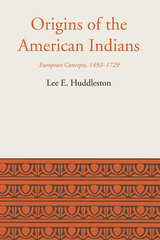 Origins of the American Indians: European Concepts, 1492-1729
By Lee E. Huddleston
University of Texas Press, 1967 The American Indian—origin, culture, and language—engaged the best minds of Europe from 1492 to 1729. Were the Indians the result of a co-creation? Were they descended from the Ten Lost Tribes of Israel? Could they have emigrated from Carthage, Phoenicia, or Troy? All these and many other theories were proposed. How could scholars account for the multiplicity of languages among the Indians, the differences in levels of culture? And how did the Indian arrive in America—by using as a bridge a now-lost continent or, as was later suggested by some persons in the light of an expanding knowledge of geography, by using the Bering Strait as a migratory route? Most of the theories regarding the American Indian were first advanced in the sixteenth century. In this distinctive book Lee E. Huddleston looks carefully into those theories and proposals. From many research sources he weaves an historical account that engages the reader from the very first. The two most influential men in an early-developing controversy over Indian origins were Joseph de Acosta and Gregorio García. Approaching the subject with restraint and with a critical eye, Acosta, in 1590, suggested that the presence of diverse animals in America indicated a land connection with the Old World. On the other hand, García accepted several theories as equally possible and presented each in the strongest possible light in his Origen de los indios of 1607. The critical position of Acosta and the credulous stand of García were both developed in Spanish writing in the seventeenth century. The Acostans settled on an Asiatic derivation for the Indians; the Garcians continued to accept most sources as possible. The Garcian position triumphed in Spain, as was shown by the republication of García’s Origen in 1729 with considerable additions consistent within the original framework. Outside of Spain, Acosta was the more influential of the two. His writings were critical in the thinking of such men as Joannes de Laet (who bested Grotius in their polemic on Indian origins), Georg Horn, and Samuel Purchas. By the end of the seventeenth century the Acostans of Northern Europe had begun to apply physical characteristics to the determination of Indian origins, and by the early eighteenth century these new criteria were beginning to place the question of Indian origins on a more nearly scientific level.
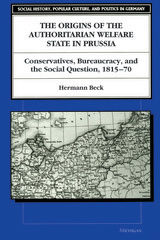 The Origins of the Authoritarian Welfare State in Prussia: Conservatives, Bureaucracy, and the Social Question, 1815-70
Hermann Beck
University of Michigan Press, 1997 Prussia's social and political structure, institutions, and values were in many ways formative for German history after 1871. After unification Prussia accounted for roughly two-thirds of the empire's size and population, but its weight within Germany was even greater because Prussia in large part molded the German identity and shaped Germany's image abroad. The Origins of the Authoritarian Welfare State in Prussia examines this Prussian/German identity. It investigates the complex traditions of ideas, institutions, and social policy measures that lay at the root of the conservative Prussian welfare state. The examination of the ideas and policies of Prussian officials brings out a peculiar welfare state mentality of benevolence and patriarchal concern, pervaded by authoritarian streaks, that was unique in nineteenth-century Europe. In addition, the study analyzes the historiographical implications of the question of continuity and discontinuity in German history. The Origins of the Authoritarian Welfare State in Prussia is of interest to scholars and students of German history as well as to students of governmental social policy and of the workings of a welfare state. Hermann Beck is Associate Professor of History, University of Miami.
 The Origins of the British Labour Party
J.H. Stewart Reid
University of Minnesota Press, 1955
The Origins of the British Labour Party was first published in 1955. Minnesota Archive Editions uses digital technology to make long-unavailable books once again accessible, and are published unaltered from the original University of Minnesota Press editions.
What were the social and economic forces in England that gave rise to the British Labour Party? How did the party function in its formative years? How does the British labor movement compare with its American counterpart? If American labor enters politics as a separate party, is it likely to adopt a program resembling the socialism of the British Party?
Professor Reid's detailed account of the origins and development of the British Labour Party lays the groundwork for answers to questions like these, questions that are pertinent to the social and political issues of America as well as England. Since the appearance of a body of organized labor is a phenomenon occasioned by the process of industrialization, and since that process began in Great Britain almost a century earlier than on the American continent, the student of labor politics may well ponder whether something similar to the British experience lies ahead for America.
Professor Reid describes the conditions that brought about a specifically labor party, tells how it was established, and traces its first 20 years as a parliamentary party. He shows that the party began as an alliance of diverse forces having in common only the conviction that neither the Liberal nor the Conservative party would tackle such issues as housing, minimum wages, or unemployment insurance. He makes clear that, in working to achieve these short-term goals, the varied elements that made up the party finally worked out the peculiar compromise on policy and philosophy that is the basis of the British Labour Party today.
Origins of the Bronze Age Oasis Civilization in Central Asia
Fredrik Talmage Hiebert
Harvard University Press, 1994 The Murghad River delta, the site of ancient Margiana, was extensively settled during at least part of the Bronze Age, between 2200 and 1750 B.C. Oases in an otherwise desert region, settlements were situated along deltaic branches of the river or canals dug from those branches. Excavations at one of the largest and most complex of these sites, Gonur depe, have been ongoing for many years under the direction of Victor Sarianidi. During the 1988–89 field season, Fred Hiebert excavated part of Gonur in collaboration with the Ministry of Culture of Turkmenistan and the Institute of Archaeology in Moscow.
Published here, the results provide a key to understanding the large corpus of material of the Bactro-Margiana Archaeological Complex extracted over the past 30 years from this and neighboring sites of the Oxus civilization.
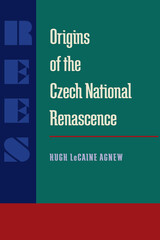 Origins of the Czech National Renascence
Hugh LeCaine Agnew
University of Pittsburgh Press, 1993 With the fall of socialism in Europe, the former East bloc nations experienced a rebirth of nationalism as they struggled to make the difficult transition to a market-based economy and self-governance. The dissolution of Czechoslovakia, in particular, underscored the power of ethnic identity and ancestral loyalties.
Hugh Agnew develops the argument that Czechoslovakia's celebrated national revival of the mid-eighteenth century has its intellectual roots in the Enlightenment and defined the nation's character and future development. He describes how intellectuals in eighteenth-century Bohemia and Moravia--the “patriotic intelligentsia”--used their discovery of pre-seventeenth-century history and literature to revive the antiquated Czech vernacular and cultivate a popular ethnic consciousness. Agnew also traces the significance of the intellectual influences of the wider Slavic world whereby Czech intellectuals redefined their ethnic and cultural heritage.
Origins of the Czech National Renascence contributes to a renewed interpretation of a crucial period in Czech history.
 The Origins of the Developmental State in Taiwan: Science Policy and the Quest for Modernization
J. Megan Greene
Harvard University Press, 2008 The rapid growth of Taiwan’s postwar “miracle” economy is most frequently credited to the leading role of the state in promoting economic development. Megan Greene challenges this standard interpretation in the first in-depth examination of the origins of Taiwan’s developmental state.
Greene examines the ways in which the Guomindang state planned and promoted scientific and technical development both in mainland China between 1927 and 1949 and on Taiwan after 1949. Using industrial science policy as a lens, she shows that the state, even during its most authoritarian periods, did not function as a monolithic entity. State planners were concerned with maximizing the use of Taiwan’s limited resources for industrial development. Political leaders, on the other hand, were most concerned with the state’s political survival. The developmental state emerged gradually as a result of the combined efforts of technocrats and outsiders, including academicians and foreign advisors. Only when the political leadership put its authority and weight behind the vision of these early planners did Taiwan’s developmental state fully come into being.
In Taiwan’s combination of technocratic expertise and political authoritarianism lie implications for our understanding of changes taking place in mainland China today.
 The Origins of the Dual City: Housing, Race, and Redevelopment in Twentieth-Century Chicago
Joel Rast
University of Chicago Press, 2019 Chicago is celebrated for its rich diversity, but, even more than most US cities, it is also plagued by segregation and extreme inequality. More than ever, Chicago is a “dual city,” a condition taken for granted by many residents. In this book, Joel Rast reveals that today’s tacit acceptance of rising urban inequality is a marked departure from the past. For much of the twentieth century, a key goal for civic leaders was the total elimination of slums and blight. Yet over time, as anti-slum efforts faltered, leaders shifted the focus of their initiatives away from low-income areas and toward the upgrading of neighborhoods with greater economic promise. As misguided as postwar public housing and urban renewal programs were, they were born of a long-standing reformist impulse aimed at improving living conditions for people of all classes and colors across the city—something that can’t be said to be a true priority for many policymakers today. The Origins of the Dual City illuminates how we normalized and became resigned to living amid stark racial and economic divides.
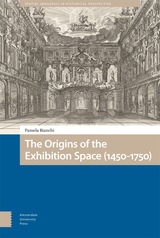 The Origins of the Exhibition Space (1450-1750)
Pamela Bianchi
Amsterdam University Press, 2023 Before the first purpose-designed exhibition spaces and painting exhibitions emerged, showing art was mainly related to the habit of dressing up spaces for political commemorations, religious festivals, and marketing strategies. Palaces, cloisters, façades, squares, and shops became temporary and privileged venues for art display, where sociability was performed, and the idea of exhibition developed. What were those places and events? What aesthetic, cultural, social and political discourses intersected with the early idea of exhibition space? How did displaying art shape a new vocabulary within these events, and conversely, how have these occasions conditioned exhibiting practices? This book traces the origins of the exhibition space by studying its visual and written imagery in the early modern period. It reconsiders events and habits that contributed to shaping the imagery of the exhibition space, and to defining exhibition-making practices, exploring micro-histories and long-term changes.
Origins of the Modern Mind: Three Stages in the Evolution of Culture and Cognition
Merlin Donald
Harvard University Press, 1991 This bold and brilliant book asks the ultimate question of the life sciences: How did the human mind acquire its incomparable power? In seeking the answer, Merlin Donald traces the evolution of human culture and cognition from primitive apes to artificial intelligence, presenting an enterprising and original theory of how the human mind evolved from its presymbolic form.
 Origins of the National Forests
Harold K. Steen, ed.
Duke University Press, 1992 The national forests lay across America's diverse ecological and political geography, their 191 million acres ocuppying about 10 percent of the nation's land base. On the occasion of the centennial of the National Forest System, Origins of the National Forests examines the issues that have confronted the development, management, and use of the national forests since their inception in 1891. The national forests are a major source of wood, water, minerals, forage, animal life and habitat, and wilderness. Yet questions of who controls and who benefits from the resources have posed problems and conflicts from the origins of the Forest Service to the present. Based on a 1991 Forest History Society conference, the essays collected here discuss a range of important topics surrounding our national forests, including the relationship between the federal and state systems that regulate the forests; the privately owned lands within the forests that are governed by federal statutes, state laws, and county ordinances; the ill-defined rights of those who lived on the land long before it was a national forest and were forced off the land; and the effect of early policymaking decisions made within the framework of the emerging Conservation Movement. Contributors. Ron Arnold, Pamela A. Conners, Mary S. Culpin, Stanley Dempsey, Peter Gillis, Donn E. Headley, Robert L. Hendricks, Stephen Larrabee, Patricia Nelson Limerick, Dennis L. Lynch, Michael McCarthy, Char Miller, Joseph A. Miller, James Muhn, Kevin Palmer, Donald Pisani, John F. Reiger, William Rowley, Michael Ryan, William E. Shands, Harold K. Steen, Richard White, Gerald W. Williams
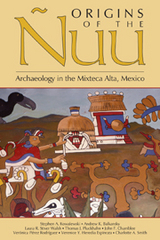 Origins of the Ñuu: Archaeology in the Mixteca Alta, Mexico
Stephen A. Kowalewski
University Press of Colorado, 2009 Combining older findings with new data on 1,000 previously undescribed archaeological sites, Origins of the Ñuu presents the cultural evolution of the Mixteca Alta in an up-to-date chronological framework. The ñuu - the kingdoms of the famous Mixtec codices - are traced back through the Postclassic and Classic periods to their beginnings in the first states of the Terminal Formative, revealing their origin, evolution, and persistence through two cycles of growth and collapse. Challenging assumptions that the Mixtec were peripheral to better-known peoples such as the Aztecs or Maya, the book asserts that the ñuu were a major demographic and economic power in their own right. Older explanations of multiregional or macroregional systems often portrayed civilizations as rising in a cradle or hearth and spreading outward. New macroregional studies show that civilizations are products of more complex interactions between regions, in which peripheries are not simply shaped by cores but by their interactions with multiple societies at varying distances from major centers. Origins of the Ñuu is a significant contribution to this emerging area of archaeological research.
The Origins of the Peruvian Labor Movement, 1883–1919
Peter Blanchard
University of Pittsburgh Press, 1982 In January 1919 the Peruvian government issued a decree establishing the eight-hour work day—the culmination of thirty years of struggle by Peru’s works and evidence of the increasing influence of the labor movement in Peruvian politics and society.
Beginning in October 1883 at the time of Treaty of Ancón terminating four years of warfare with Chile, Peru’s workers started a thirty-year effort to become an active and influential sector of society. They formed organizations, actively participated in the nation’s political life, engaged in industrial agitation—all revealing a growing class consciousness and an ability to compel both employers and governments to respond to their demands. Blanchard’s analysis and insights into the economic factors underlying Peru’s labor unrest also extends to labor developments and the modernization process throughout Latin America.
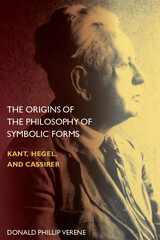 The Origins of the Philosophy of Symbolic Forms: Kant, Hegel, and Cassirer
Donald Phillip Verene
Northwestern University Press, 2012 The Origins of the Philosophy of Symbolic Forms marks the culmination of Donald Phillip Verene’s work on Ernst Cassirer and heralds a major step forward in the critical work on the twentieth-century philosopher. Verene argues that Cassirer’s philosophy of symbolic forms cannot be understood apart from a dialectic between the Kantian and Hegelian philosophy that lies within it.
Verene takes as his departure point that Cassirer never wishes to argue Kant over Hegel. Instead he takes from each what he needs, realizing that philosophical idealism itself did not stop with Kant but developed to Hegel, and that much of what remains problematic in Kantian philosophy finds particular solutions in Hegel’s philosophy. Cassirer never replaces transcendental reflection with dialectical speculation, but he does transfer dialectic from a logic of illusion, that is, the form of thinking beyond experience as Kant conceives it in the Critique of Pure Reason, to a logic of consciousness as Hegel employs it in the Phenomenology of Spirit. Cassirer rejects Kant’s thing-in-itself but he also rejects Hegel’s Absolute as well as Hegel’s conception of Aufhebung. Kant and Hegel remain the two main characters on his stage, but they are accompanied by a large secondary cast, with Goethe in the foreground. Cassirer not only contributes to Goethe scholarship, but in Goethe he finds crucial language to communicate his assertions. Verene introduces us to the originality of Cassirer’s philosophy so that we may find access to the riches it contains.
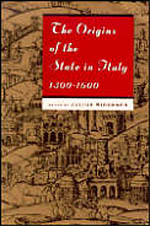 The Origins of the State in Italy, 1300-1600
Edited by Julius Kirshner
University of Chicago Press, 1996 The beginnings of the state in Europe is a central topic of contemporary historical research. The making of such early modern Italian regional states as Florence, the kingdom of Naples, Milan, and Venice exemplifies a decisive turn in the state tradition of Western Europe.
The Origins of the State in Italy, 1300-1600 represents the best in American, British, and Italian scholarship and offers a valuable and critical overview of the key problems of the emergence of the state in Europe. Some of the topics covered include the political legitimacy of the aborning regional states, the changing legal culture, the conflict between church and state, the forces shaping public finances, and the creation of the Italian League.
The eight essays in this collection originally appeared in the Journal of Modern History. Contributors include Roberto Bizzocchi, Giorgio Chittolini, Trevor Dean, Riccardo Fubini, Elena Fasano Guarini, Aldo Mazzacane, Anthony Molho, and Pierangelo Schiera. This volume will appeal to historians, historical sociologists, and historians of political thought.
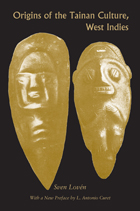 Origins of the Tainan Culture, West Indies
Sven Loven, with a new preface by L. Antonio Curet
University of Alabama Press, 2010 When originally published in German in 1924, this volume was hailed as the first modern, comprehensive archaeological overview of an emerging area of the world. Yes, the Caribbean islands had long been known and owned, occupied, or traded among by the economically advanced nations of the world. However, the original inhabitants—as well as their artifacts, languages, and culture—had been treated by explorers and entrepreneurs alike as either slaves or hindrances to progress, and were used or eliminated. There was no publication that treated seriously the region and the peoples until this work. In the following ten years, additional pertinent publications emerged, along with a request to translate the original into Spanish. Based on those recent publications, Loven decided to update and reissue the work in English, which he thought to be the future international language of scholarship. This work is a classic, with enduring interpretations, broad geographic range, and an eager audience.
Origins of the TVA: The Muscle Shoals Controversy, 1920-1932
Preston J. Hubbard
University of Alabama Press, 2005 "Professor Hubbard's painstaking study, Origins of the TVA, shows the thorny course of events before TVA was born....Students of legislation and party politics will be grateful to Professor Hubbard for his careful and useful narrative of the long conflict over policy. His work is well done. He has examined the public records and some of the private papers....Professor Hubbard's volume is a credit to its author and to the press which published it." --J. B. Shannon, The University of Nebraska, in Political Science Quarterly
The Origins of the War of 1870
Robert Howard Lord
Harvard University Press Robert Howard Lord had the opportunity of using and transcribing in full the seven volumes of documents in the archives of the German Foreign Office which contain the German official record of the diplomatic crisis leading up to the outbreak of the War of 1870. Save for rare exceptions these documents have never hitherto been printed, and have been seen by only a few investigators; it has therefore seemed worth while to publish them in extenso. The period covered is, indeed, a brief one—July 4–15, 1870, but a period as packed with events and pregnant with fateful consequences as the famous “ten days” of 1914. As an introduction to the documents Lord has retraced the history of the crisis in the light of the mass of new sources, with the aim both of bringing out the conclusions to be drawn from the new material and of summarizing the subject for the general reader.
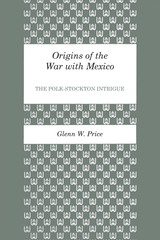 Origins of the War with Mexico: The Polk-Stockton Intrigue
By Glenn W. Price
University of Texas Press, 1967 In the spring of 1846 James K. Polk announced that the Mexican Army had invaded United States territory and had “shed American blood upon the American soil.” This political rhetoric, as Glenn W. Price establishes in Origins of the War with Mexico: The Polk-Stockton Intrigue, is part of the myth of American innocence. It represents the “internal contradiction between professed values and patterns of action,” perpetuated by American historical writing that emphasizes national consequences of the acquisition of foreign territory and minimizes both its international significance and the importance of the diplomatic and military methods used. A conflict with Mexico, leading to territorial expansion of the United States, was not unwanted. California was Polk’s prime objective from the beginning of his administration, and this Mexican province was to be acquired by conquest in a war initiated on the Texas-Mexican border. To this end Polk sent several agents to Texas, but the man at the center of the war intrigue was Commodore Robert F. Stockton, independently wealthy, prominent in politics, and the head of great business enterprises. Sufficient evidence exists to substantiate in every important particular the steps in Polk’s path of intrigue: his attempts to bribe Mexican officials; his efforts to encourage revolutionary forces in the Mexican provinces; his use of the threat of force to frighten Mexico into selling California; his attempt to initiate a war by proxy through the government of Texas and Anson Jones. If Polk was unwilling to assume responsibility for aggressive war, Stockton was not; he arrived in Galveston with a squadron of naval vessels in May of 1845, prepared to finance an army of three thousand men from his personal funds to avoid the overt involvement of the government of the United States. But, says Price, for all the internationally dangerous implications of such a maneuver, the two men who played the chief roles in the war intrigue of 1845 are representative in their written and spoken expression of faith in American righteousness of action and in the American tradition of the divine mission. Based on extensive research into the written and spoken words of the people who were involved, directly and indirectly, in the events, this analysis (which will be considered revisionist) of the origins of the War with Mexico is the result of the kind of objective approach to national history for which the author makes a plea in his preface and conclusion and in his interpretive comments throughout the work. The historian, Price believes, “has the extraordinary advantage of being able to examine mankind from that distance and elevation and detachment which so often reveals, as it is designed to reveal, the gulf between pretension and performance.”
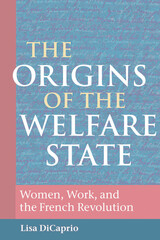 The Origins of the Welfare State: Women, Work, and the French Revolution
Lisa DiCaprio
University of Illinois Press, 2005 Women workers and the revolutionary origins of the modern welfare state In May 1790, the French National Assembly created spinning workshops (ateliers de filature) for thousands of unemployed women in Paris. These ateliers disclose new aspects of the process which transformed Old Regime charity into revolutionary welfare initiatives characterized by secularization, centralization, and entitlements based on citizenship. This study is the first to examine women and the welfare state in its formative period at a time when modern concepts of human rights were elaborated. In The Origins of the Welfare State, Lisa DiCaprio reveals how the women working in the ateliers, municipal welfare officials, and the national government vied to define the meaning of revolutionary welfare throughout the Revolution. Presenting demands for improved wages and working conditions to a wide array of revolutionary officials, the women workers exercised their rights as "passive citizens" capaciously and shaped the meanings of work, welfare, and citizenship. Looking backward to the Old Regime and forward to the nineteenth century, this study explores the interventionist spirit that characterized liberalism in the eighteenth century and serves as a bridge to the history of entitlements in the nineteenth and twentieth centuries.
The Origins of Theoretical Population Genetics: With a New Afterword
William B. Provine
University of Chicago Press, 2001 Tracing the development of population genetics through the writings of such luminaries as Darwin, Galton, Pearson, Fisher, Haldane, and Wright, William B. Provine sheds light on this complex field as well as its bearing on other branches of biology.
The Origins of Violence: Religion, History and Genocide
John Docker
Pluto Press, 2008 Genocide is commonly understood to be a terrible aberration in human behaviour, performed by evil, murderous regimes such as the Nazis and dictators like Suharto and Pinochet. John Docker argues that the roots of genocide go far deeper into human nature than most people realise.
Genocide features widely in the Bible, the literature of ancient Greece and Rome, and debates about the Enlightenment. These texts are studied in depth to trace the origins of violence through time and across civilisations. Developing the groundbreaking work of Raphaël Lemkin, who invented the term 'genocide', Docker guides us from the dawn of agricultural society, through classical civilisation to the present, showing that violence between groups has been integral to all periods of history.
This revealing book will be of great interest to those wishing to understand the roots of genocide and why it persists in the modern age.
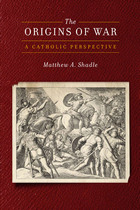 The Origins of War: A Catholic Perspective
Matthew A. Shadle
Georgetown University Press, 2011 Debate rages within the Catholic Church about the ethics of war and peace, but the simple question of why wars begin is too often neglected. Catholics’ assumptions about the causes of conflict are almost always drawn uncritically from international relations theory—a field dominated by liberalism, realism, and Marxism—which is not always consistent with Catholic theology. In The Origins of War, Matthew A. Shadle examines several sources to better understand why war happens. His retrieval of biblical literature and the teachings of figures from church tradition sets the course for the book. Shadle then explores the growing awareness of historical consciousness within the Catholic tradition—the way beliefs and actions are shaped by time, place, and culture. He examines the work of contemporary Catholic thinkers like Pope John Paul II, Jacques Maritain, John Courtney Murray, Dorothy Day, Brian Hehir, and George Weigel. In the constructive part of the book, Shadle analyzes the movement within international relations theory known as constructivism—which proposes that war is largely governed by a set of socially constructed and cultural influences. Constructivism, Shadle claims, presents a way of interpreting international politics that is highly amenable to a Catholic worldview and can provide a new direction for the Christian vocation of peacemaking.
 The Origins of You: How Childhood Shapes Later Life
Jay Belsky, Avshalom Caspi, Terrie E. Moffitt, and Richie Poulton
Harvard University Press, 2020 A Marginal Revolution Book of the Year
After tracking the lives of thousands of people from birth to midlife, four of the world’s preeminent psychologists reveal what they have learned about how humans develop.
Does temperament in childhood predict adult personality? What role do parents play in shaping how a child matures? Is day care bad—or good—for children? Does adolescent delinquency forecast a life of crime? Do genes influence success in life? Is health in adulthood shaped by childhood experiences? In search of answers to these and similar questions, four leading psychologists have spent their careers studying thousands of people, observing them as they’ve grown up and grown older. The result is unprecedented insight into what makes each of us who we are.
In The Origins of You, Jay Belsky, Avshalom Caspi, Terrie Moffitt, and Richie Poulton share what they have learned about childhood, adolescence, and adulthood, about genes and parenting, and about vulnerability, resilience, and success. The evidence shows that human development is not subject to ironclad laws but instead is a matter of possibilities and probabilities—multiple forces that together determine the direction a life will take. A child’s early years do predict who they will become later in life, but they do so imperfectly. For example, genes and troubled families both play a role in violent male behavior, and, though health and heredity sometimes go hand in hand, childhood adversity and severe bullying in adolescence can affect even physical well-being in midlife.
Painstaking and revelatory, the discoveries in The Origins of You promise to help schools, parents, and all people foster well-being and ameliorate or prevent developmental problems.
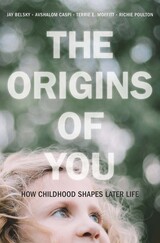 The Origins of You: How Childhood Shapes Later Life
Jay Belsky, Avshalom Caspi, Terrie E. Moffitt, and Richie Poulton
Harvard University Press A Marginal Revolution Book of the Year
“Brings the groundbreaking research of the top developmental psychologists of the past quarter-century to a wider audience…A masterpiece!”—Dante Cicchetti, Institute for Child Development at the University of Minnesota
“Deliver[s] a flood of insights around the book’s central question: To what degree do our childhood personalities and behaviors predict our adult selves?”—Wall Street Journal
“One of the best and most important works of the last few years…Fascinating.”—Tyler Cowen, Marginal Revolution
Does childhood temperament predict adult personality? What role do parents play in shaping how a child matures? Is day care bad—or good—for children? Does adolescent delinquency forecast a life of crime? Do genes influence success in life? Is one’s health shaped by childhood experiences? In search of answers to these questions, four leading psychologists dedicated their careers to studying thousands of people, observing them as they grew and emerging with unprecedented insight into what makes us who we are.
They found that human development is not subject to ironclad laws so much as a matter of possibilities and probabilities—multiple forces that together determine the direction of one’s life. The early years do predict who we become, but they do so imperfectly. At once actionable and revelatory, The Origins of You is an invaluable guide for parents, teachers, and anyone working with or caring for children.
Origins: The Lives and Worlds of Modern Cosmologists
Alan Lightman and Roberta Brawer
Harvard University Press, 1990 Origins reveals the human being within the scientist in a study of the philosophical, personal, and social factors that enter into the scientific process. Twenty-seven active cosmologists--including Stephen Hawking, Roger Penrose, Steven Weinberg, Vera Rubin, Allan Sandage, Margaret Geller, and Alan Guth--talk candidly about their childhoods and early influences, their motivations, prejudices, and worldviews. The book's lucid introduction traces the explosion of new ideas that has recently shaken cosmological thinking. Origins explores not just the origin of the universe but also the origins of scientific thought.
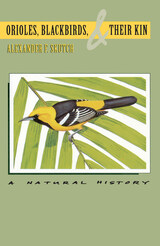 Orioles, Blackbirds, and Their Kin: A Natural History
Alexander F. Skutch
University of Arizona Press, 1996 From blackbirds and orioles to meadowlarks, grackles, and cowbirds, the variety and variation shown by members of the family Icteridae is legend. The family exhibits great diversity in size and coloration, mating and nest building, and habits and habitats. This group of 94 New World species once known as the troupials is well represented in backyards across America; yet most icterids are tropical or semi-tropical species that remain largely unstudied.
The least known of these species are perhaps best known to Alexander Skutch, who has studied birds in a Costa Rican tropical valley for more than half a century. In this fascinating book the first devoted exclusively to the icterids—he combines his own observations with those of other naturalists to provide a comparative natural history and biology of this remarkable family of birds. Devoting a separate chapter to each major group or genus, he delineates the outstanding characteristics of each and includes observations of little-studied tropical species such as caciques and oropendolas.
Orioles, Blackbirds, and Their Kin is an eminently readable natural history in the classic style. Enhanced by 31 scratchboard illustrations, this book will delight nature enthusiasts everywhere with its fascinating exposition of avian diversity. Because so much of the published information on the icterids is widely scattered, Skutch's painstaking compilation has created a valuable reference work that will provide students and researchers with a wealth of new insights into the tropical members of this New World family.
 The Orion Nebula: Where Stars Are Born
C. Robert O'Dell
Harvard University Press, 2003 The glowing cloud in Orion's sword, the Orion Nebula is a thing of beauty in the night sky; it is also the closest center of massive star formation--a stellar nursery that reproduces the conditions in which our own Sun formed some 4.5 billion years ago. The study of the Orion Nebula, focused upon by ever more powerful telescopes from Galileo's time to our own, clarifies how stars are formed, and how we have come to understand the process. C. Robert O'Dell has spent a lifetime studying Orion, and in this book he explains what the Nebula is, how it shines, its role in giving birth to stars, and the insights it affords into how common (or rare) planet formation might be.
An account of astronomy's extended engagement with one remarkable celestial object, this book also tells the story of astronomy over the last four centuries. To help readers appreciate the Nebula and its secrets, O'Dell unfolds his tale chronologically, as astrophysical knowledge developed, and our knowledge of the Nebula and the night sky improved.
Because he served as chief scientist for the Hubble Space Telescope, O'Dell conveys a sense of continuity with his professional ancestors as he describes the construction of the world's most powerful observatory. The result is a rare insider's view of this observatory--and, from that unique perspective, an intimate observer's understanding of one of the sky's most instructive and magnificent objects.
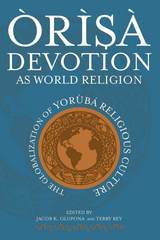 Òrìsà Devotion as World Religion: The Globalization of Yorùbá Religious Culture
Edited by Jacob K. Olupona and Terry Rey
University of Wisconsin Press, 2008 As the twenty-first century begins, tens of millions of people participate in devotions to the spirits called Òrìsà. This book explores the emergence of Òrìsà devotion as a world religion, one of the most remarkable and compelling developments in the history of the human religious quest. Originating among the Yorùbá people of West Africa, the varied traditions that comprise Òrìsà devotion are today found in Africa, the Americas, Asia, Europe, and Australia.
The African spirit proved remarkably resilient in the face of the transatlantic slave trade, inspiring the perseverance of African religion wherever its adherents settled in the New World. Among the most significant manifestations of this spirit, Yorùbá religious culture persisted, adapted, and even flourished in the Americas, especially in Brazil and Cuba, where it thrives as Candomblé and Lukumi/Santería, respectively. After the end of slavery in the Americas, the free migrations of Latin American and African practitioners has further spread the religion to places like New York City and Miami. Thousands of African Americans have turned to the religion of their ancestors, as have many other spiritual seekers who are not themselves of African descent.
Ifá divination in Nigeria, Candomblé funerary chants in Brazil, the role of music in Yorùbá revivalism in the United States, gender and representational authority in Yorùbá religious culture—these are among the many subjects discussed here by experts from around the world. Approaching Òrìsà devotion from diverse vantage points, their collective effort makes this one of the most authoritative texts on Yorùbá religion and a groundbreaking book that heralds this rich, complex, and variegated tradition as one of the world’s great religions.
 Orlando Furioso: A New Verse Translation
Ludovico Ariosto
Harvard University Press, 2009 The appearance of David R. Slavitt’s translation of Orlando Furioso (“Mad Orlando”), one of the great literary achievements of the Italian Renaissance, is a publishing event. With this lively new verse translation, Slavitt introduces readers to Ariosto’s now neglected masterpiece—a poem whose impact on Western literature can scarcely be exaggerated. It was a major influence on Spenser’s Faerie Queene. William Shakespeare borrowed one of its plots. Voltaire called it the equal of the Iliad, the Odyssey, and Don Quixote combined. More recently, Italo Calvino drew inspiration from it. Borges was a fan. Now, through translations of generous selections from this longest of all major European poems, Slavitt brings the poem to life in ways previous translators have not.At the heart of Ariosto’s romance are Orlando’s unrequited love for the pagan princess Angelica and his jealous rage when she elopes. The action takes place against a besieged Paris, as Charlemagne and his Christian paladins defend the city against the Saracen king. The poem, however, obeys no geography or rules but its own, as the story moves by whim from Japan to the Hebrides to the moon; it includes such imaginary creatures as the hippogriff and a sea monster called the orc.Orlando Furioso is Dante’s medieval universe turned upside down and made comic. Characterized by satire, parody, and irony, the poem celebrates a new humanistic Renaissance conception of man in an utterly fantastical world. Slavitt’s translation captures the energy, comedy, and great fun of Ariosto’s Italian.
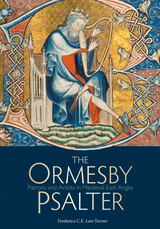 The Ormesby Psalter: Patrons and Artists in Medieval East Anglia
Frederica C. E. Law-Turner
Bodleian Library Publishing, 2005 The Ormesby Psalter is one of the most well-known yet mysterious manuscripts to survive the Middle Ages. It was made in a series of campaigns over many decades, starting in the late-thirteenth century, and the main decorated pages were executed in the 1310s for a marriage that never took place. Likely meant for private devotion by its wealthy patrons, this exquisite book of psalms was left unfinished.
Housed in Oxford’s Bodleian Library for over 150 years, this enigmatic masterpiece is perhaps the most magnificent yet enigmatic of the great Gothic psalters produced in East Anglia in the first half of the fourteenth century. Manuscript expert Frederica C. E. Law-Turner places the psalter within a wider historical context and then deciphers its lush illuminations—scenes that vary wildly in tone from the comic to the bawdy to the mythic. Full-color photographs illustrate the text’s many characters: falcons and hunting dogs at bay, kings and courtesans, and other animals dressed in human garb. Created over a period of decades by previously unrecognized scribes and artists, the Ormesby Psalter is an exceptional amalgam of medieval art and history. For scholars of medieval life, as well as art historians, this new study will be an invaluable resource.
Ornament
Anna Lena Phillips Bell
University of North Texas Press, 2017
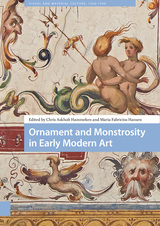 Ornament and Monstrosity in Early Modern Art
Chris Askholt Hammeken
Amsterdam University Press, 2019 Early modern art features a remarkable fascination with ornament, both as decorative device and compositional strategy, across artistic media and genres. Interestingly, the inventive, elegant manifestations of ornament in the art of the period often include layers of disquieting paradoxes, creating tensions - monstrosities even - that manifest themselves in a variety of ways. In some cases, dichotomies (between order and chaos, artificiality and nature, rational logic and imaginative creativity, etc.) may emerge. Elsewhere, a sense of agitation undermines structures of statuesque control or erupts into wild, unruly displays of constant genesis. The monstrosity of ornament is brought into play through strategies of hybridity and metamorphosis, or by the handling of scale, proportion, and space in ambiguous and discomforting ways that break with the laws of physical reality. An interest in strange exaggeration and curious artifice allows for such colossal ornamental attitude to thrive within early modern art.
Ornament as Crisis: Architecture, Design, and Modernity in Hermann Broch's "The Sleepwalkers"
Sarah McGaughey
Northwestern University Press, 2015 Ornament as Crisis explores the ways in which the novels of Hermann Broch’s Sleepwalkers (Schlafwandler) trilogy participate in and employ the history of architecture and architectural theory.
Beginning with the visual and architectural experiences of the figures in each novel, Sarah McGaughey analyzes the role of architecture in the trilogy as a whole, while discussing work by Broch’s contemporaries on architecture. She argues that The Sleepwalkers allows us to better understand how literature responds and contributes to social, theoretical, and spatial concepts of architecture. Ornament as Crisis guides readers through the spaces of Broch’s mdernist masterpiece and the architectural debates of his time.
Ornamentalism: The Art of Renaissance Accessories
Edited and with an Introduction by Bella Mirabella
University of Michigan Press, 2011 Ornamentalism is the first book to focus on Renaissance accessories, their histories and meanings. The collection's eminent contributors bring accessories to the center of a discussion about material culture, dress, and adornment, exploring their use, significance, and multiple lives. Defining an “accessory” in the broadest sense—including scents, veils, handkerchiefs, lingerie, codpieces, dildos, jewels, ruffs, wax seals, busks, shoes, scissors, and even boys—the book provides a rich cultural history that’s eclectic and bold, including discussions of bodily functions, personal hygiene, and sexuality.
Lively, well-written, and richly illustrated with color plates, Ornamentalism will appeal to scholars of the material past and social practice, and those interested in fashion studies, manners and morals, gender and sexuality, theater and performance.
Ornaments
David Daniel
University of Pittsburgh Press, 2017
A reverent jag of irreverence, tilting forward to arresting moments of beauty, astonishment, confusion, and grief, the poems in David Daniel’s Ornaments find their myths in history and pop culture; they take their truths, but just as much their doubts, from the fallibility of what we remember and the desperation with which we struggle to reassemble it. Surreal, lyrical, madcap, they bring a faith, above all, in poetry. Which means in people and their bewildered hearts.
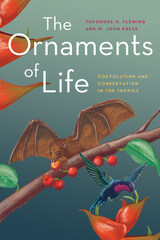 The Ornaments of Life: Coevolution and Conservation in the Tropics
Theodore H. Fleming and W. John Kress
University of Chicago Press, 2013 The average kilometer of tropical rainforest is teeming with life; it contains thousands of species of plants and animals. As The Ornaments of Life reveals, many of the most colorful and eye-catching rainforest inhabitants—toucans, monkeys, leaf-nosed bats, and hummingbirds to name a few—are an important component of the infrastructure that supports life in the forest. These fruit-and-nectar eating birds and mammals pollinate the flowers and disperse the seeds of hundreds of tropical plants, and unlike temperate communities, much of this greenery relies exclusively on animals for reproduction. Synthesizing recent research by ecologists and evolutionary biologists, Theodore H. Fleming and W. John Kress demonstrate the tremendous functional and evolutionary importance of these tropical pollinators and frugivores. They shed light on how these mutually symbiotic relationships evolved and lay out the current conservation status of these essential species. In order to illustrate the striking beauty of these “ornaments” of the rainforest, the authors have included a series of breathtaking color plates and full-color graphs and diagrams.
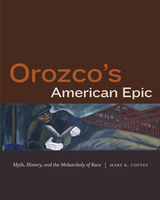 Orozco's American Epic: Myth, History, and the Melancholy of Race
Mary K. Coffey
Duke University Press, 2020 Between 1932 and 1934, José Clemente Orozco painted the twenty-four-panel mural cycle entitled The Epic of American Civilization in Dartmouth College's Baker-Berry Library. An artifact of Orozco's migration from Mexico to the United States, the Epic represents a turning point in his career, standing as the only fresco in which he explores both US-American and Mexican narratives of national history, progress, and identity. While his title invokes the heroic epic form, the mural indicts history as complicit in colonial violence. It questions the claims of Manifest Destiny in the United States and the Mexican desire to mend the wounds of conquest in pursuit of a postcolonial national project. In Orozco's American Epic Mary K. Coffey places Orozco in the context of his contemporaries, such as Diego Rivera and David Alfaro Siqueiros, and demonstrates the Epic's power as a melancholic critique of official indigenism, industrial progress, and Marxist messianism. In the process, Coffey finds within Orozco's work a call for justice that resonates with contemporary debates about race, immigration, borders, and nationality.
 Orphan Black: Performance, Gender, Biopolitics
Edited by Andrea Goulet and Robert A. Rushing
Intellect Books, 2018 This book presents a groundbreaking exploration of the hit television series Orphan Black and the questions it raises for performance and technology, gender and reproduction, and biopolitics and community.
Contributors come from a range of backgrounds and explore the digital innovations and technical interactions between human and machine that allow the show to challenge conventional notions of performance and identity, address family themes, and Orphan Black’s own textual genealogy within the contexts of science, reproductive technology, and the politics of gender, and extend their inquiry to the broader question of community in a "posthuman" world of biopolitical power. Mobilizing philosophy, history of science, and literary theory, scholars analyze the ways in which Orphan Black depicts resistance to the many forms of power that attempt to capture, monitor, and shape life today.
Orphan Girl: A Transaction, or an Account of the Entire Life of an Orphan Girl by way of Plaintful Threnodies in the Year 1685. The Aesop Episode
Anna Stanislawska
Iter Press, 2016 Writing years after terrible events which colored her life forever, Anna Stanislawska (1651-1701) meticulously reconstructed in an epic poem the episode of her forced marriage to the deviant son of the Castellan of Kraków. He was deemed to be so ugly that Stanislawska called her new husband Aesop, who was said to have been one of the ugliest men in Antiquity.
Barry Keane's idiomatic and inventive verse translation brings to life this half-forgotten poetic account of a remarkable tale of triumph in the face of overwhelming oppression and allows Anna Stanislawska to take her place among the women poets of early modern Europe.
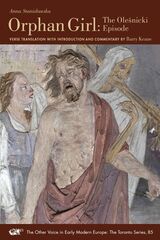 Orphan Girl: The Olesnicki Episode: One Body with Two Souls Entwined: An Epic Tale of Married Love in Seventeenth-Century Poland
Anna Stanislawska
Iter Press, 2021 A page-turner featuring one of literature’s earliest female protagonists.
Written in 1685, Transaction or the Description of the Entire Life of an Orphan by Way of Plaintful Threnodies, often referred to as Orphan Girl, is a valuable, long-lost, seventeenth-century poetic text that documents women’s writing in the early modern period. In this autobiographical account, Anna Stanislawska speaks confessionally and unsparingly about her life, from her infancy to her widowhood and withdrawal from the world. Stanislawska was an incomparable memoirist, revealing the depths of her private life in a manner not to be matched until modern times. One Body with Two Souls Entwined brings together this spirited poetic account with an in-depth introductory and literary commentary by Barry Keane. Together the book offers a remarkable piece of scholarly, translational, and dramaturgical work and puts it in context amid the backdrop of Polish history.
Orphan Trains: The Story of Charles Loring Brace and the Children He Saved and Failed
Stephen O'Connor
University of Chicago Press, 2004 In mid-nineteenth-century New York, vagrant youth, both orphans and runaways, filled the streets. For years the city had been sweeping these children into prisons or almshouses, but in 1853 the young minister Charles Loring Brace proposed a radical solution to the problem by creating the Children's Aid Society, an organization that fought to provide homeless children with shelter, education, and, for many, a new family in the country. Combining a biography of Brace with firsthand accounts of orphans, Stephen O'Connor here tells of the orphan trains that, between 1854 and 1929, spirited away some 250,000 destitute children to rural homes in every one of the forty-eight contiguous states.
A powerful blend of history, biography, and adventure, Orphans Trains remains the definitive work on this little-known episode in American history.
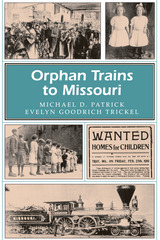 Orphan Trains to Missouri
Michael D. Patrick & Evelyn Goodrich Trickel
University of Missouri Press, 1997 As an "orphan train" crossed the country, it left part of its cargo at each stop, a few children in one small town and a few in another. Even though farmers needed many hands for labor, most of the small farm communities could not or would not take all of the children on the train. As the train moved to its next stop, those children not taken feared no one would ever want them. Early immigration laws encouraged the poor of Europe to find new hope with new lives in the United States. But sometimes the immigrants exchanged a bad situation in their native country for an even worse one on the streets of New York and other industrial cities. As a result, the streets were filled with crowds of abandoned children that the police called "street arabs." Many New York citizens blamed the street arabs for crime and violence in the city and wanted them placed in orphan homes or prisons. In 1853 a man by the name of Charles Loring Brace, along with other well-to-do men in New York City, founded the Children's Aid Society. The society planned to give food, lodging, and clothing to homeless children and provide educational and trade opportunities for them. But the number of children needing help was so large that the Children's Aid Society was unable to care for them, and Brace developed a plan to send many of the children to the rural Midwest by train. He was convinced that the children of the streets would find many benefits in rural America. In 1854 he persuaded the board of the society to send the first trainload of orphans west. With this, the orphan trains were born. Cheap fares, the central location of the state, and numerous small farming towns along the railroad tracks made Missouri the perfect hub for the orphan trains, even though many areas of the state were still largely unsettled. Researchers have estimated that from 150,000 to 400,000 children were sent out on orphan trains, with perhaps as many as 100,000 being placed in Missouri. Orphan Trains to Missouri documents the history of the children on those Orphan Trains--their struggles, their successes, and their failures. Touching stories of volunteers who oversaw the placement of the orphans as well as stories of the orphans themselves make this a rich record of American and midwestern history.
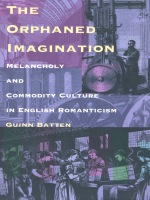 The Orphaned Imagination: Melancholy and Commodity Culture in English Romanticism
Guinn Batten
Duke University Press, 1998 Studies of the English Romantic poets generally portray them either as transcending the workings of capitalism or as working in complicity with an entrepreneurial economy. In The Orphaned Imagination, Guinn Batten challenges standard accounts of Romantic poetry and argues that Wordsworth, Byron, Blake, Shelley, Keats, and Coleridge—each of whom suffered the loss of a father or father-figure at an early age—possessed an orphan’s special insight into the dynamics and aesthetics of commodity culture and its symptomatic melancholia. Building on the theoretical insights of Slavoj Zizek, Judith Butler, Julia Kristeva, and Eve Kosofsky Sedgwick, Batten interweaves the discourses of psychoanalysis, economics, biography, sexuality, melancholy, value, and exchange to question accepted ideas of how Romantic poetry works. She asserts that poetic labor is in fact paradigmatic of the kinds of production—and the kinds of desire—that capitalist culture renders invisible. If symbolic exchange, in cash or in words, requires the surrender of a beloved object, if healthy mourning requires an orphan to “work through” emotional loss through the consolation of art or a love for the living, then the rebellious Romantic poet, Batten contends, possessed unique insight into the alternative authority of a poetic language that renounced a culture of denial. Batten urges that scholars move beyond critical approaches condemning allegedly regressive forms of pleasure, recognizing that they, too, are haunted by melancholic attachments to dead poets as they conduct their work. The Orphaned Imagination will interest anyone concerned with the claims of the English Romantic poets to a distinctive, valuable form of knowledge and those who may wonder about the power of contemporary theory to illuminate a traditional field.
 Orphans
Ben Tanzer
Northern Illinois University Press, 2013 With Orphans, Ben Tanzer continues his ongoing literary survey of the 21st Century male psyche, yet does so with a newfound twist, contemporary themes set in a world that is anything but. In this dystopian tale of a future Chicago, workers are sent off to sell property on Mars to those who can afford to leave, leaving what’s left to those who have little choice but to make do with what’s left behind: burnt out neighborhoods, black helicopters policing the streets, flash mobs, the unemployed in their scruffy suits, robots taking the few jobs that remain, and clones who replace those workers who do find work so that a modicum of family stability can be maintained. It is a story about the impact of work on family. How work warps our best intentions. And how everything we think we know about ourselves looks different during a recession.
This idea is writ large in the world of Orphans, where recession is all we know, work is only available to the lucky few, and this lucky few not only need to fear being replaced on the job, but in their homes and beds.
It is also a story about drugs, surfing, punk music, lost youth, parenting, sex, pop culture as vernacular, and a conscious intersection of Death of a Salesman or Glengarry Glen Ross with the Martian Chronicles.
Looking to the genre of science fiction has allowed Tanzer to produce something new and fresh, expanding both his literary horizons, and the potential market for his work. Tanzer also looks to the story of Bartleby the Scrivener with Orphans, and the question of what are we allowed as workers, and expected to be, or do, when work is fraught with desperation. Ultimately, Orphans is intended to be a contemporary story about manhood and what it means in today’s world, told from the perspective of work and family, and how any of us manage the parameters that family and work produce; but it’s a story told in a futuristic world, where our greatest fears are in fact already realized, because there isn’t enough of anything, and we are all too easily replaced.
 Orphans of the Republic: The Nation’s Legislators in Vichy France
Olivier Wieviorka
Harvard University Press, 2009 On July 10, 1940, by a 570 to 80 margin, the representatives in the French parliament voted full powers to Philippe Pétain, ending the Third Republic and paving the way for the collaborationist Vichy regime. Olivier Wieviorka offers a nuanced portrait of the individuals who determined the fate of France at this critical moment.
Pétain claimed to be saving France from ruin. The day of the vote has been described as a journée des dupes, the legislators so ignorant or fearful that they voted without a thought to the consequences. But Wieviorka shows that most of the deputies made a considered decision to vote for Pétain. He analyzes the factors, such as political culture and regional origins, that motivated the voting on both sides, and traces the men’s fates through the war.
Recreating the tense atmosphere of summer 1940, Wieviorka shows how pressures brought on by defeat could affect even the most hardened republicans. He illuminates the complex moral issues inherent in accommodation and collaboration in a time of crisis.
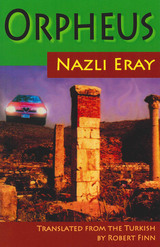 Orpheus
By Nazli Eray
University of Texas Press, 2006 Robert Finn's translation of Turkish author Nazli Eray's Orphée makes available to the English-language reader a rewriting of the myth from the perspective of Eurydice, the wife of Orpheus. Eray's surrealistic version takes place in a hot resort town in contemporary Turkey. The setting of an archaeological dig gives a connection to the past and literally to the underworld. Found in the dig is a statue of the Roman emperor Hadrian, who proceeds to offer an unusual perspective on modern life and values through mysterious letters carried by a messenger pigeon. Eray also comments on modernity, as the city of Ankara emerges as a character in the novel's fantasy. Set in junta-ruled Turkey of the 1980s, the novel takes its place as a crucial slice of Turkish literary history. Resonating with haunting references to the film Last Tango in Paris, the novel evolves as a mystery story with a humorous bent. Thus Eray illuminates her insatiable curiosity about other cultures, particularly those of the West. Finally, the style of the translation is simple and clear, with crisp dialogue. Sibel Erol, professor of Turkish literature at New York University, has written an introduction that places this fantastic plot in a literary context, as well as in understandable terms that relate to the reality of today's Turkey.
Orpheus and Company: Contemporary Poems on Greek Mythology
Edited by Deborah De Nicola
Brandeis University Press, 1999 This collection offers myriad fresh, and often dazzling, interpretations of Greek myths at a time of renewed excitement about the role of myths and other archetypes in our culture, and about the spiritual themes which many of the poems suggest. The range is broad, from celebrated authors such as Rita Dove, Louise Glück, Mark Strand, and Stephen Dobyns, to such respected emerging poets as Diann Blakely, Reginald Shepard, Mary Jo Bang, and Carl Phillips.
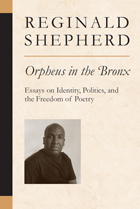 Orpheus in the Bronx: Essays on Identity, Politics, and the Freedom of Poetry
Reginald Shepherd
University of Michigan Press, 2010 "Orpheus in the Bronx not only extols the freedom language affords us; it embodies that freedom, enacting poetry's greatest gift---the power to recognize ourselves as something other than what we are. These bracing arguments were written by a poet who sings."
---James Longenbach A highly acute writer, scholar, editor, and critic, Reginald Shepherd brings to his work the sensibilities of a classicist and a contemporary theorist, an inheritor of the American high modernist canon, and a poet drawing and playing on popular culture, while simultaneously venturing into formal experimentation. In the essays collected here, Shepherd offers probing meditations unified by a "resolute defense of poetry's autonomy, and a celebration of the liberatory and utopian possibilities such autonomy offers." Among the pieces included are an eloquent autobiographical essay setting out in the frankest terms the vicissitudes of a Bronx ghetto childhood; the escape offered by books and "gifted" status preserved by maternal determination; early loss and the equivalent of exile; and the formation of the writer's vocation. With the same frankness that he brings to autobiography, Shepherd also sets out his reasons for rejecting "identity politics" in poetry as an unnecessary trammeling of literary imagination. His study of the "urban pastoral," from Baudelaire through Eliot, Crane, and Gwendolyn Brooks, to Shepherd's own work, provides a fresh view of the place of urban landscape in American poetry. Throughout his essays---as in his poetry---Shepherd juxtaposes unabashed lyricism, historical awareness, and in-your-face contemporaneity, bristling with intelligence. A volume in the Poets on Poetry series, which collects critical works by contemporary poets, gathering together the articles, interviews, and book reviews by which they have articulated the poetics of a new generation.
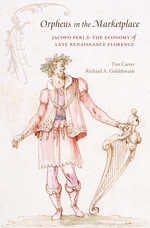 Orpheus in the Marketplace: Jacopo Peri and the Economy of Late Renaissance Florence
Tim Carter and Richard A. Goldthwaite
Harvard University Press, 2013 The Florentine musician Jacopo Peri (1561-1633) is known as the composer of the first operas--they include the earliest to survive complete, Euridice (1600), in which Peri sang the role of Orpheus. A large collection of recently discovered account books belonging to him and his family allows for a greater exploration of Peri's professional and personal life. Richard Goldthwaite, an economic historian, and Tim Carter, a musicologist, have done much more, however, than write a biography: their investigation exposes the remarkable value of such financial documents as a primary source for an entire period.
This record of Peri's wide-ranging investments and activities in the marketplace enables the first detailed account of the Florentine economy in the late sixteenth and early seventeenth centuries, and also opens a completely new perspective on one of Europe's principal centers of capitalism. His economic circumstances reflect continuities and transformations in Florentine society, and the strategies for negotiating them, under the Medici grand dukes. At the same time they allow a reevaluation of Peri the singer and composer that elucidates the cultural life of a major artistic center even in changing times, providing a quite different view of what it meant to be a musician in late Renaissance Italy.
 Orpheus in the Underworld: Essays on Music
Theodor W. Adorno
Seagull Books, 2024 Delves into Theodor W. Adorno’s lesser-known musical career and successful music criticism.
Theodor W. Adorno is recognized as one of the twentieth century’s most prominent social theorists. Though best known for his association with the Frankfurt School of critical theory, Adorno began his career as a composer and successful music critic.
Comprehensive and illuminating, Orpheus in the Underworld centers on Adorno’s concrete and immediate engagement with musical compositions and their interpretation in the concert hall and elsewhere. Here, Adorno registers his initial encounters with the compositions of the Second Viennese School, when he had yet to integrate them into a broad aesthetics of music. Complementarily essays on Bela Bartók, Jean Sibelius, and Kurt Weill afford insight into his understanding of composers who did not fit neatly into the dialectical schema propounded in the Philosophy of New Music. Additionally, essays on recording and broadcasting show Adorno engaging with these media in a spirit that is no less productive than polemical and focused as sharply on their potentialities as on their shortcomings.
Orpheus in the Underworld offers a captivating exploration of Adorno’s musical compositions, shedding new light on his understanding of influential composers and his critical perspectives on recording and broadcasting.
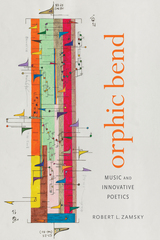 Orphic Bend: Music and Innovative Poetics
Robert L. Zamsky
University of Alabama Press, 2021 Restages fundamental debates about the relationship between poetry and music
WINNER OF THE ELIZABETH AGEE PRIZE IN AMERICAN LITERATURE
Orphic Bend: Music and Innovative Poetics explores the impact of music on recent pioneering literary practices in the United States. Adopting the myth of Orpheus as its framework, Robert L. Zamsky argues that works by Charles Bernstein, Robert Creeley, John Taggart, Tracie Morris, and Nathaniel Mackey restage ancient debates over the relationship between poetry and music even as they develop work that often sharply diverges from traditional literary forms. Opening each chapter with a consideration of the orphic roots of lyric, Zamsky integrates contemporary debates over the prospects and limitations of humanism, the meaningfulness of gesture and performance, and the nature of knowledge with the poetics of the writers under consideration, grounding his analysis in close readings of their work.
The myth of Orpheus is used as a lens throughout the book, its different facets illuminating sometimes dramatically different aspects of the shared framework of poetry and music. In the case of Bernstein, for instance, Zamsky highlights Ezra Pound’s meditations on the relationship between poetry and music (the ground upon which Pound seeks to recapture the lost possibilities of the Renaissance) and Bernstein’s incisive critique of Pound. For her part, Morris emphasizes the performative power of spoken language, foregrounding the fact that all spoken language bears cultural, communal, and personal marks of the speaker, improving an ensemble self even within the most elemental features of language. Meanwhile, in Mackey’s work, the orphic voice of the poet powerfully reaches toward an order of knowledge in which poetry and music are nearly indecipherable from one another. In this sense, music and the musicality of poetic language are the gateways for Mackey’s Gnosticism, the mechanisms of initiation into a realm, not of secrets to be learned, but of visionary knowing that continuously unfolds.
The text explores a range of musical influences on the writers under consideration, from opera to different iterations of jazz, and underscores the variety of ways in which music informs their work. Many of these writers effectively present a theory of music in their invocations of it as an inspiration for, or as an analog to, poetic practice. Zamsky’s focus on poetry and music echoes important interdisciplinary studies on literary modernism, a period for which the importance of music to literary practice is well established and extends that discussion to the contemporary context. In doing so, Orphic Bend provides an important opportunity to consider both the specific legacy of modernism, and to situate contemporary writers in broader historical contexts.
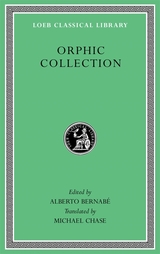 Orphic Collection
Alberto Bernabé
Harvard University Press Cult classics.
Orpheus is familiar from Greek mythology as a peerless bard, the Thracian son of a Muse with superhuman musical abilities that enabled him to win the release of his young wife Eurydice from Hades, only to lose her on the way back. But he was also considered an authentic poet preceding Hesiod and Homer and on a par with Musaeus, and was credited with poems, oracles, and the foundation of rituals in a tradition that remained vital and creative from Archaic Greece through to the Roman Empire and beyond. Essentially Dionysiac, but without the violence and blood sacrifice, and with a focus on theogony, cosmogony, and the origin and destiny of souls, Orphism was at once a distinctive and an open tradition, with significant change and development over time but with features that made the works and rituals cumulatively attributed to Orpheus identifiable to followers. This tradition endowed them with a lasting coherence despite the absence of dogma or control by priests or cult. Although Orphism departed in profound and fascinating ways from conventional accounts, it proved highly adaptable to various religious and philosophical systems, especially Pythagorean and Neoplatonist but also Judaic and Christian.
This edition collects works representing the most ancient Orphic literature, excluding later mythological, scientific, and pseudo-scientific poems opportunistically attributed to him.
Orphic Songs
Dino Campana
Oberlin College Press, 1984 This vivid presentation of Campana demonstrates why Italian readers have cherished his poems since the first appearance of Canti Orfici in 1914. Charles Wright’s translation, Jonathan Galassi’s introduction, and, as afterword, Montale’s thoughtful essay on Campana, identify the heart of this poet’s achievement.
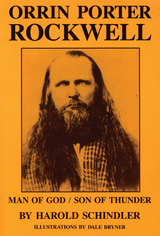 Orrin Porter Rockwell: Man of God Son of Thunder
Harold Schindler
University of Utah Press, 1983 The legend of the Destroying Angel of Mormondom was well established by the time of his death, of natural causes, in 1878. Travelers sang ballads about him as they gathered around their campfires at night. Mothers used his name to frighten children into obedience. He was accused of literally hundreds of murders, all in the name of the Mormon Church.
Yet behind all the myth was a man, a human being. Orrin Porter Rockwell believed in his prophet, Joseph Smith. He spent most of a year chained in an Independence dungeon for his belief, then walked across Missouri to Nauvoo, stumbling into Joseph’s house on Christmas Day. Joseph said to him then, “Cut not thy hair and no bullet or blade can harm thee,” and the legend was born.
Rockwell continued to serve the leaders of his church—as hunter, guide, messenger, scout, guerilla, emissary to the Indians, and lawman. He traveled thousands of miles, raised three families, accumulated land and wealth—and favorably impressed almost everyone who met him. But although he walked with presidents and generals, scholars and scoundrels, in a life lived at the center of many of the great events of the American frontier, he has remained an enigma, a source of continuing controversy.
Harold Schindler’s remarkable investigative skills led him into literally thousands of unlikely places in his search for the truth about Rockwell. Dale L. Morgan, one of the west’s foremost historians, called the first edition “…an impressive job of research, one of the most impressive in recent memory, in the Mormon field. Mr. Schindler has shown great energy and sagacity in dealing with a difficult, highly controversial subject; and he has also made maximum use of the latest scholarship and newly available archival resources.”
But the author was not satisfied until he had probed even more deeply, and this revised and enlarged second edition contains greatly expanded documentation as well as textual additions that flesh out the characters and events of this classic drama of early America.
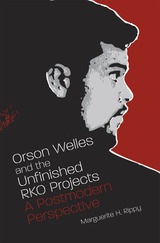 Orson Welles and the Unfinished RKO Projects: A Postmodern Perspective
Marguerite H. Rippy
Southern Illinois University Press, 2009 Orson Welles and the Unfinished RKO Projects: A Postmodern Perspective traces the impact of legendary director Orson Welles on contemporary mass media entertainment and suggests that, ironically, we can see Welles’s performance genealogy most clearly in his unfinished RKO projects. Author Marguerite H. Rippy provides the first in-depth examination of early film and radio projects shelved by RKO or by Welles himself. While previous studies of Welles largely fall into the categories of biography or modernist film studies, this book extends the understanding of Welles via postmodern narrative theory and performance analysis, weaving his work into the cultural and commercial background of its production. By identifying the RKO years as a critical moment in performance history, Rippy synthesizes scholarship that until now has been scattered among film studies, narrative theory, feminist critique, American studies, and biography. Building a bridge between auteur and postmodern theories, Orson Welles and the Unfinished RKO Projects offers a fresh look at Welles in his full complexity. Rippy trains a postmodern lens on Welles’s early projects and reveals four emerging narrative modes that came to define his work: deconstructions of the first-person singular; adaptations of classic texts for mass media; explorations of the self via primitivism; and examinations of the line between reality and fiction. These four narrative styles would greatly influence the development of modern mass media entertainment. Rippy finds Welles’s legacy alive and well in today’s mockumentaries and reality television. It was in early, unfinished projects where Welles first toyed with fact and fiction, and the pleasure of this interplay still resonates with contemporary culture. As Rippy suggests, the logical conclusion of Welles’s career-long exploration of “truthiness” lies in the laughs of fake news shows. Offering an exciting glimpse of a master early in his career, Orson Welles and the Unfinished RKO Projects documents Welles’s development as a storyteller who would shape culture for decades to come.
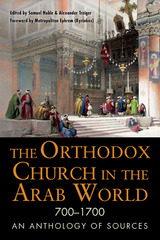 The Orthodox Church in the Arab World, 700 - 1700: An Anthology of Sources
Samuel Noble
Northern Illinois University Press, 2014 Arabic was among the first languages in which the Gospel was preached. The Book of Acts mentions Arabs as being present at the first Pentecost in Jerusalem, where they heard the Christian message in their native tongue. Christian literature in Arabic is at least 1,300 years old, the oldest surviving texts dating from the 8th century. Pre-modern Arab Christian literature embraces such diverse genres as Arabic translations of the Bible and the Church Fathers, biblical commentaries, lives of the saints, theological and polemical treatises, devotional poetry, philosophy, medicine, and history. Yet in the Western historiography of Christianity, the Arab Christian Middle East is treated only peripherally, if at all.
The first of its kind, this anthology makes accessible in English representative selections from major Arab Christian works written between the 8th and 18th centuries. The translations are idiomatic while preserving the character of the original. The popular assumption is that in the wake of the Islamic conquests, Christianity abandoned the Middle East to flourish elsewhere, leaving its original heartland devoid of an indigenous Christian presence. Until now, several of these important texts have remained unpublished or unavailable in English. Translated by leading scholars, these texts represent the major genres of Orthodox literature in Arabic. Noble and Treiger provide an introduction that helps form a comprehensive history of Christians within the Muslim world. The collection marks an important contribution to the history of medieval Christianity and the history of the medieval Near East.
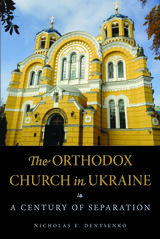 The Orthodox Church in Ukraine: A Century of Separation
Nicholas E. Denysenko
Northern Illinois University Press, 2018 The bitter separation of Ukraine’s Orthodox churches is a microcosm of its societal strife. From 1917 onward, church leaders failed to agree on the church’s mission in the twentieth century. The core issues of dispute were establishing independence from the Russian church and adopting Ukrainian as the language of worship. Decades of polemical exchanges and public statements by leaders of the separated churches contributed to the formation of their distinct identities and sharpened the friction amongst their respective supporters.
In The Orthodox Church in Ukraine, Nicholas Denysenko provides a balanced and comprehensive analysis of this history from the early twentieth century to the present. Based on extensive archival research, Denysenko’s study examines the dynamics of church and state that complicate attempts to restore an authentic Ukrainian religious identity in the contemporary Orthodox churches. An enhanced understanding of these separate identities and how they were forged could prove to be an important tool for resolving contemporary religious differences and revising ecclesial policies. This important study will be of interest to historians of the church, specialists of former Soviet countries, and general readers interested in the history of the Orthodox Church.
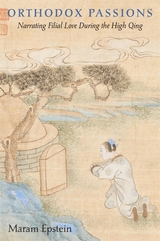 Orthodox Passions: Narrating Filial Love during the High Qing
Maram Epstein
Harvard University Press, 2019 In this groundbreaking interdisciplinary study, Maram Epstein identifies filial piety as the dominant expression of love in Qing dynasty texts. At a time when Manchu regulations made chastity the primary metaphor for obedience and social duty, filial discourse increasingly embraced the dramatic and passionate excesses associated with late-Ming chastity narratives.
Qing texts, especially those from the Jiangnan region, celebrate modes of filial piety that conflicted with the interests of the patriarchal family and the state. Analyzing filial narratives from a wide range of primary texts, including local gazetteers, autobiographical and biographical nianpu records, and fiction, Epstein shows the diversity of acts constituting exemplary filial piety. This context, Orthodox Passions argues, enables a radical rereading of the great novel of manners The Story of the Stone (ca. 1760), whose absence of filial affections and themes make it an outlier in the eighteenth-century sentimental landscape. By decentering romantic feeling as the dominant expression of love during the High Qing, Orthodox Passions calls for a new understanding of the affective landscape of late imperial China.
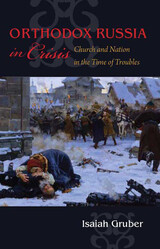 Orthodox Russia in Crisis: Church and Nation in the Time of Troubles
Isaiah Gruber
Northern Illinois University Press, 2012
A pivotal period in Russian history, the Time of Troubles in the early seventeenth century has taken on new resonance in the country’s post-Soviet search for new national narratives. The historical role of the Orthodox Church has emerged as a key theme in contemporary remembrances of this time—but what precisely was that role?
The first comprehensive study of the Church during the Troubles, Orthodox Russia in Crisis reconstructs this tumultuous time, offering new interpretations of familiar episodes while delving deep into the archives to uncover a much fuller picture of the era. Analyzing these sources, Isaiah Gruber argues that the business activity of monasteries played a significant role in the origins and course of the Troubles and that frequent changes in power forced Church ideologues to innovate politically, for example inventing new justifications for power to be granted to the people and to royal women. These new ideas, Gruber contends, ultimately helped bring about a new age in Russian spiritual life and a crystallization of the national mentality.
 Orthodoxies in Massachusetts: Rereading American Puritanism
Janice Knight
Harvard University Press, 1994 Reexamining religious culture in seventeenth-century New England, Janice Knight discovers a contest of rival factions within the Puritan orthodoxy. Arguing that two distinctive strains of Puritan piety emerged in England prior to the migration to America, Knight describes a split between rationalism and mysticism, between theologies based on God’s command and on God’s love. A strong countervoice, expressed by such American divines as John Cotton, John Davenport, and John Norton and the Englishmen Richard Sibbes and John Preston, articulated a theology rooted in Divine Benevolence rather than Almighty Power, substituting free testament for conditional covenant to describe God’s relationship to human beings.
Knight argues that the terms and content of orthodoxy itself were hotly contested in New England and that the dominance of rationalist preachers like Thomas Hooker and Peter Bulkeley has been overestimated by scholars. Establishing the English origins of the differences, Knight rereads the controversies of New England’s first decades as proof of a continuing conflict between the two religious ideologies. The Antinomian Controversy provides the focus for a new understanding of the volatile processes whereby orthodoxies are produced and contested. This book gives voice to this alternative piety within what is usually read as the univocal orthodoxy of New England, and shows the political, social, and literary implications of those differences.
 Orthodoxy and Nationality: Andreiu Saguna and the Rumanians of Transylvaina, 1846-1873
Keith Hitchins
Harvard University Press, 1977 By mid-nineteenth century the movement for cultural and political self-determination of the Rumanians of Transylvania had attained a high degree of maturity and, at the same time, was entering a period of internal crisis. The Orthodox Church still stood at the center of national life, as it had for centuries, but now the paramount role of the clergy was effectively challenged by a dynamic class of lay intellectuals who were eager to set their people on a new, essentially secular, course to bring them abreast of the advanced nations of Europe.
The dominant figure of the period was Andreiu Şaguna, bishop and later metropolitan of the Rumanian Orthodox Church. Although he equaled the intellectuals in devotion to the national cause, he carried forward the venerable practices of ecclesiastical leadership and upheld the primacy of religion in the life of the nation. The tension he and the intellectuals created motivated Rumanian national development for nearly a quarter century.
The Rumanian experience has significance beyond the boundaries of Transylvania. Hitchins elucidates its connection to the complex process of national development that all the peoples of the Habsburg monarchy were undergoing, and suggests its relevance to contemporary Austrian policy toward national aspirations in general.
 Orthodoxy and the Roman Papacy: Ut Unum Sint and the Prospects of East-West Unity
Adam A. J. DeVille
University of Notre Dame Press, 2011
Among the issues that continue to divide the Catholic Church from the Orthodox Church--the two largest Christian bodies in the world, together comprising well over a billion faithful--the question of the papacy is widely acknowledged to be the most significant stumbling block to their unification. For nearly forty years, commentators, theologians, and hierarchs, from popes and patriarchs to ordinary believers of both churches, have acknowledged the problems posed by the papacy.
In Orthodoxy and the Roman Papacy: Ut Unum Sint and the Prospects of East-West Unity, Adam A. J. DeVille offers the first comprehensive examination of the papacy from an Orthodox perspective that also seeks to find a way beyond this impasse, toward full Orthodox-Catholic unity. He first surveys the major postwar Orthodox and Catholic theological perspectives on the Roman papacy and on patriarchates, enumerating Orthodox problems with the papacy and reviewing how Orthodox patriarchates function and are structured. In response to Pope John Paul II's 1995 request for a dialogue on Christian unity, set forth in the encyclical letter Ut Unum Sint, DeVille proposes a new model for the exercise of papal primacy. DeVille suggests the establishment of a permanent ecumenical synod consisting of all the patriarchal heads of Churches under a papal presidency, and discusses how the pope qua pope would function in a reunited Church of both East and West, in full communion. His analysis, involving the most detailed plan for Orthodox-Catholic unity yet offered by an Orthodox theologian, could not be more timely.
"In Orthodoxy and the Roman Papacy: Ut Unum Sint and the Prospects of East-West Unity, not only does Adam A. J. DeVille give a historical and theological background to the thorny problem of the papacy in ecumenical dialogue; he also outlines what a reintegrated Church would look like by suggesting a way the papacy could function. Taking what both Orthodox and Catholic ecumenists have said, he paints a practical portrait of a unified Church. This is a novel and important contribution. --David Fagerberg, University of Notre Dame
"John Paul II's remarkable encyclical Ut Unum Sint gives occasion for a comprehensive review and analysis of the steady, though often sputtering movement toward Orthodox and Roman Catholic rapprochement in our day. DeVille identifies the major voices, the churches involved, and assesses in particular the place and role of the Papacy in this process. Orthodoxy and the Roman Papacydoes a great service in promoting the ecumenical conversation, and will be an edifying resource to all that are interested in it." --Vigen Guroian, University of Virginia
"Adam A. J. DeVille looks not only at the history of ecumenism from the Catholic side since Vatican II but also at more than a dozen of the leading Orthodox theologians internationally and their perspectives on the role and status of the bishop of Rome. Not since The Primacy of Peter: Essays in Ecclesiology and the Early Church, a collection of post Vatican II Orthodox views published over twenty years ago, has there been such an extensive and focused presentation of Orthodox points of view." --Michael Plekon, Baruch College
 Orthodoxy in Massachusetts, 1630–1650: A Genetic Study
Perry Miller
Harvard University Press As an introduction to the intellectual history of America and a contribution to the study of Puritanism in the larger sense, this book will interest all students of American philosophy, theology, literature, and history. It is the first systematic description of the New England mind from its inception to its achievement of unity and formulation in 1648. Its main idea is that the thought of the age furnishes the keystone of the whole colonial structure, that other elements in the life of the community, however important, were in the minds of the participants subsidiary to their creed and their religious program. Consequently it describes this creed and program in terms as much contemporary as possible and presents the issues as they were apprehended at the moment. At the same time it interprets these issues in larger terms, so that the full philosophical implications of colonial thought may be perceived by the modern reader.
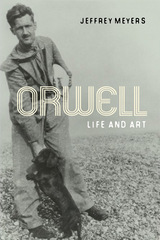 Orwell: Life and Art
Jeffrey Meyers
University of Illinois Press, 2010 This remarkable volume collects, for the first time, essays representing more than four decades of scholarship by one of the world's leading authorities on George Orwell. In clear, energetic prose that exemplifies his indefatigable attention to Orwell's life work, Jeffrey Meyers analyzes the works and reception of one of the most widely read and admired twentieth-century authors. Orwell: Life and Art covers the novelist's painful childhood and presents accounts of his autobiographical writings from the beginning of his career through the Spanish Civil War. Meyers continues with analyses of Orwell's major works, including Animal Farm and Nineteen Eighty-Four, as well as his style, distinctive satiric humor, and approach to the art of writing. Meyers ends with a scrupulous examination of six biographies of Orwell, including his own, that embodies a consummate grasp and mastery of both the art of biography and Orwell's life and legacy. Writing with an authority born of decades of focused scholarship, visits to Orwell's homes and workplaces, and interviews with his survivors, Meyers sculpts a dynamic view of Orwell's enduring influence on literature, art, culture, and politics.
The Orwell Mystique: A Study in Male Ideology
Daphne Patai
University of Massachusetts Press, 1984 One hundred years after the publication of Looking Backward, Bellamy remains a controversial figure in American literary and social history. The collection of essays in this volume, commemorating the novel's appearance in 1888, attests to his continued importance.
 Os Praesens Ciceronis Epistularis: The Immedaite Mouth of Cicero in His Letters
Reginald Foster
Catholic University of America Press The Immediate Mouth of Cicero in His Letters, consists of two books. An audiobook presents the integral Latin and English texts of 51 letters Cicero wrote to family and close associates all recited by Reginald Foster. A printed book presents the teaching method of Reginald exemplified by 160 imagined dialogues between a teacher and students working with original thoughts of Cicero to learn the Latin language from the first encounter.
This companion volume to The Bones' Meats Abundant analyses how Cicero expressed himself in the Latin of these same 51 letters, with cross references to fuller explanations in The Mere Bones of Latin.
Audio book
LISTEN to Cicero writing to family and close associates recited by Reginald Foster who embodies that living voice of the master Latinist. READ along while listening and RECITE together with the audio. CONSULT the English text of our translations.
Printed book
LEARN from the first encounter with the Latin language by reading from Cicero's letters and COMPLETE your understanding through regular readings.
Teach the Latin language using excerpts from Cicero's letters from the first day. Understand how Reginald taught the Latin language using solid, unmodified, original Latin texts. Learn to teach from Reginald.
The Osage: An Ethnohistorical Study of Hegemony on the Prairie-Plains
Willard H. Rollings
University of Missouri Press, 1995 The Osage Indians were a powerful group of Native Americans who lived along the prairies and plains of present-day Kansas, Missouri, Oklahoma, and Arkansas. The Osage: An Ethnohistorical Study of Hegemony on the Prairie-Plains, now available in paper, shows how the Osage formed and maintained political, economic, and social control over a large portion of the central United States for more than 150 years.
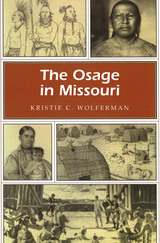 The Osage in Missouri
Kristie C. Wolferman
University of Missouri Press, 1997 On November 10, 1808, the American militia and the chiefs from the Little Osage and Big Osage nations celebrated. Fort Osage, built on a Missouri River bluff 250 miles west of St. Louis, was officially opened on that date, and the Osage Indians signed a treaty with the Americans written by Governor Meriwether Lewis. Fort Osage, intended as a citadel for the opening of the great American West, was also to function as a trading post for the Osage Nation. It was President Jefferson's hope that Fort Osage and other fort-trading posts would not only keep peace on the frontier but would also begin a new era in relations between Native Americans and the United States. For a short time, the fort did provide the Osage with a place to trade their furs. It also offered them limited protection from the many other tribes who were their enemies. However, the Osage chiefs discovered very quickly that the fort was small consolation for the lands they had given up by signing the treaty. In this well-written and very readable work, Kristie C. Wolferman traces the history of the Osage Nation from its origins to its forced departure from Missouri. She demonstrates the ways in which the Osage culture changed with each new encounter of the Osage with Europeans. The Osage had already experienced many contacts with the white man before Fort Osage came to be. They had encountered French trader-trappers, explorers, missionaries, Spanish administrators, and early settlers. Their lives had been changed by the influx of white disease, by the use of European trade goods and weapons, and by the political control of Spanish, French, and American governments. As a result, the Fort Osage experiment came too late to establish lasting good relations between the white men and the Indians. The Osage in Missouri suggests that the white men could never understand the Osage way of life, nor the Osage the white men's way. But Osage culture, greatly altered by Europeans and Americans, would never be the same again. The Osage would be forced to sacrifice most of their traditions and beliefs, as well as their homeland, on the way to becoming "civilized."
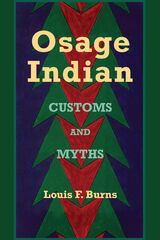 Osage Indian Customs and Myths
Louis F. Burns
University of Alabama Press, 2005 Siouan peoples who migrated from the Atlantic coastal region and settled in the central portion of the North American continent long before the arrival of Europeans are now known as Osage. Because the Osage did not possess a written language, their myths and cultural traditions were handed down orally through many generations. With time, only those elements deemed vital were preserved in the stories, and many of these became highly stylized. The resulting verbal recitations of the proper life of an Osage—from genesis myths to body decoration, from star songs to child-naming rituals, from war party strategies to medicinal herbs—constitute this comprehensive volume.
Osage myths differ greatly from the myths of Western Civilization, most obviously in the absence of individual names. Instead, “younger brother,” “the messenger,” “Little Old Men,” or a clan name may serve as the allegorical embodiment of the central player. Individual heroic feats are also missing because group life took precedence over individual experience in Osage culture.
Supplementing the work of noted ethnographer Francis La Flesche who devoted most of his professional life to recording detailed descriptions of Osage rituals, Louis Burns’s unique position as a modern Osage—aware of the white culture’s expectations but steeped in the traditions himself is able to write from an insider’s perspective.
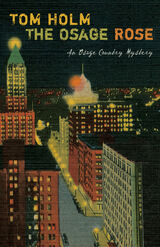 The Osage Rose
Tom Holm
University of Arizona Press, 2008 Corrupt lawmen, insatiable businessmen, and an oil boom on Indian land. This is the milieu in which Tom Holm sets his gritty and provocative detective novel.
Life is looking easy for J. D. Daugherty, a crusty ex-cop who has set up his own PI firm in Tulsa, Oklahoma, just after World War I. J. D. expects to make a straightforward living off the intrigues of the city’s wealthy socialites, but then Rose Chichester, a privileged young white woman, runs off with Tommy Ruffle, a young Indian who is heir to Osage oil. Hired by Rose’s father to track down the young pair, J. D. and his associate, a Cherokee named Hoolie Smith, find themselves caught in the cross fire of a deadly scheme. When Tommy turns up murdered and with Rose still missing, J. D. and Hoolie must navigate a twisting maze of deception, race riots, and gun battles in their unrelenting search for the truth—a search that ultimately leads to an intimate secret no one suspected.
Tom Holm writes a true private-eye mystery, yet he entwines the story’s layers of conspiracy and deceit with the realities of prejudice and hatred that existed during the early years of Oklahoma statehood. Rooted firmly in its time, Holm’s well-researched novel tells a complex and compelling story of individuals struggling to find justice at any cost in a world still caught between modernity and its Wild West legacy.
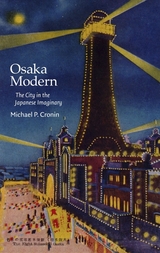 Osaka Modern: The City in the Japanese Imaginary
Michael P. Cronin
Harvard University Press Images of the city in literature and film help constitute the experience of modern life. Studies of the Japanese city have focused on Tokyo, but a fuller understanding of urban space and life requires analysis of other cities, beginning with Osaka. Japan’s “merchant capital” in the late sixteenth century, Osaka remained an industrial center—the “Manchester of the East”—into the 1930s, developing a distinct urban culture to rival Tokyo’s. It therefore represents a critical site of East Asian modernity. Osaka Modern maps the city as imagined in Japanese popular culture from the 1920s to the 1950s, a city that betrayed the workings of imperialism and asserted an urban identity alternative to—even subversive of—national identity.
Osaka Modern brings an appreciation of this imagined city’s emphatic locality to: popular novels by Tanizaki Jun’ichirō, favorite son Oda Sakunosuke, and best-seller Yamasaki Toyoko; films by Toyoda Shirō and Kawashima Yūzō; and contemporary radio, television, music, and comedy. Its interdisciplinary approach creates intersections between Osaka and various theoretical concerns—everyday life, coloniality, masculinity, translation—to produce not only a fresh appreciation of key works of literature and cinema, but also a new focus for these widely-used critical approaches.
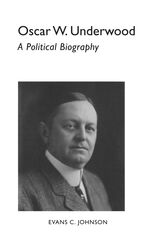 Oscar W. Underwood: A Political Biography
Evans C. Johnson
University of Alabama Press, 2006 Although Oscar W. Underwood was considered a titan of his age, few American political figures have suffered such neglect as he. Except for his candidacy for the Democratic nomination in 1924, his political career is largely forgotten even in Alabama. The one place in which Underwood is well remembered is in the folklore of Congress, where he is widely regarded as a great party leader who had mastered the rules perhaps as thoroughly as any member of Congress. This mastery, together with steady work, personal magnetism, and a willingness to compromise, made him effective as chairman of the Ways and Means Committee in formulating a majority program after the Democrats seized control of the House in 1910. Pat Harrison, Underwood's lieutenant as minority leader, referred to Underwood as the "greatest natural parliamentarian, the greatest leader of a law-making body that I ever saw." --from the Preface to Oscar W. Underwood: A Political Biography
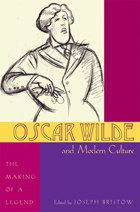 Oscar Wilde and Modern Culture: The Making of a Legend
Joseph Bristow
Ohio University Press, 2009 Oscar Wilde and Modern Culture: The Making of a Legend explores the meteoric rise, sudden fall, and legendary resurgence of an immensely influential writer’s reputation from his hectic 1881 American lecture tour to recent Hollywood adaptations of his dramas. Always renowned—if not notorious—for his fashionable persona, Wilde courted celebrity at an early age. Later, he came to prominence as one of the most talented essayists and fiction writers of his time. In the years leading up to his two-year imprisonment, Wilde stood among the foremost dramatists in London. But after he was sent down for committing acts of “gross indecency” it seemed likely that social embarrassment would inflict irreparable damage to his legacy. As this volume shows, Wilde died in comparative obscurity. Little could he have realized that in five years his name would come back into popular circulation thanks to the success of Richard Strauss’s opera Salome and Robert Ross’s edition of De Profundi. With each succeeding decade, the twentieth century continued to honor Wilde’s name by keeping his plays in repertory, producing dramas about his life, adapting his works for film, and devising countless biographical and critical studies of his writings. This volume reveals why, more than a hundred years after his demise, Wilde’s value in the academic world, the auction house, and the entertainment industry stands higher than that of any modern writer.
Oscar Wilde in America: The Interviews
Edited by Matthew Hofer and Gary Scharnhorst
University of Illinois Press, 2013 Better known in 1882 as a cultural icon than a serious writer, Oscar Wilde was brought to North America for a major lecture tour on Aestheticism and the decorative arts. With characteristic aplomb, he adopted the role as the ambassador of Aestheticism, and he tried out a number of phrases, ideas, and strategies that ultimately made him famous as a novelist and playwright. This exceptional volume cites all ninety-one of Wilde's interviews and contains transcripts of forty-eight of them, and it also includes his lecture on his travels in America.
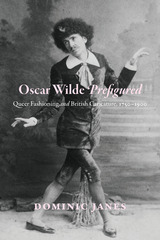 Oscar Wilde Prefigured: Queer Fashioning and British Caricature, 1750-1900
Dominic Janes
University of Chicago Press, 2016 “I do not say you are it, but you look it, and you pose at it, which is just as bad,” Lord Queensbury challenged Oscar Wilde in the courtroom—which erupted in laughter—accusing Wilde of posing as a sodomite. What was so terrible about posing as a sodomite, and why was Queensbury’s horror greeted with such amusement? In Oscar Wilde Prefigured, Dominic Janes suggests that what divided the two sides in this case was not so much the question of whether Wilde was or was not a sodomite, but whether or not it mattered that people could appear to be sodomites. For many, intimations of sodomy were simply a part of the amusing spectacle of sophisticated life.
Oscar Wilde Prefigured is a study of the prehistory of this “queer moment” in 1895. Janes explores the complex ways in which men who desired sex with men in Britain had expressed such interests through clothing, style, and deportment since the mid-eighteenth century. He supplements the well-established narrative of the inscription of sodomitical acts into a homosexual label and identity at the end of the nineteenth century by teasing out the means by which same-sex desires could be signaled through visual display in Georgian and Victorian Britain. Wilde, it turns out, is not the starting point for public queer figuration. He is the pivot by which Georgian figures and twentieth-century camp stereotypes meet. Drawing on the mutually reinforcing phenomena of dandyism and caricature of alleged effeminates, Janes examines a wide range of images drawn from theater, fashion, and the popular press to reveal new dimensions of identity politics, gender performance, and queer culture.
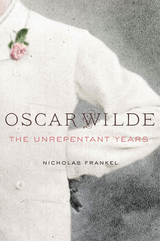 Oscar Wilde: The Unrepentant Years
Nicholas Frankel
Harvard University Press, 2017 Nicholas Frankel presents a new and revisionary account of Wilde’s final years, spent in poverty and exile on the European continent following his release from an English prison for the crime of “gross indecency” between men. Oscar Wilde: The Unrepentant Years challenges the prevailing, traditional view of Wilde as a broken, tragic figure, a martyr to Victorian sexual morality, and shows instead that he pursued his post-prison life with passion, enjoying new liberties while trying to resurrect his literary career.
After two bitter years of solitary confinement, Frankel shows, Wilde emerged from prison in 1897 determined to rebuild his life along lines that were continuous with the path he had followed before his conviction, unapologetic and even defiant about the crime for which he had been convicted. England had already done its worst. In Europe’s more tolerant atmosphere, he could begin to live openly and without hypocrisy.
Frankel overturns previous misunderstandings of Wilde’s relationship with Lord Alfred Douglas, the great love of his life, with whom he hoped to live permanently in Naples, following their secret and ill-fated elopement there. He describes how and why the two men were forced apart, as well as Wilde’s subsequent relations with a series of young men. Oscar Wilde pays close attention to Wilde’s final two important works, De Profundis and The Ballad of Reading Gaol, while detailing his nearly three-year residence in Paris. There, despite repeated setbacks and open hostility, Wilde attempted to rebuild himself as a man—and a man of letters.
 Oscar Wilde's Decorated Books
Nicholas Frankel
University of Michigan Press, 2000 Oscar Wilde's Decorated Books addresses Wilde's obsession with the visual appearance or "look" of his published writings. It examines the role played by graphic designers in the production of Wilde's writings and demonstrates how marginal and decorative elements of the printed book affect interpretation. Nicholas Frankel approaches Wilde's writings as graphical or "printed" phenomena that reveal their significance through the beautiful and elaborate decorations with which they were published in Wilde's own lifetime. With extensive reference to and exposition on Wilde's theoretical writings and letters, the author shows that, far from being marginal elements of the literary text, these decorative devices were central to Wilde's understanding of his own writings as well as to his "aesthetic" theory of language. Extensive illustrations support Frankel's arguments. While its principal appeal will be to students of Oscar Wilde and the Victorian fin-de-si+cle, this book will also appeal to textual and literary scholars, art historians, and linguistic philosophers interested in the graphical nature of the linguistic sign. Nicholas Frankel is Assistant Professor of English, Virginia Commonwealth University.
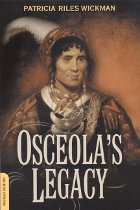 Osceola's Legacy
Patricia Riles Wickman
University of Alabama Press, 2006 A bestselling, re-evaluation of a major Native American resistance leader. Named an Outstanding Book by the Gustavus Myers Center for the Study of Human Rights. Born in Alabama to a Muscogee/Creek Indian mother and an English father, Osceola, born Billy Powell, came to prominence in the 1830s for resisting the U. S. government's sweep into Florida. He protested the government's Florida Indian removal, killed a pro-emigration Indian leader and then made war on the US government. Osceola's Legacy draws on a wealth of sources, including letters, diaries, and artifacts to bring this fascinating figure and the central role he played in the Second Seminole War into vivid focus. Of particular interest is a chapter on the forensic report on Osceola's grave as well as descriptions and the illustrations of his personal property at the time of his death.
Osceola's Legacy is significant for its genealogy and archaeological study of this Native American and his interaction with the federal government during the 1800s. The catalog of photographs of Osceola portraits and his personal possessions makes this a worthwhile reference book as well.
Oscillator Circuits: Frontiers in design, analysis and applications
Yoshifumi Nishio
The Institution of Engineering and Technology, 2017 An electronic oscillator is an electronic circuit that produces a periodic (often a sine wave, a square wave, or a pulse trains) or a non-periodic (a double-mode wave or a chaotic wave) oscillating electronic signal. Oscillators convert direct current from a power supply to an alternating current signal, and are widely used in many electronic devices. This book surveys recent developments in the design, analysis and applications of this important class of circuits.
Oscillator Design and Computer Simulation
Randall W. Rhea
The Institution of Engineering and Technology, 1995 This second edition of the number one guide to oscillator design presents a comprehensive, unified approach to oscillator design that can be used with a wide range of active devices and resonator types. Resonator types covered include: L-C, crystal, SAW, dielectric resonator, coaxial line, stripline and microstrip. This text covers modern CAD synthesis and analysis techniques and is valuable to experienced engineers as well as to those new to oscillator design. The books topics include: Analysis fundamentals, oscillator fundamentals, limiting and starting, biasing, noise, computer simulation and examples and case studies.
Osho Rajneesh: Studies in Contemporary Religion
Judith M. Fox
Signature Books, 2002 Authentic religious experience includes both meditation and celebration, according to the twentieth-century Indian guru Osho Rajneesh (1931-90). Blending Tantra, Zen, and Western psychotherapy into his teachings, Osho produced incisive commentaries on religious mysticism and devised unique, “active meditation” that elicited emotional catharsis.
Highly unorthodox, he courted controversy and was condemned for being a “sex guru.” His Oregon headquarters, Rajneeshpuram, proved to be a short-lived utopia that provoked antagonism and only added to his notoriety. But his ashram in Poona, India, continues to thrive, as do Osho centers in Europe and elsewhere. His adherents number in the thousands. His books have become bestsellers around the globe.
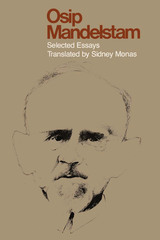 Osip Mandelstam: Selected Essays
Translated by Sidney Monas
University of Texas Press, 1977 Osip Mandelstam, who died anonymously in a Siberian transit-camp in 1938, is now generally considered to be among the four or five greatest Russian poets of the twentieth century. The essays in this volume, presented in an exceptionally scrupulous and true translation, were selected because they represent Mandelstam's major poetic themes and his thought on literature, language and culture, and the work and place of the poet. Mandelstam's views on literature are profound and original, and they are expressed in striking and dramatic, if sometimes difficult, prose. These essays deal with such topics as the poetic process and the relationship of poetry to politics, culture, the traditions of the past, and the demands of the present. Sidney Monas's lively introduction to the work and life of Mandelstam combines the virtues of both the critical essay and detached scholarship. Keeping biographical detail to a minimum, Monas concentrates on the pattern that runs through the essays and lends them that coherence often noted in Mandelstam's poetry.
 Osiris, Volume 11: Science in the Field
Edited by Henrika Kuklick and Robert E. Kohler
University of Chicago Press, 1996 Unlike many histories of scientific practices, which deal with laboratory experiments, this collection of essays focuses on scientific investigations conducted out of doors: biological, physical, and social. Case studies from varied disciplines explore the material, human, and cultural aspects of fieldwork, and the relationships between scientific activity and popular outdoor activities such as exploration and recreation.
Included are "Gender, Culture, and Astrophysical Fieldwork: Elizabeth Campbell and the Lick Observatory-Crocker Eclipse Expeditions," by Alex Soo-jung-Kim Pang; "Wallace in Other Lands," by Jane Camerini; "The Heroic Science of Glacier Motion," by Bruce Hevly; "Objectivity or Heroism: Invisibility of Women in Science," by Naomi Oreskes; "When Nature is the Zoo: Vision and Power in the Art and Science of Natural History," by Gregg Mitman; "Manly Men in Scientific Balloons: Meteorology and the Victorian Scientist as Romantic Hero," by Jennifer Tucker; "Paul du Chaillu and Construction of Authority," by Stuart McCook; "Of Sangfroid and Sphinx Moths: Cruelty, Public Relations, and Entomology, 1800-1840," by Anne Larsen Hollerbach; "The Ship as a Scientific Instrument in the 18th Century," by Richard Sorrenson; and "'A Tent with a View:' Colonial Officers, Anthropologists, and the Making of the Field in Northern Rhodesia, 1937-1960," by Lynette Schumaker.
 Osiris, Volume 12: Women, Gender, and Science: New Directions
Edited by Sally Gregory Kohlstedt and Helen Longino
University of Chicago Press, 1997 What do research on women in science and research on science and gender have to do with each other? This volume brings together prominent historians and philosophers of science to examine women's participation in science, gender and science, and the potential for interaction between these two pieces of a larger puzzle. The eleven chapters included here explore a number of interrelated topics: the experiences of individual women working in science; the demographic patterns of and support for women in specific fields; the gendered construction of scientific education and terminology; the impact of feminist critiques on contemporary science; and more. The result is a collection of works that are rich in suggestions, specific in their evidence, and grounded in the complex discussion of gender in late twentieth century cultural and academic life.
 Osiris, Volume 13: Beyond Joseph Needham: Science, Technology, and Medicine in East and Southeast Asia
Edited by Morris Low
University of Chicago Press, 2000 Devoted to the history of non-Western science, technology, and medicine, this path-breaking volume goes beyond the legacy of the late historian of Chinese science, Joseph Needham, by covering an unprecedented range of countries and by adopting new approaches. The seventeen chapters address topics in China, Indonesia, Japan, the Philippines, South Korea, Taiwan, and Thailand. However, the contributors do not view the histories of these countries in isolation. Many adopt a cross-cultural approach by tracing interaction with other Asian countries and the West. The volume begins with four chapters that provide a "big picture" overview of science and civilization in Asia. These are followed by more focused essays, which deal with aspects of science, technology, and medicine in specific countries.
Specialist and non-specialist readers alike will leave this volume with a strong sense of the political and economic imperatives behind knowledge systems in Eastern Asia, their cultural contexts, and how they have coexisted along with those in the West.
Osiris, Volume 14: Commemorative Practices in Science: Historical Perspectives on the Politics of Collective Memory
Edited by Pnina G. Abir-Am and Clark A. Elliot
University of Chicago Press, 2000 This volume breaks new ground in the study of how national culture, disciplinary tradition, epistemological choice, and political expediency affect the construction of collective memory and, then, how historians work with—and sometimes against—those constructions. Essays focus on a variety of commemorative rites, ranging from the quincentennial of Copernicus to the centennials of Pasteur, Darwin, and Planck; from the tercentenary of Harvard to the half centennial of Los Alamos; from the centennial of evolutionary theory to anniversaries of research schools in molecular biology.
Contributors include Clark A. Elliott, Owen Gingerich, Dieter Hoffmann, Dominque Pestre, Robert W. Seidel, and V. Betty Smocovitis.
Osiris, Volume 15: Nature and Empire: Science and the Colonial Enterprise
Edited by Roy MacLeod
University of Chicago Press, 2001 Surveying Africa, Asia, and the Americas, this important new collection looks at roles of science, medicine, and technology during five centuries of colonialism. This thought-provoking history examines the many intersections of science, politics, and culture during colonialism, including the relation between racism and medical science, "exploration" and its potential for wealth, and the perceived differences between indigenous knowledge and European science. Sixteen chapters focus on such topics as intellectual property rights and biodiversity, "acclimatizing" the world, and science and development. Bringing together contributions from scholars of history and science from around the globe, Nature and Empire forges a new path for readers interested in science and society during the modern era.
|
|

